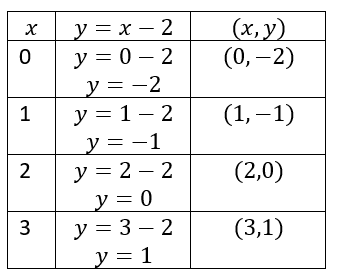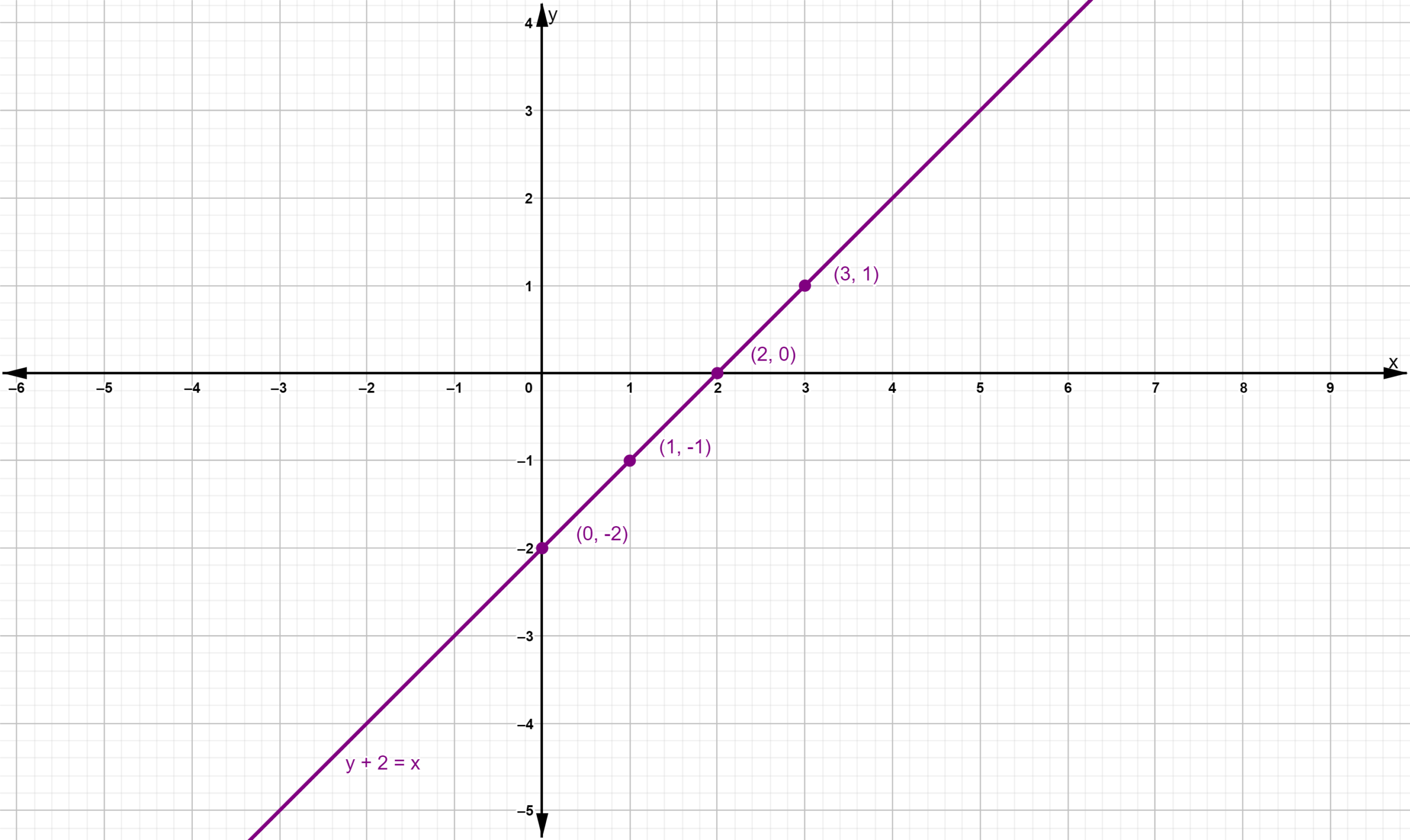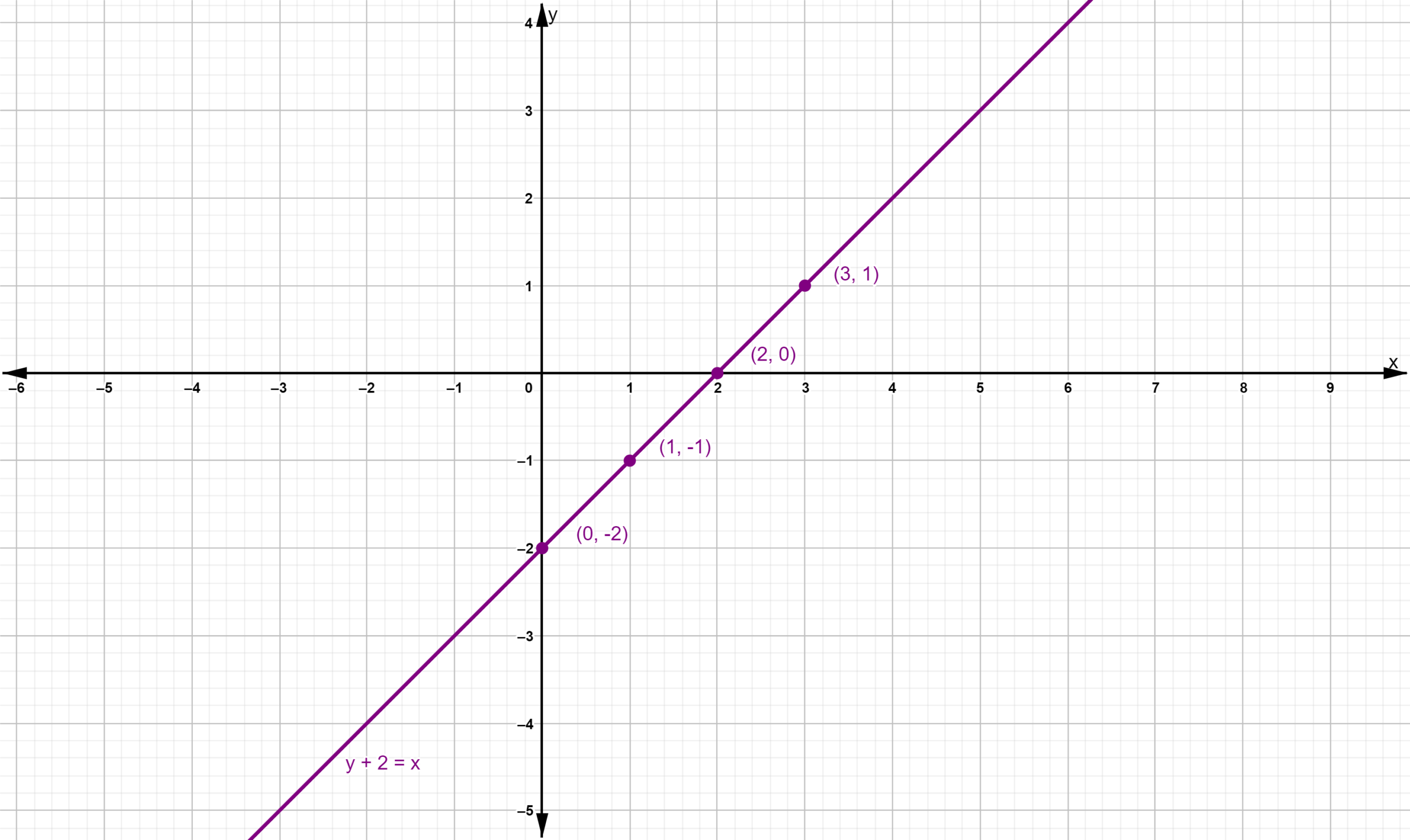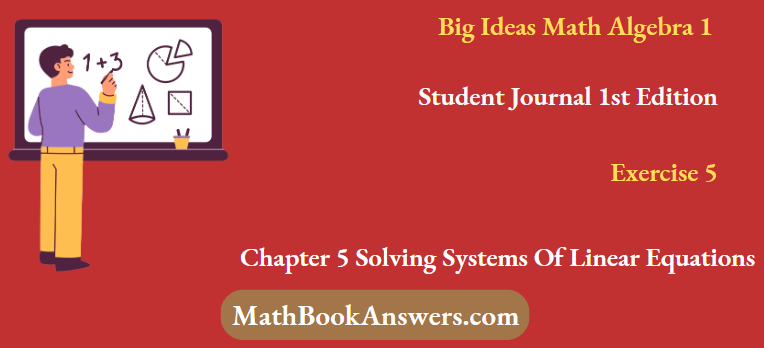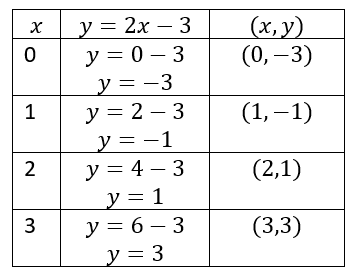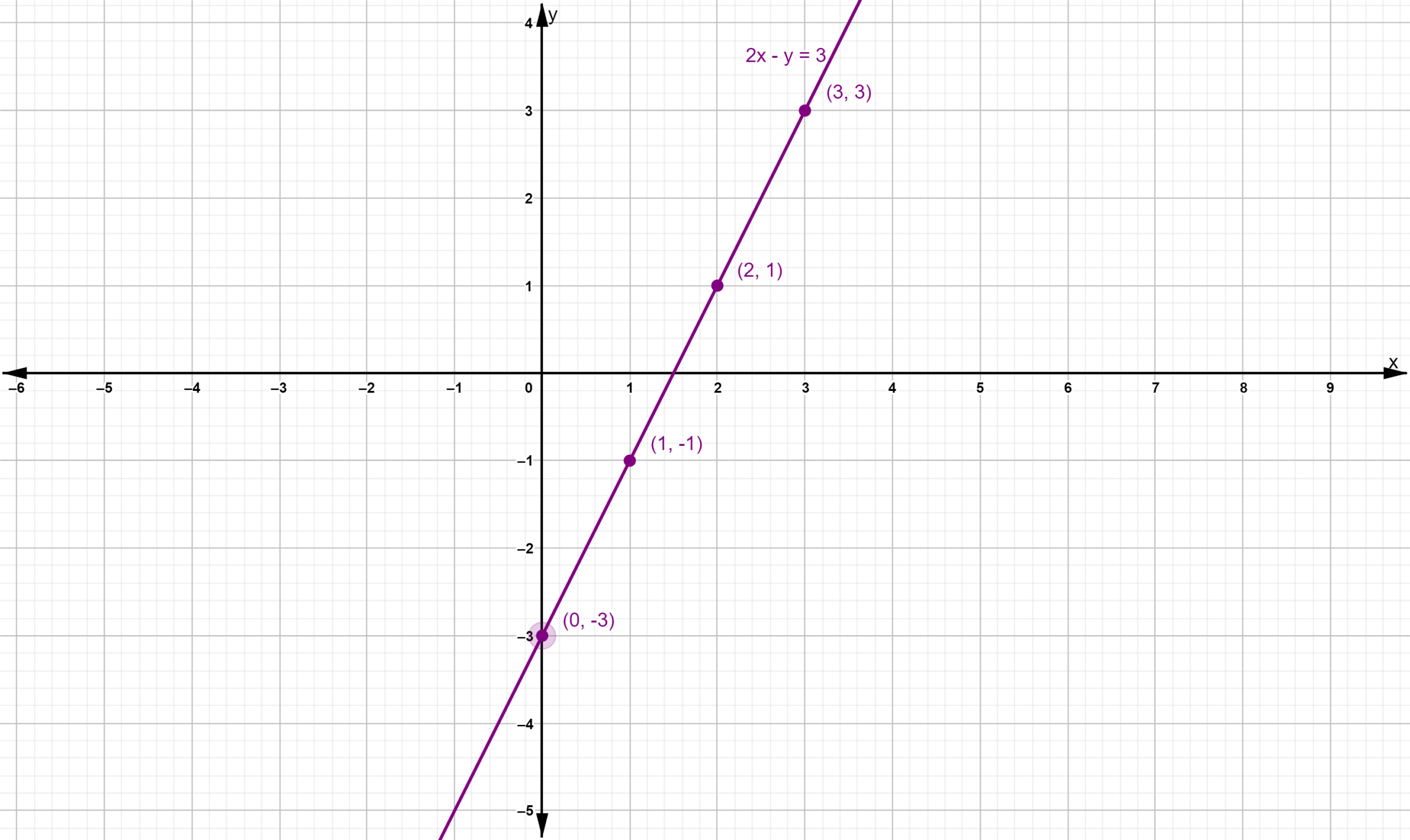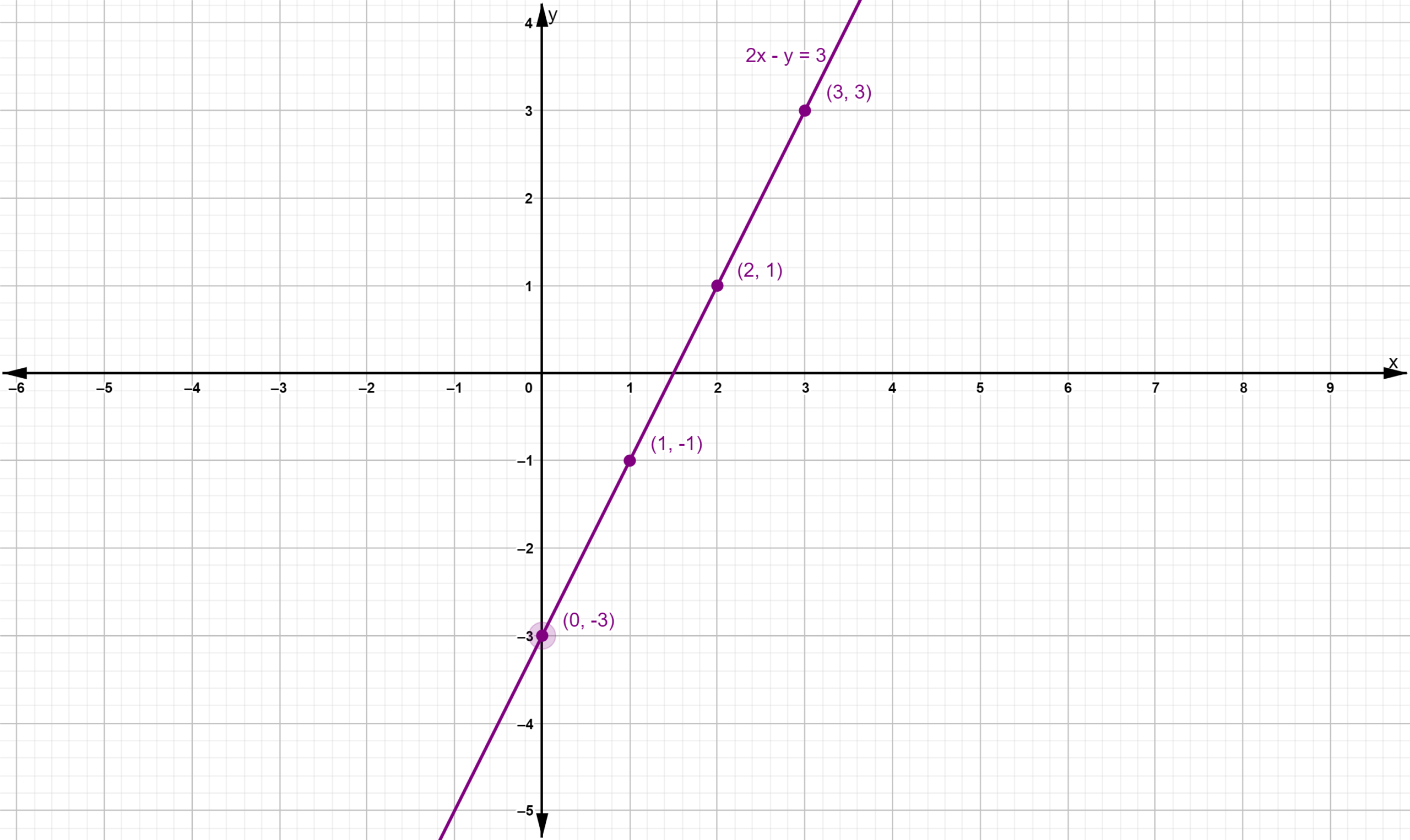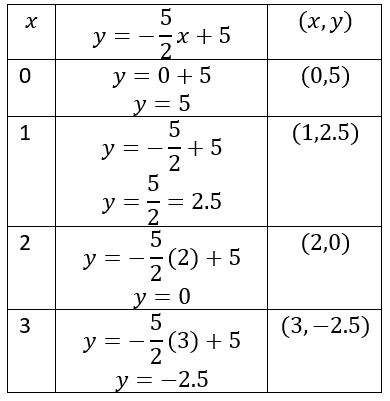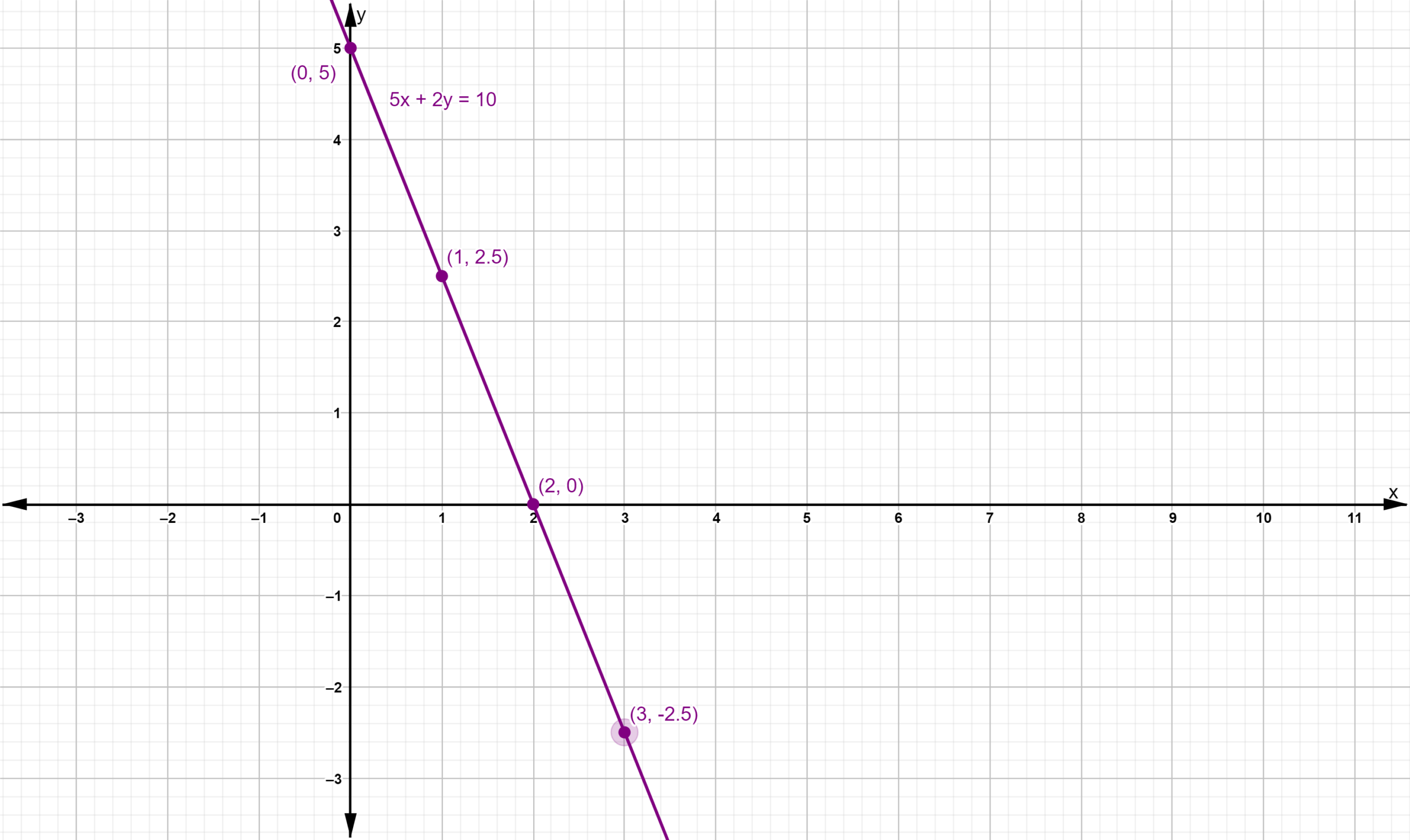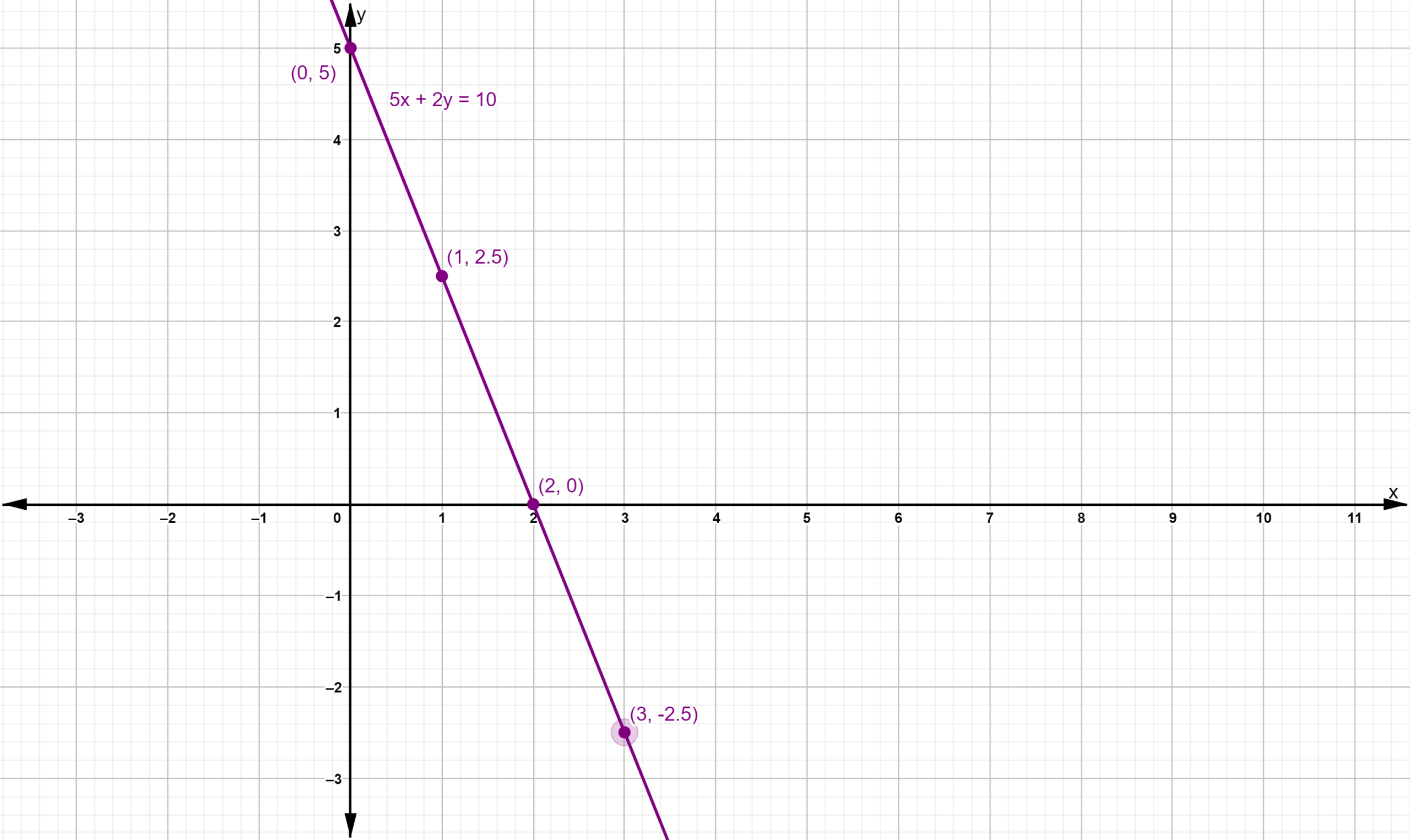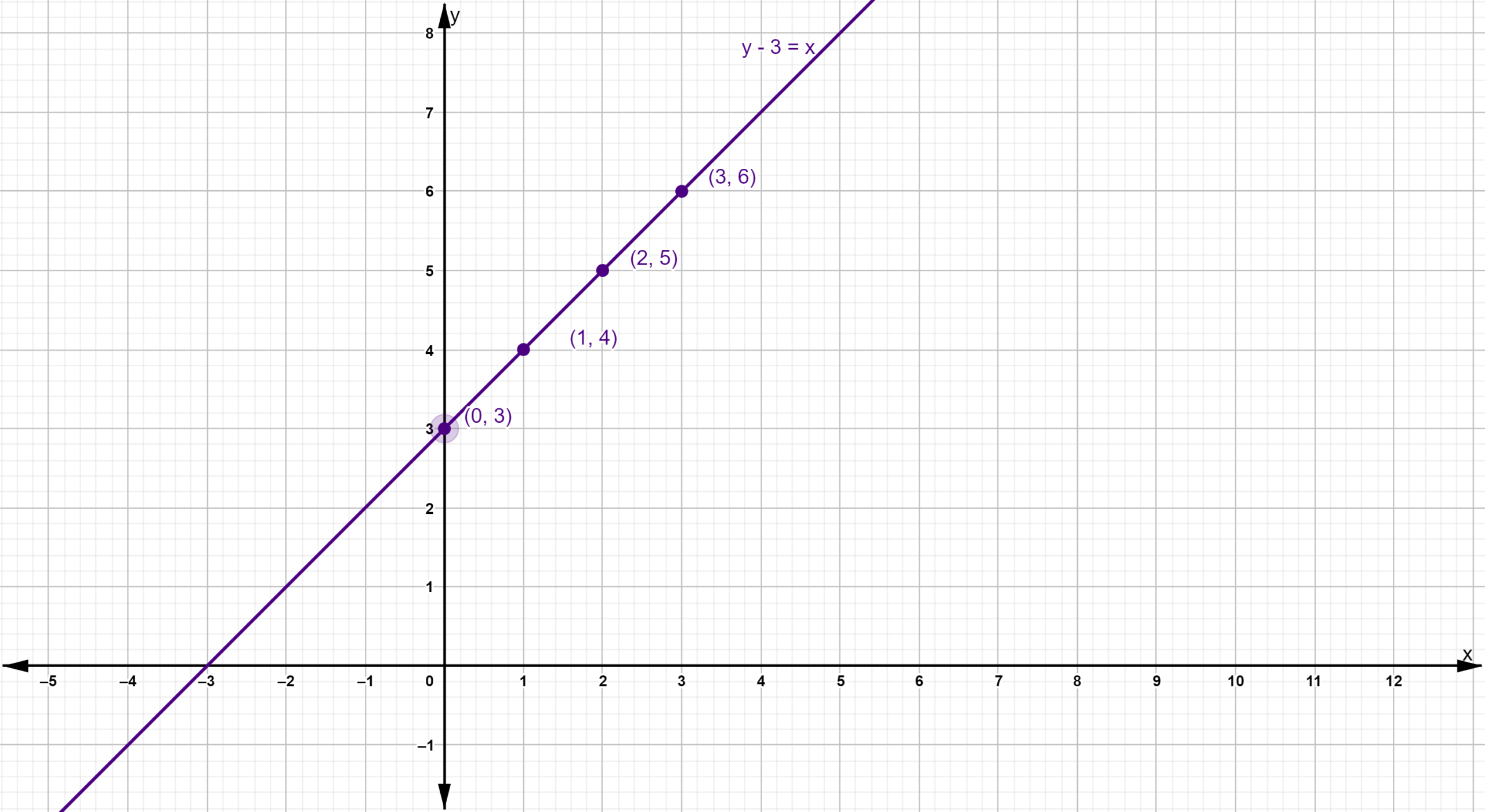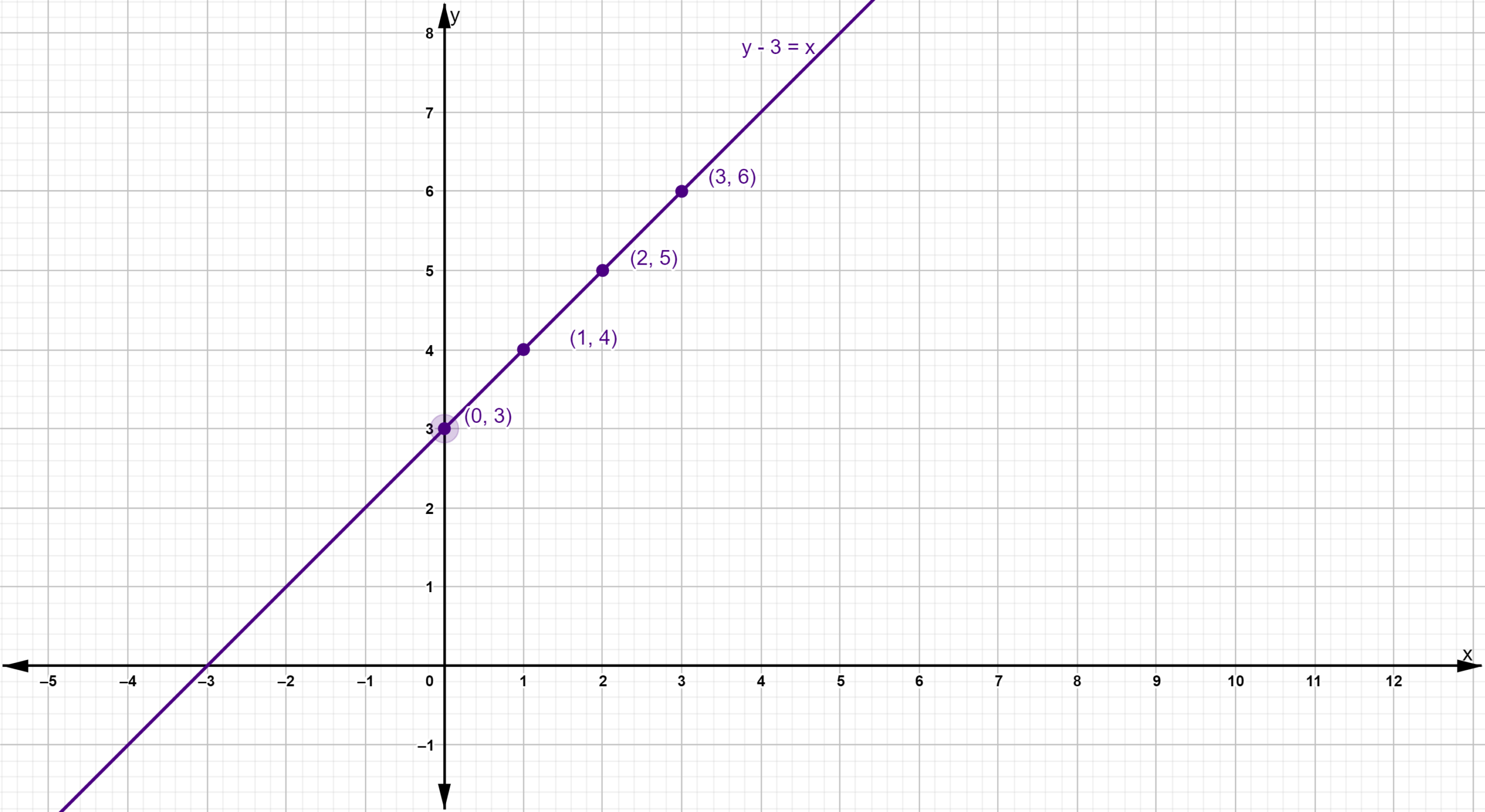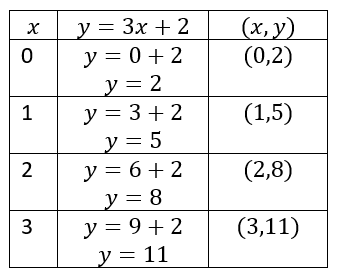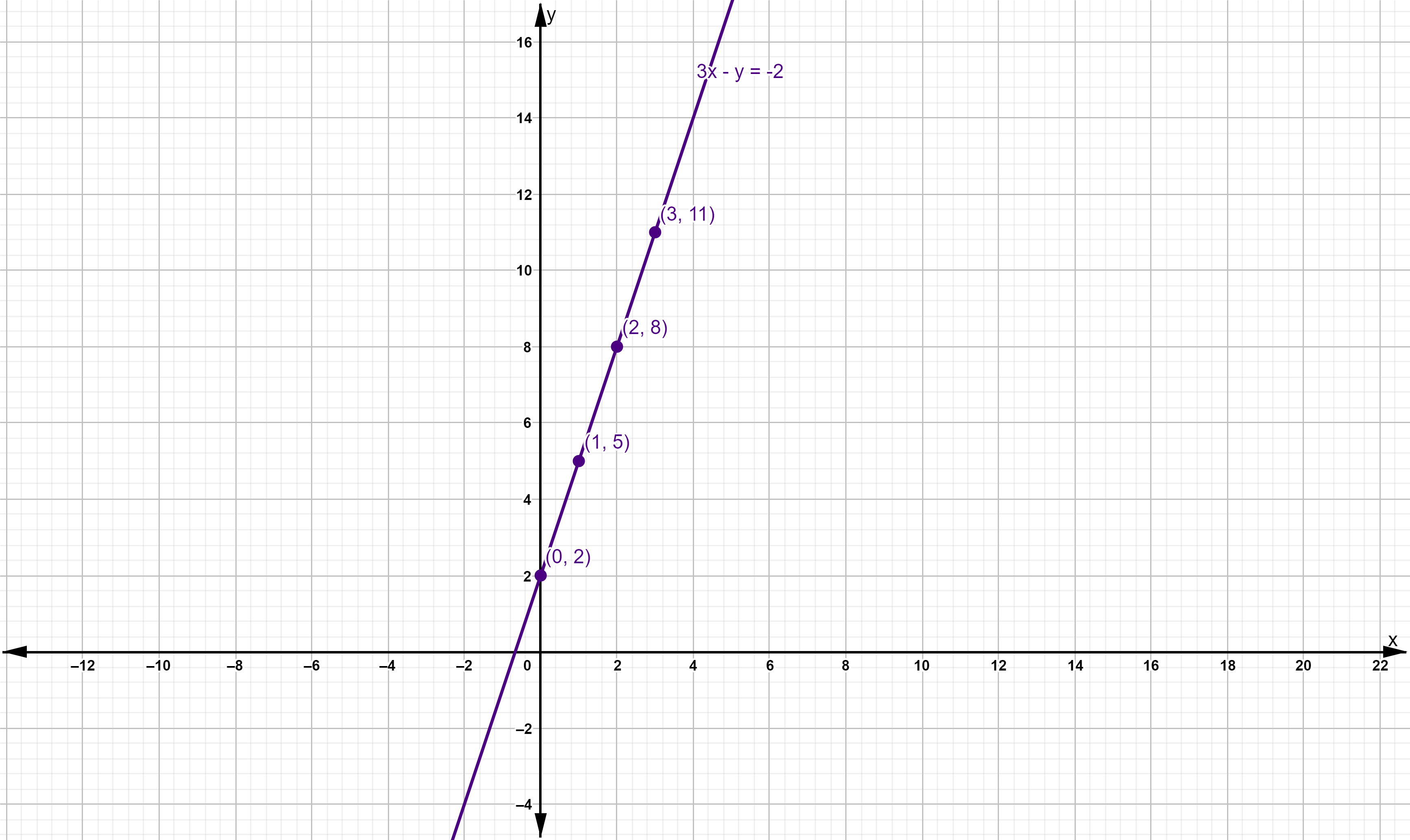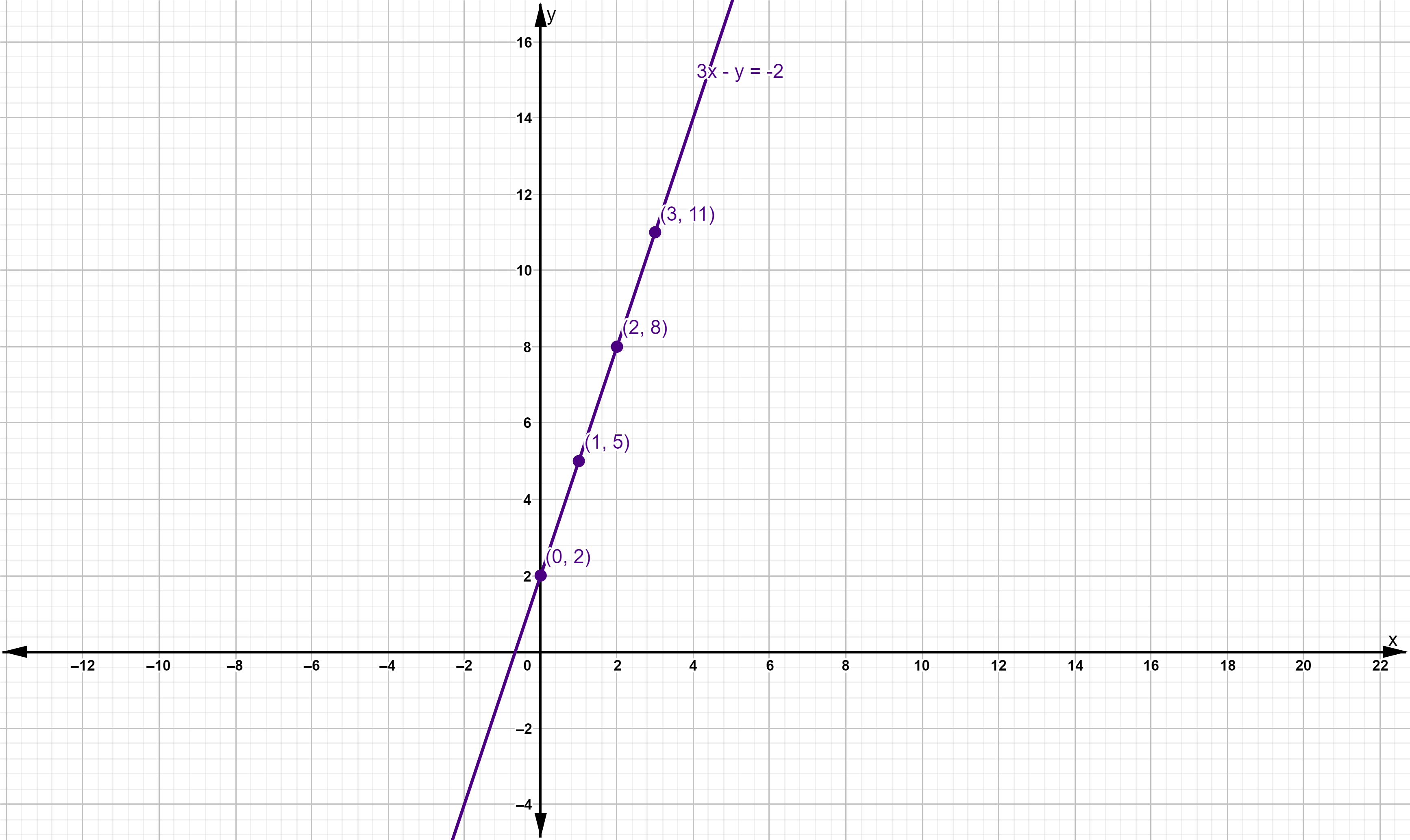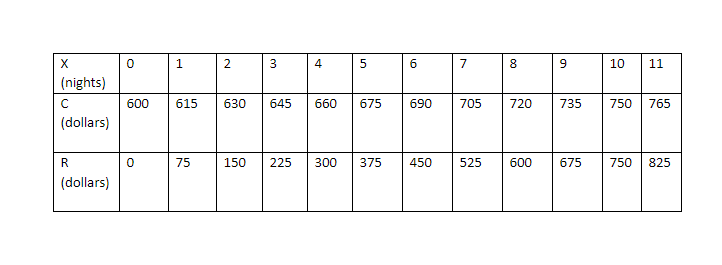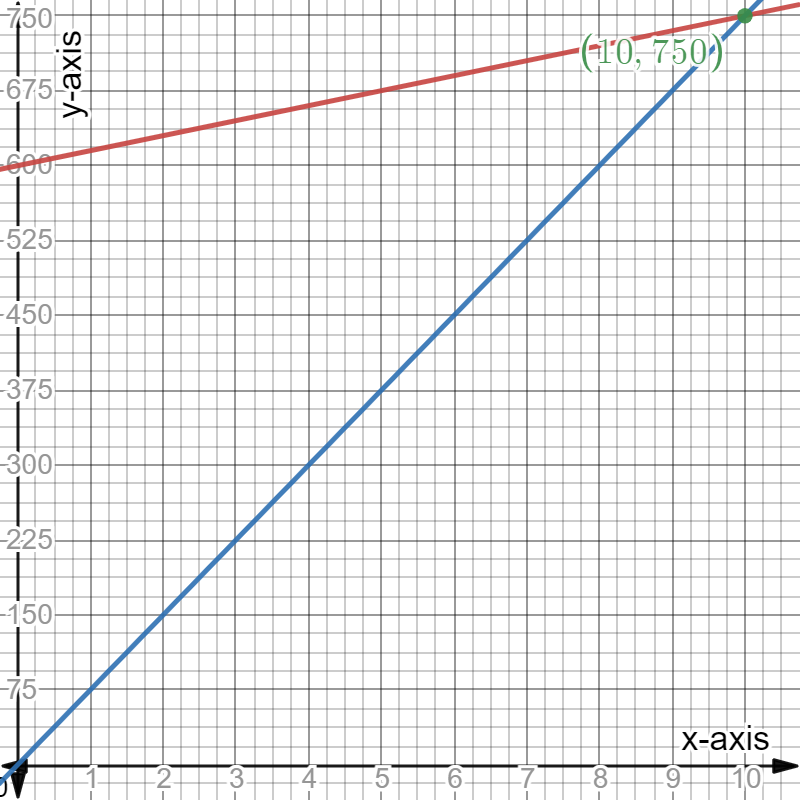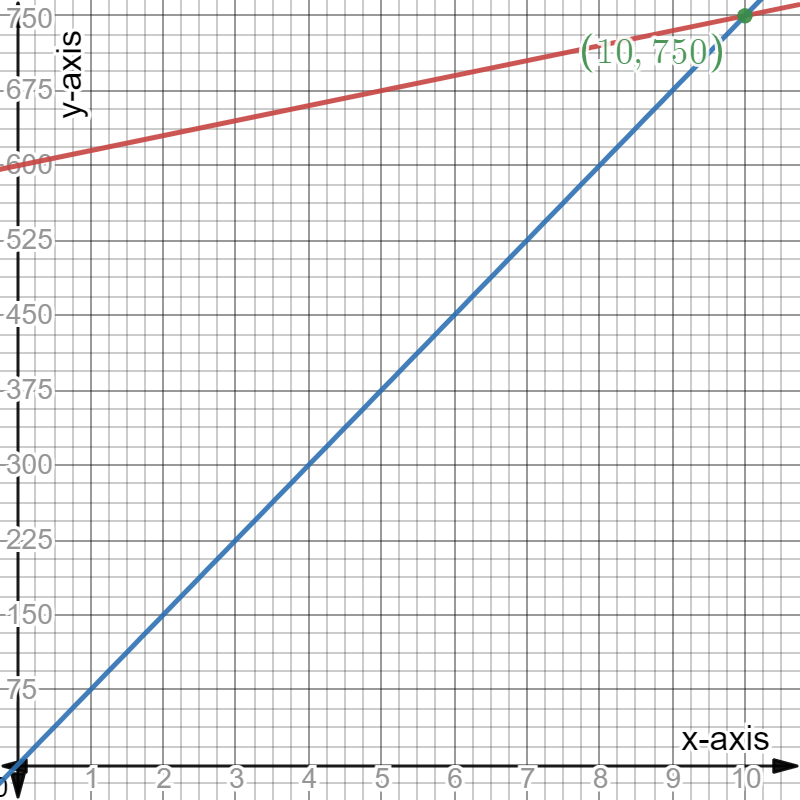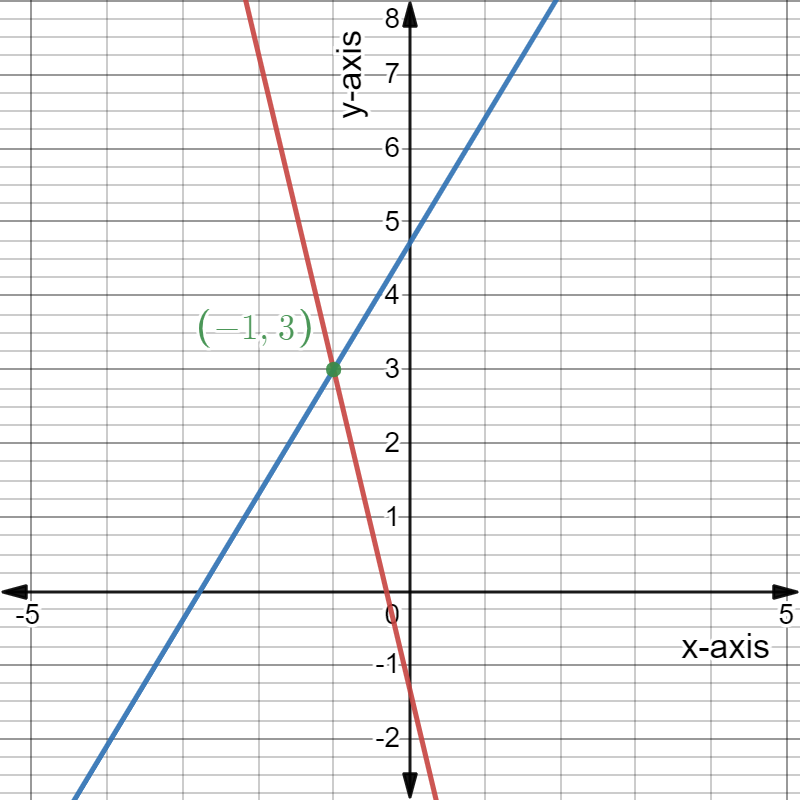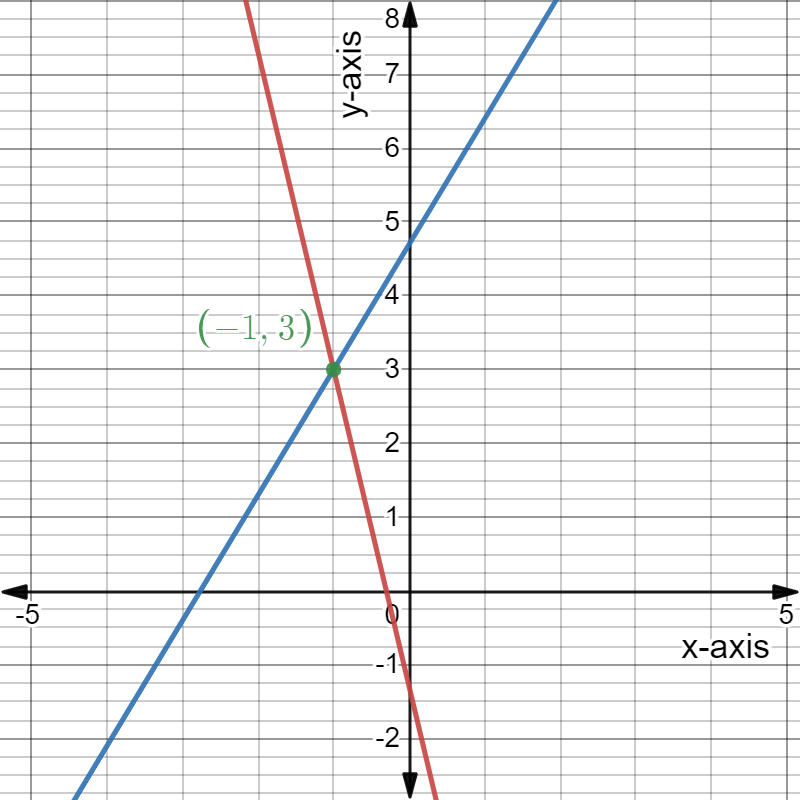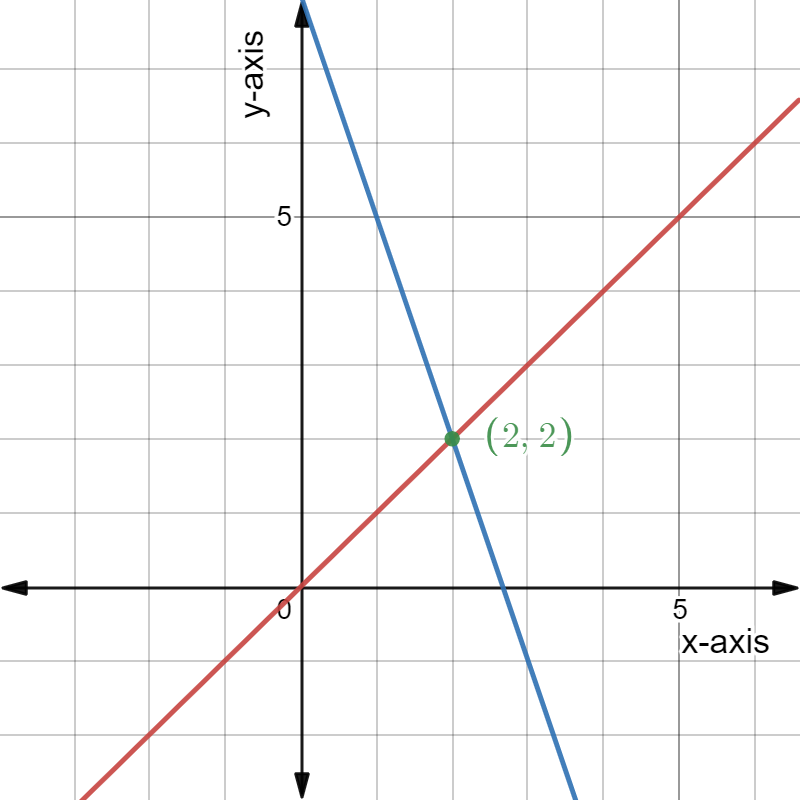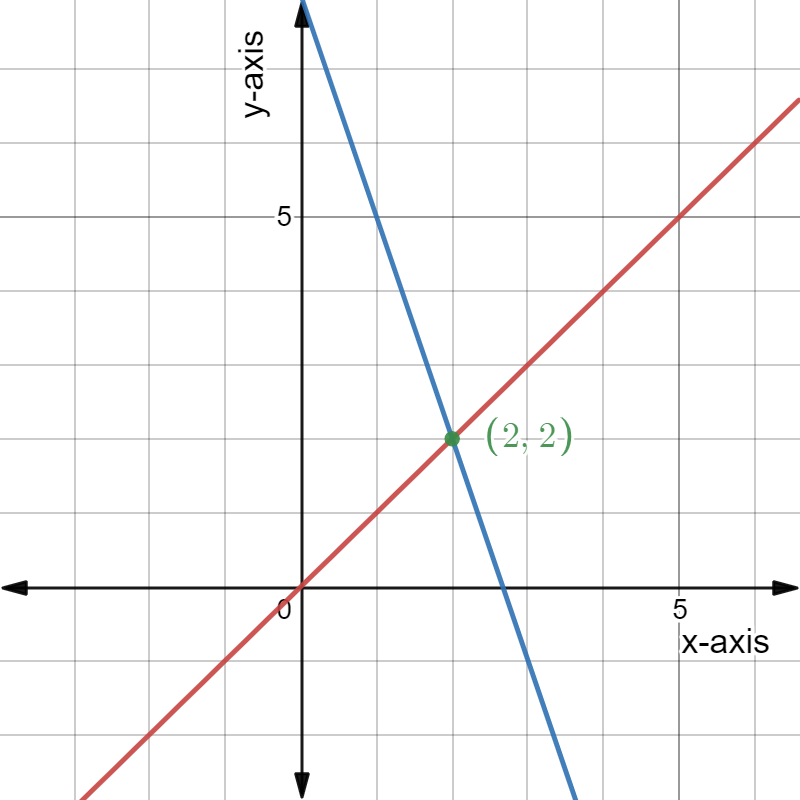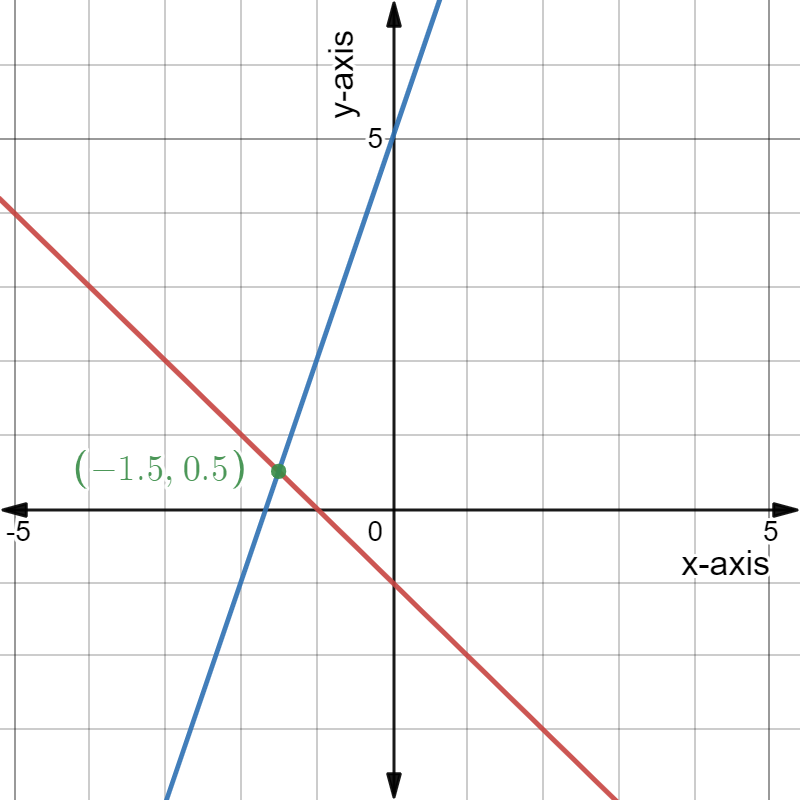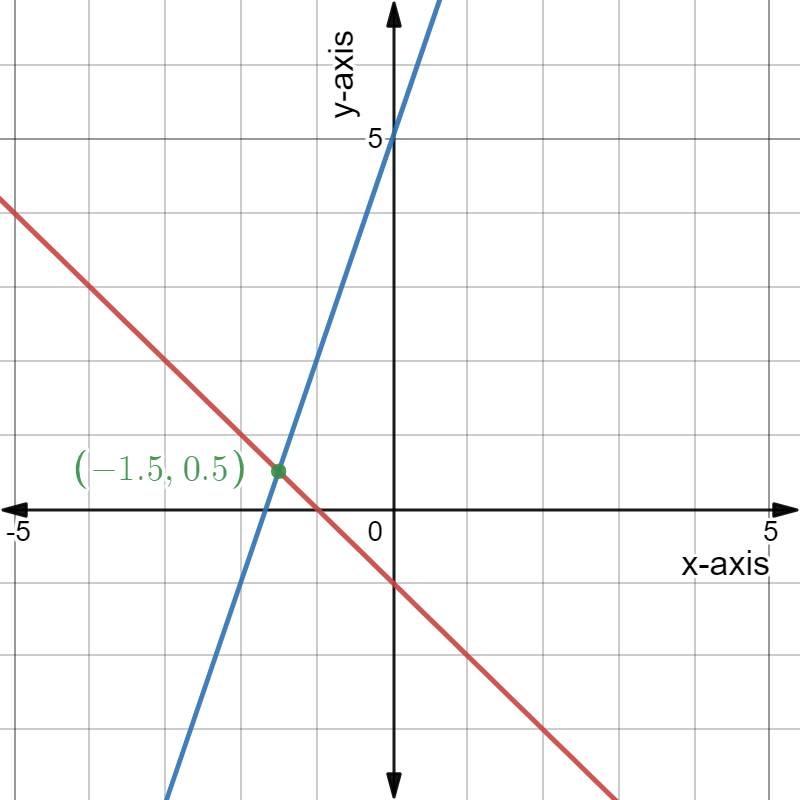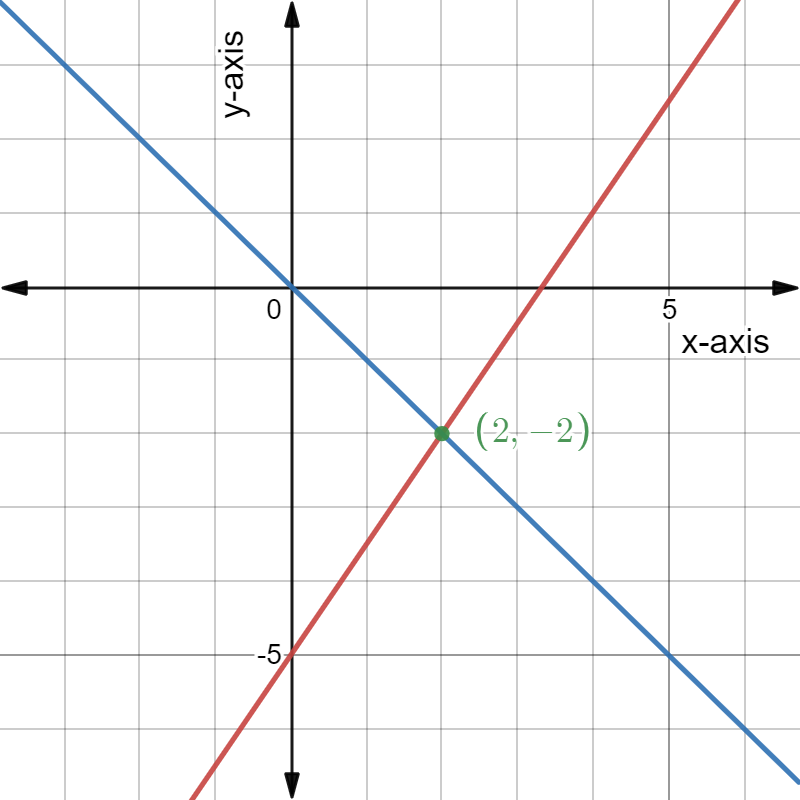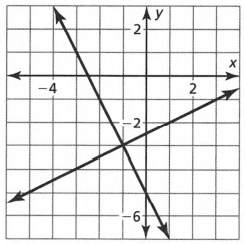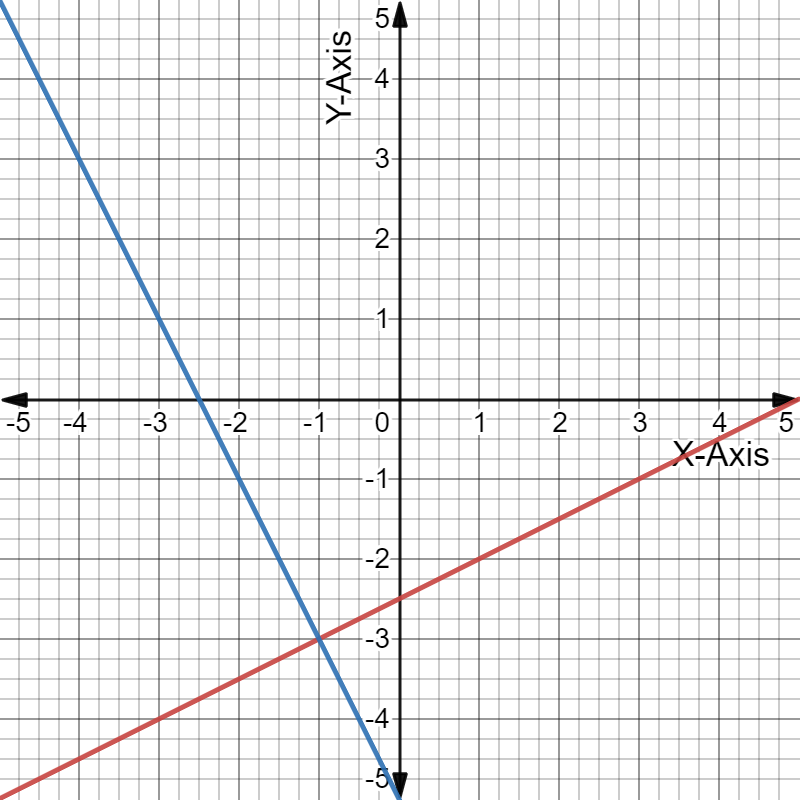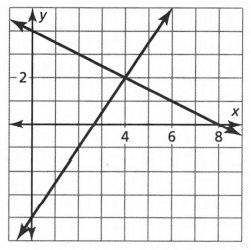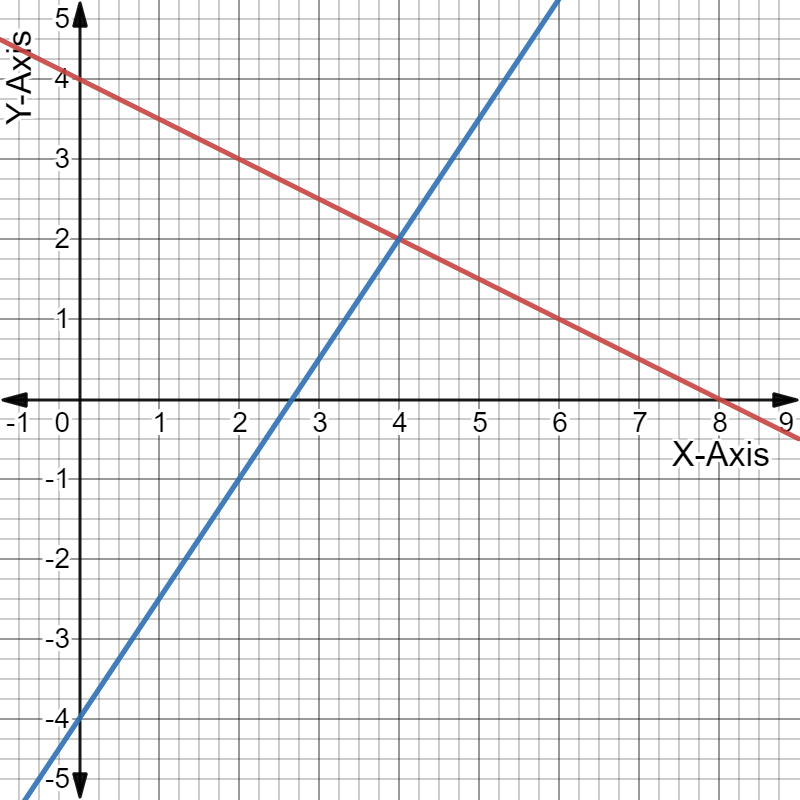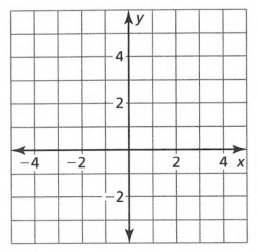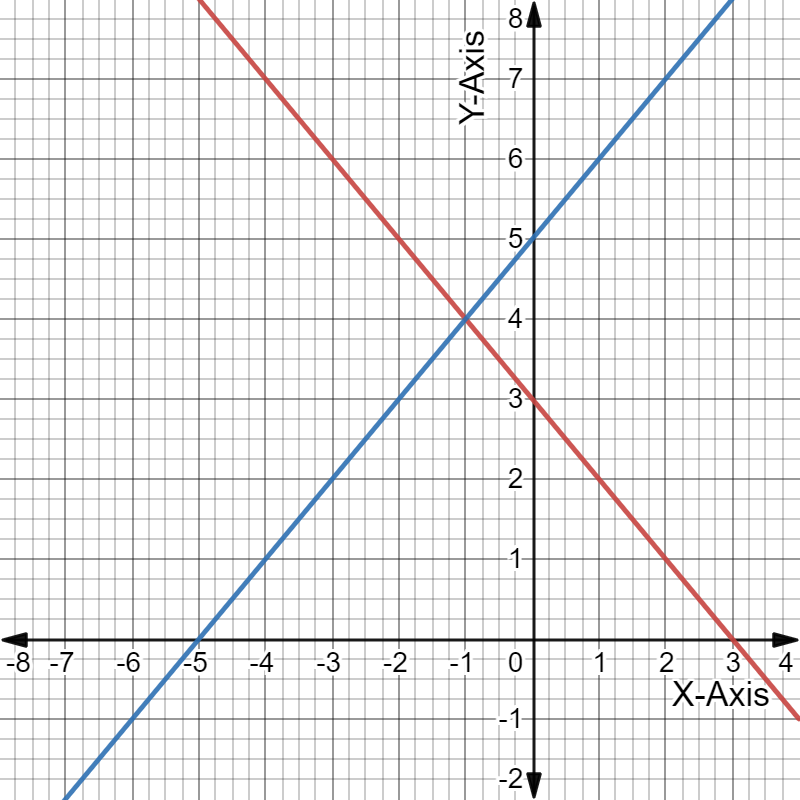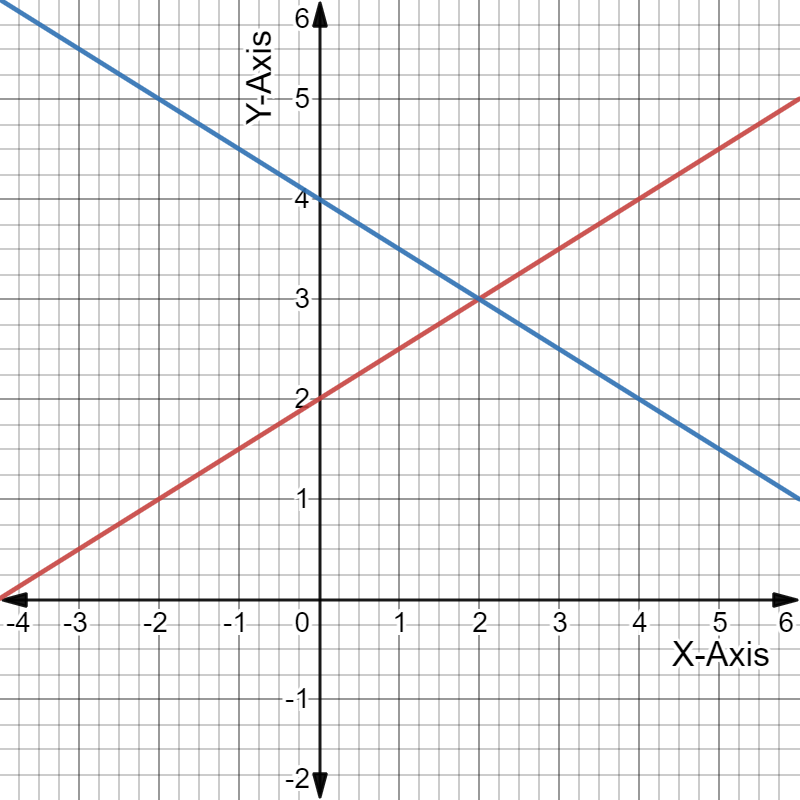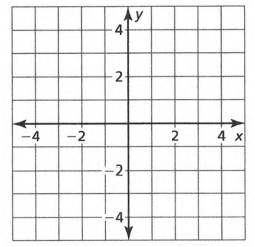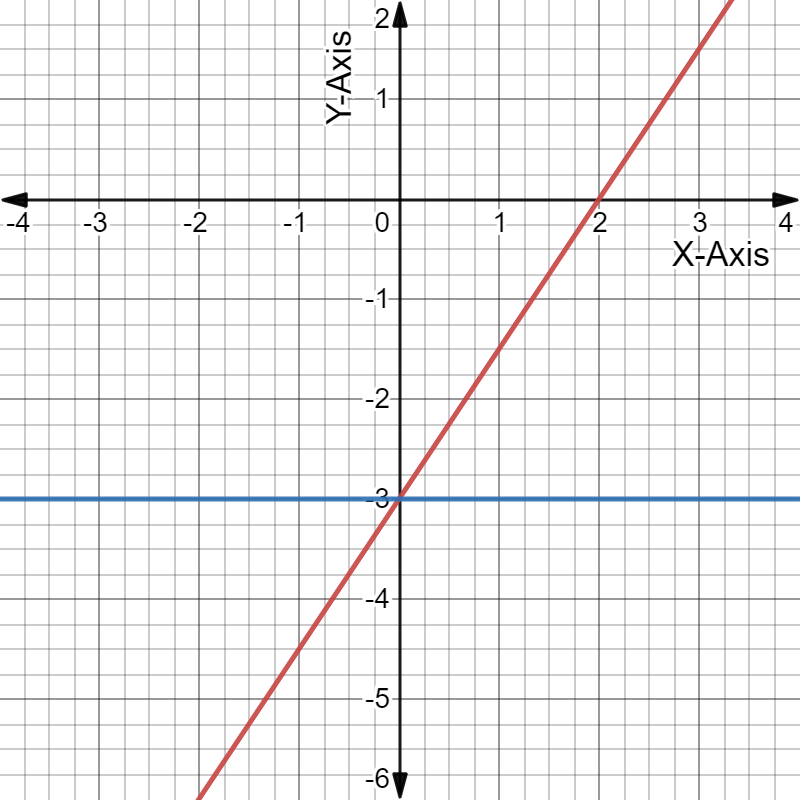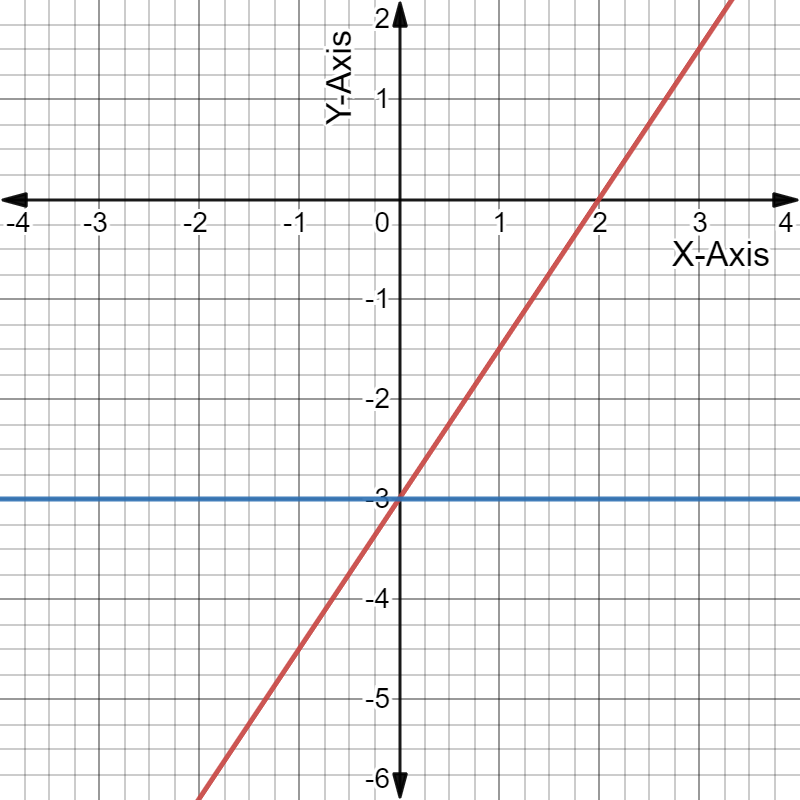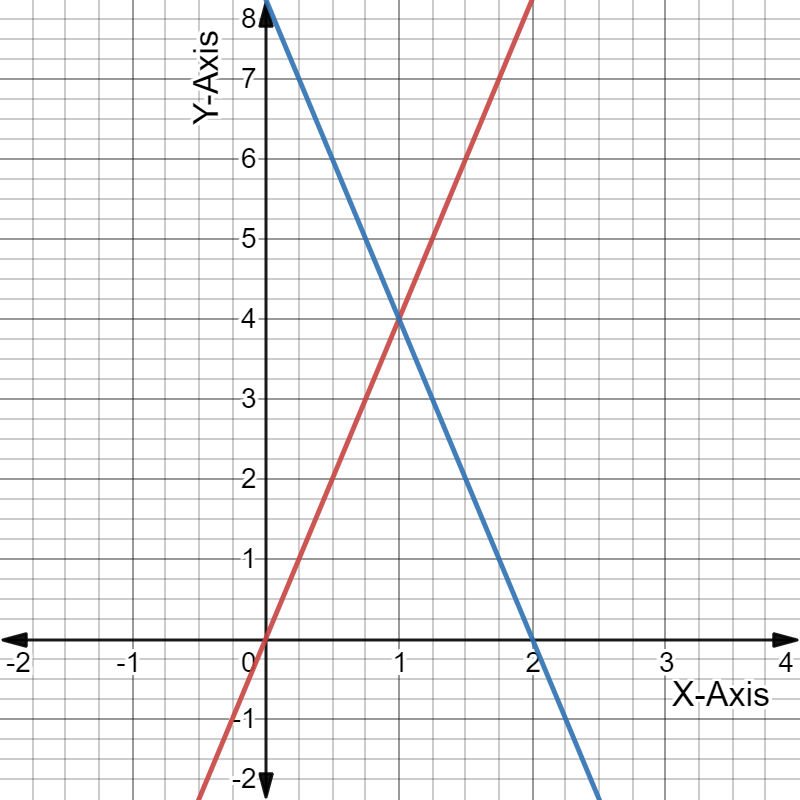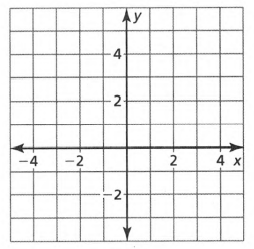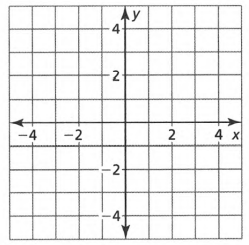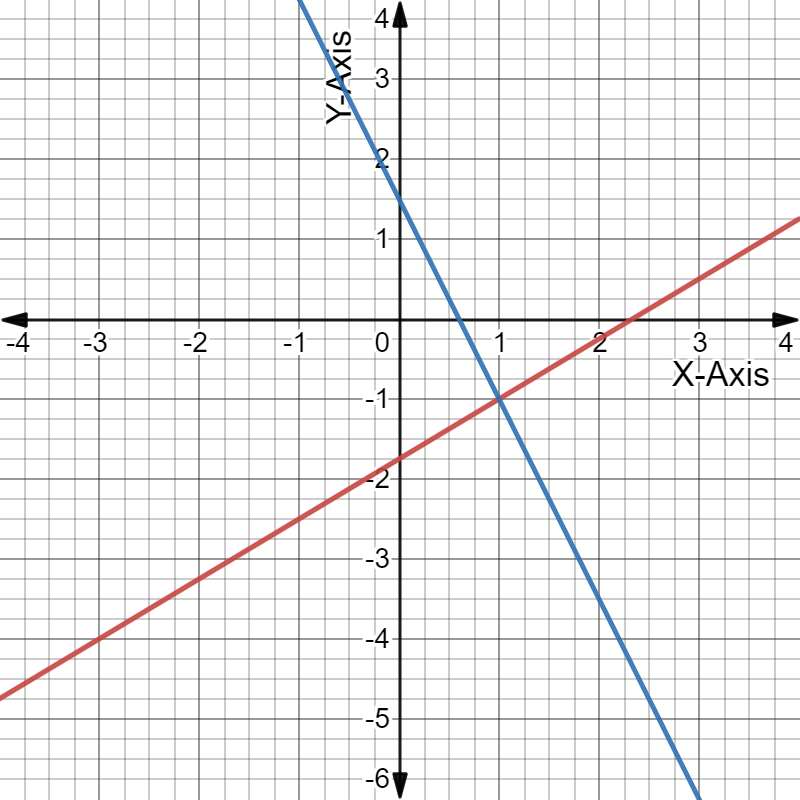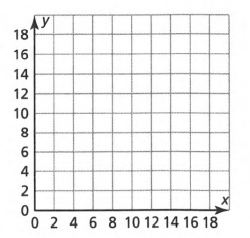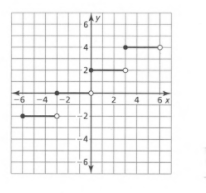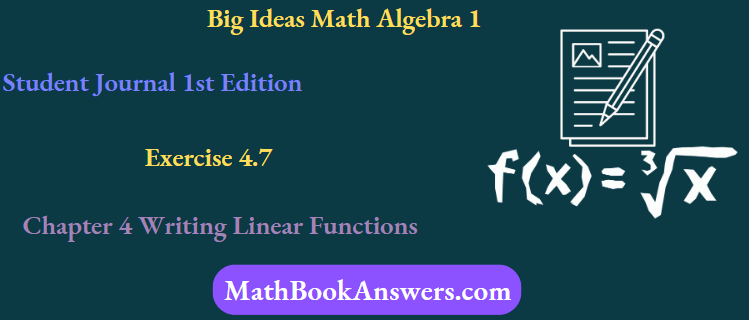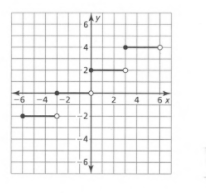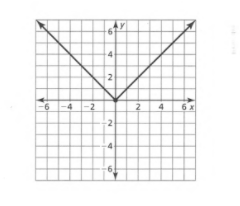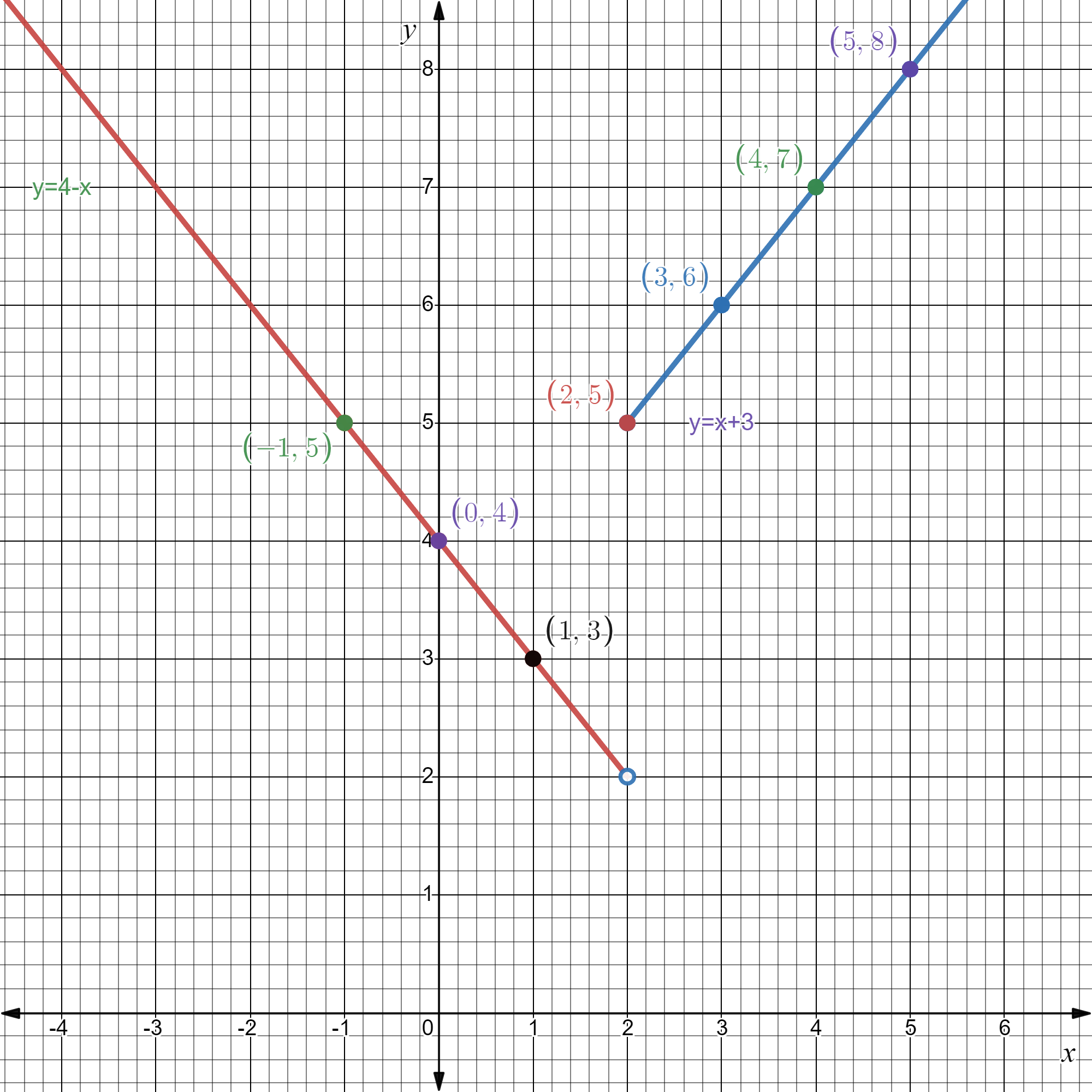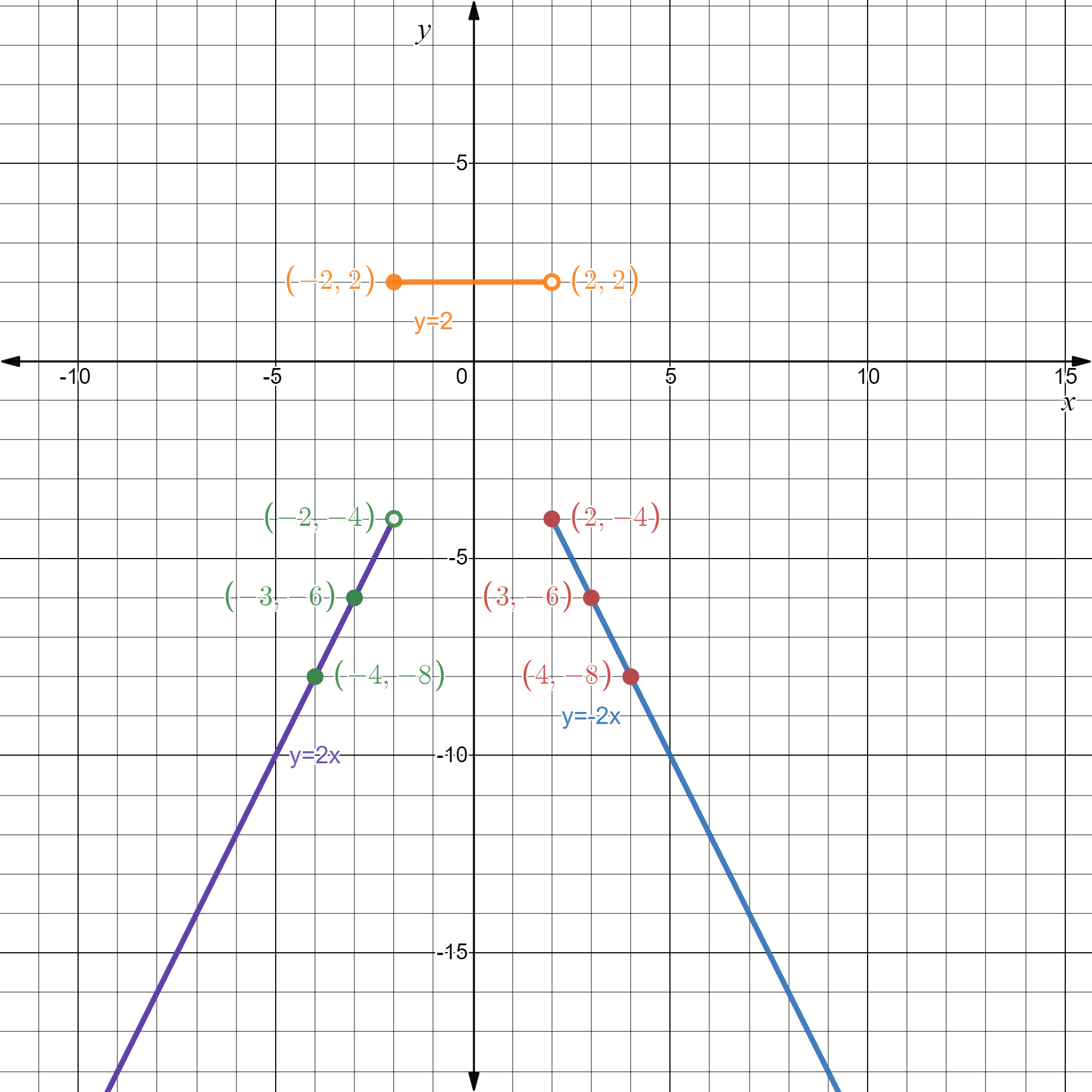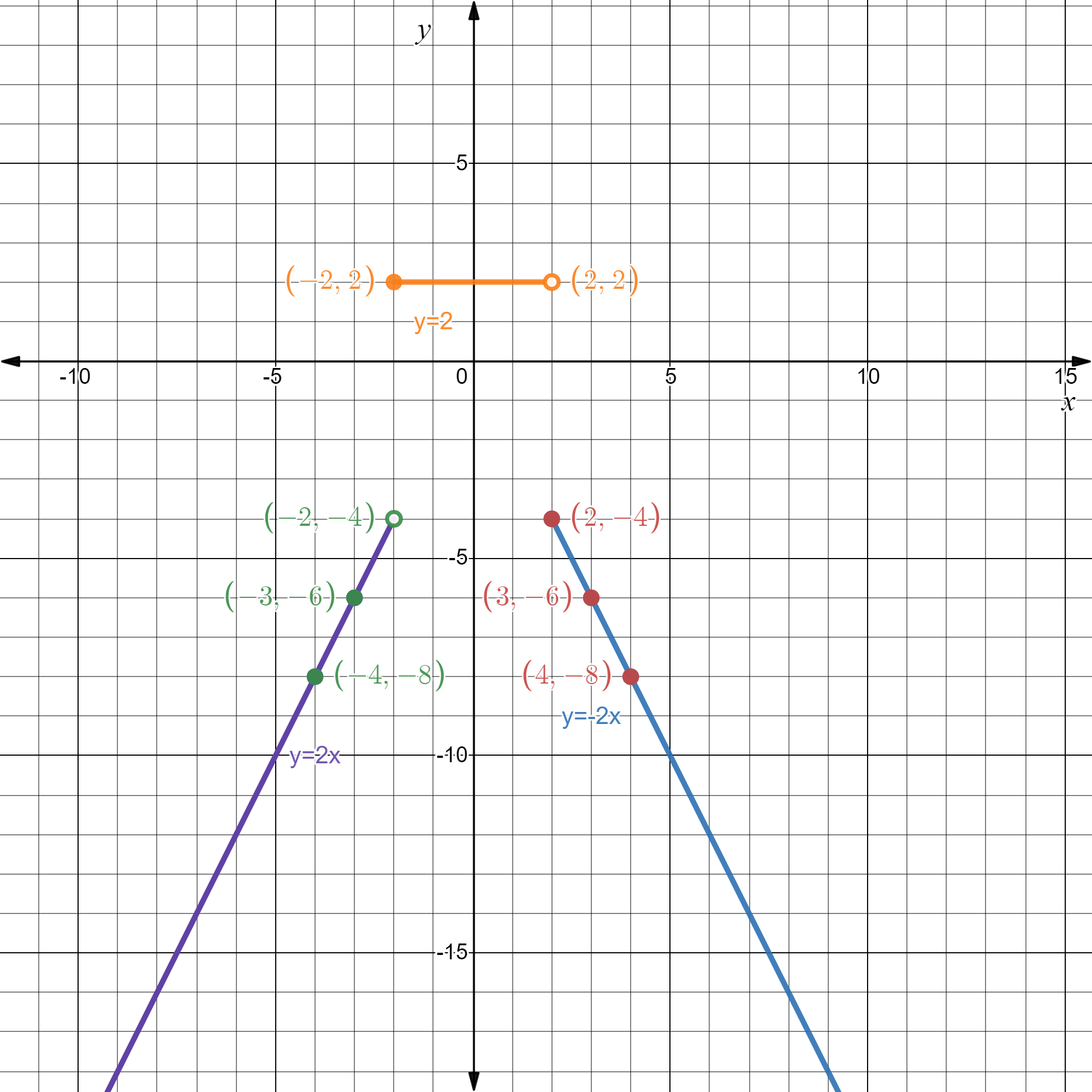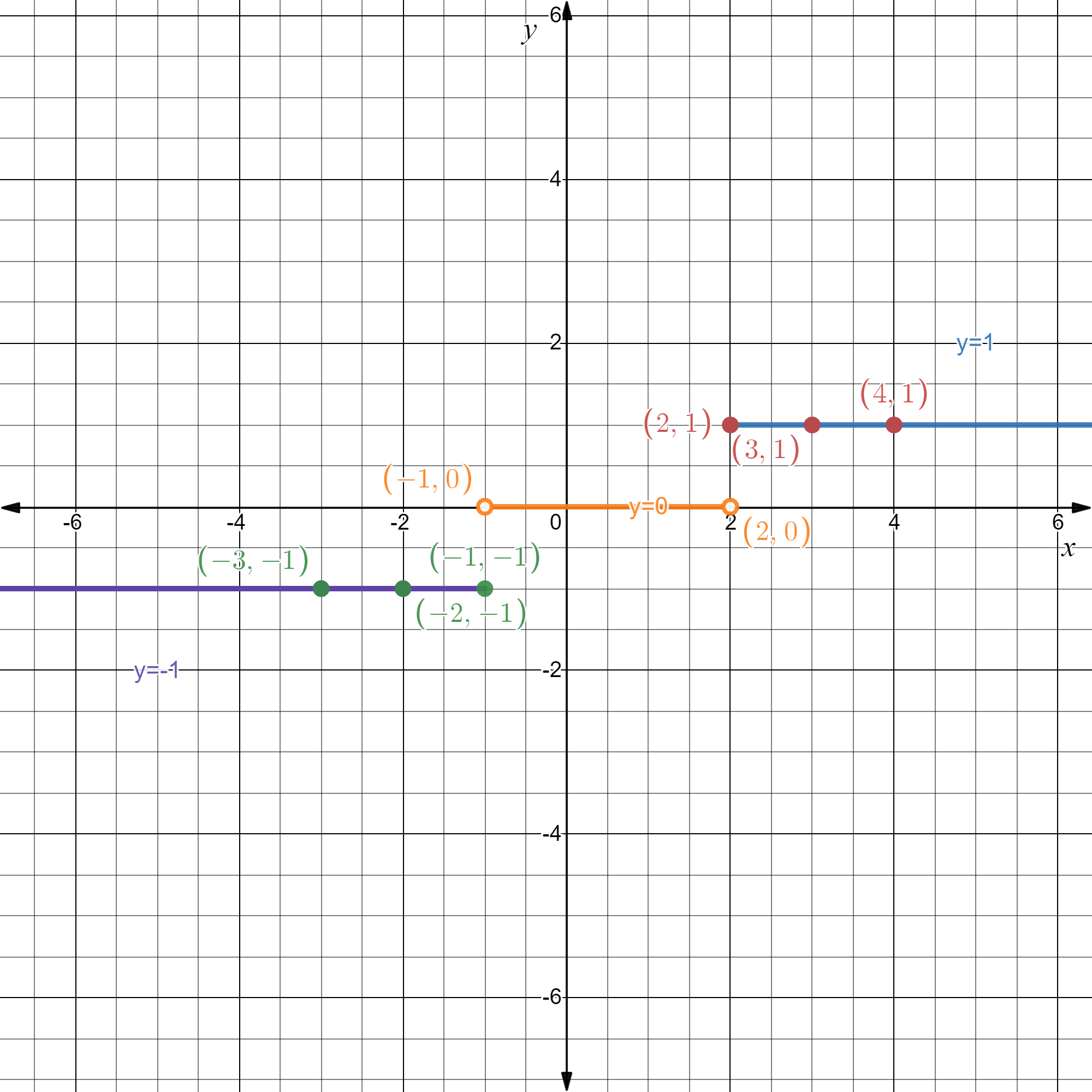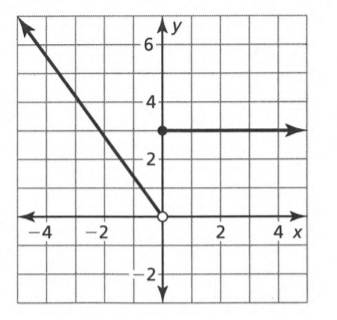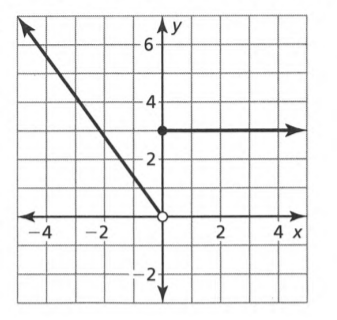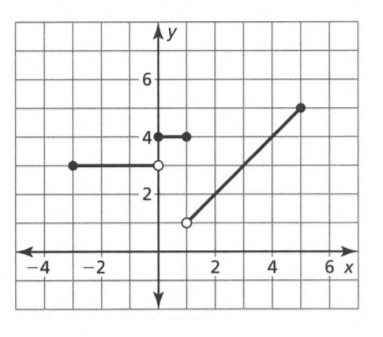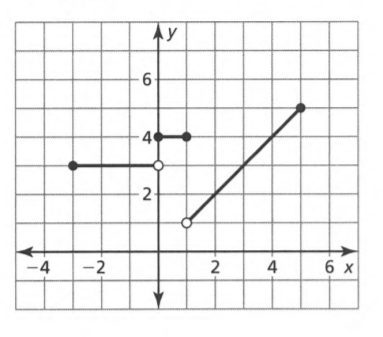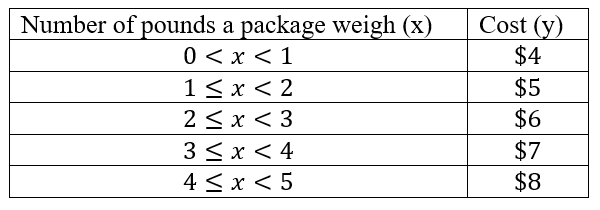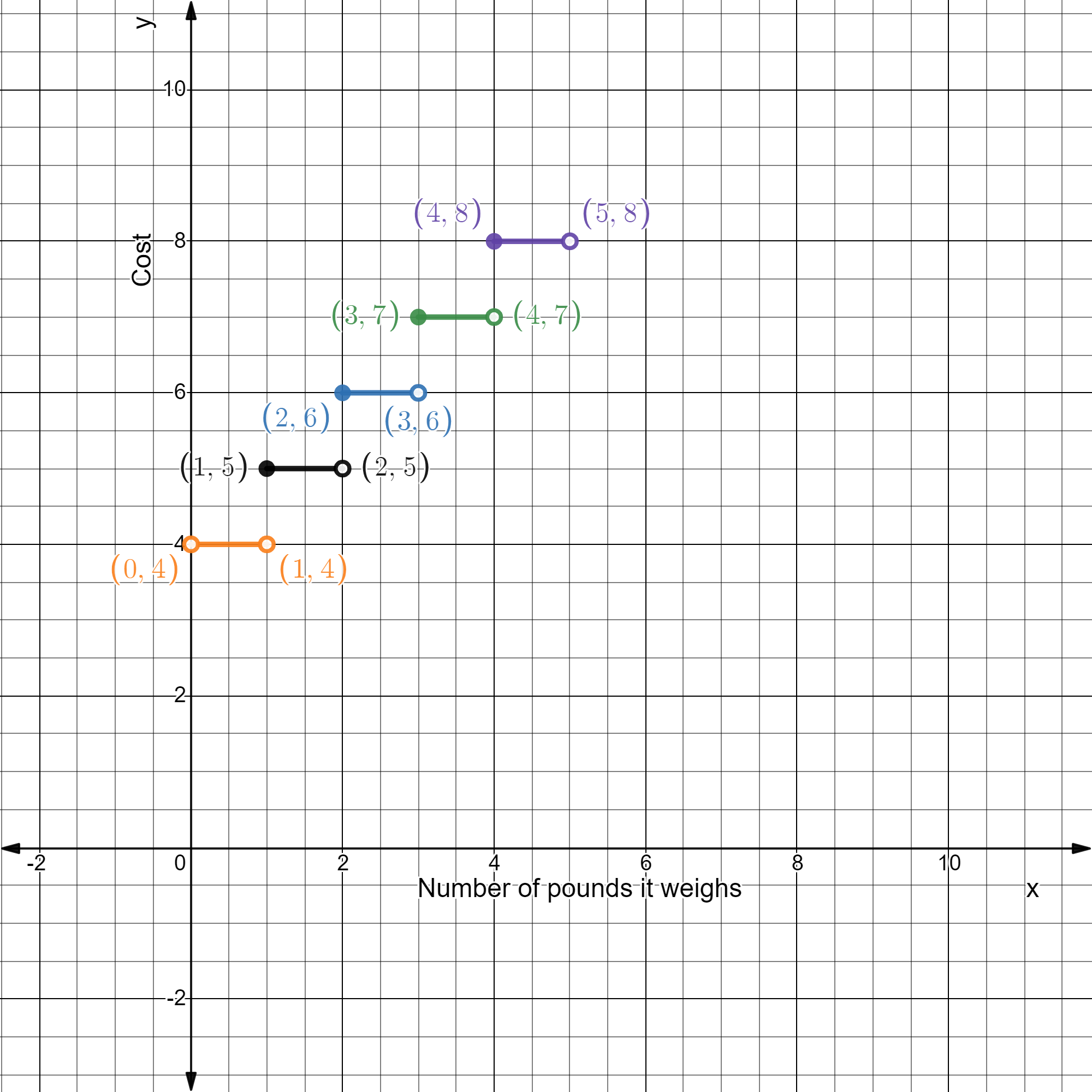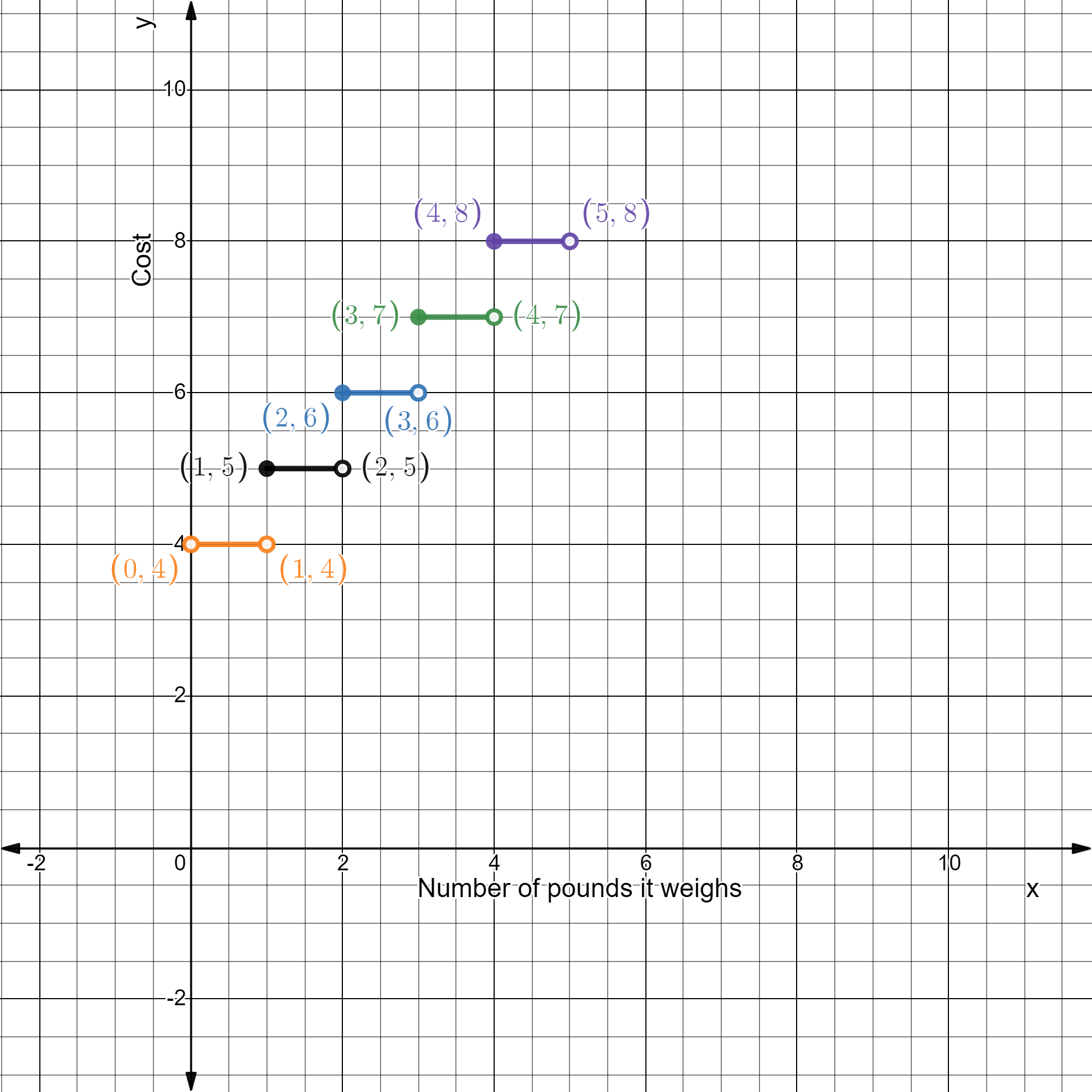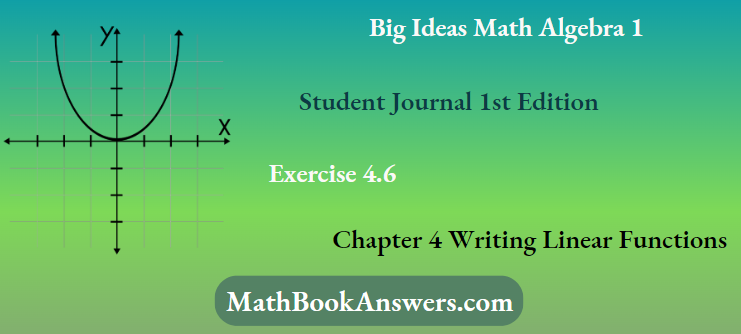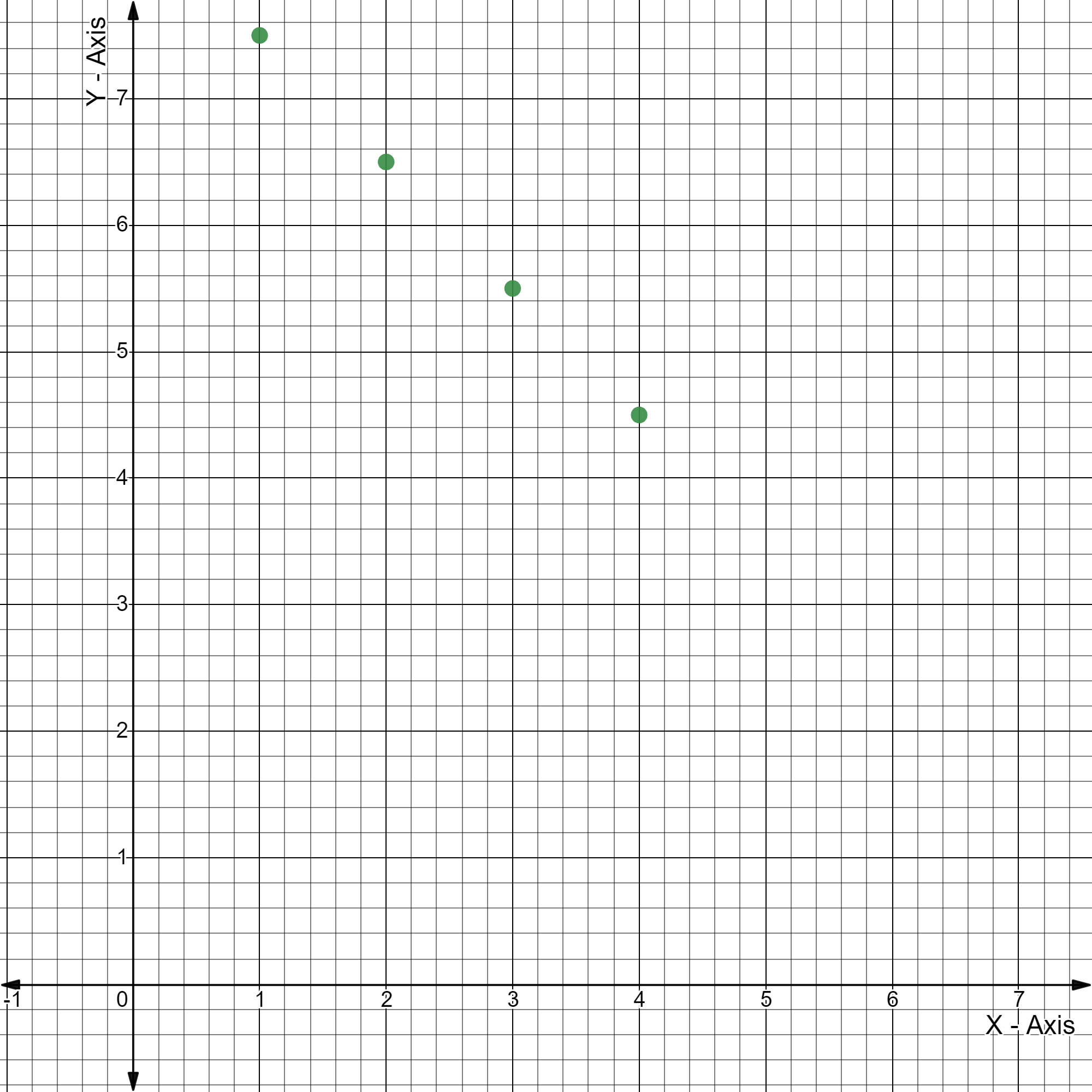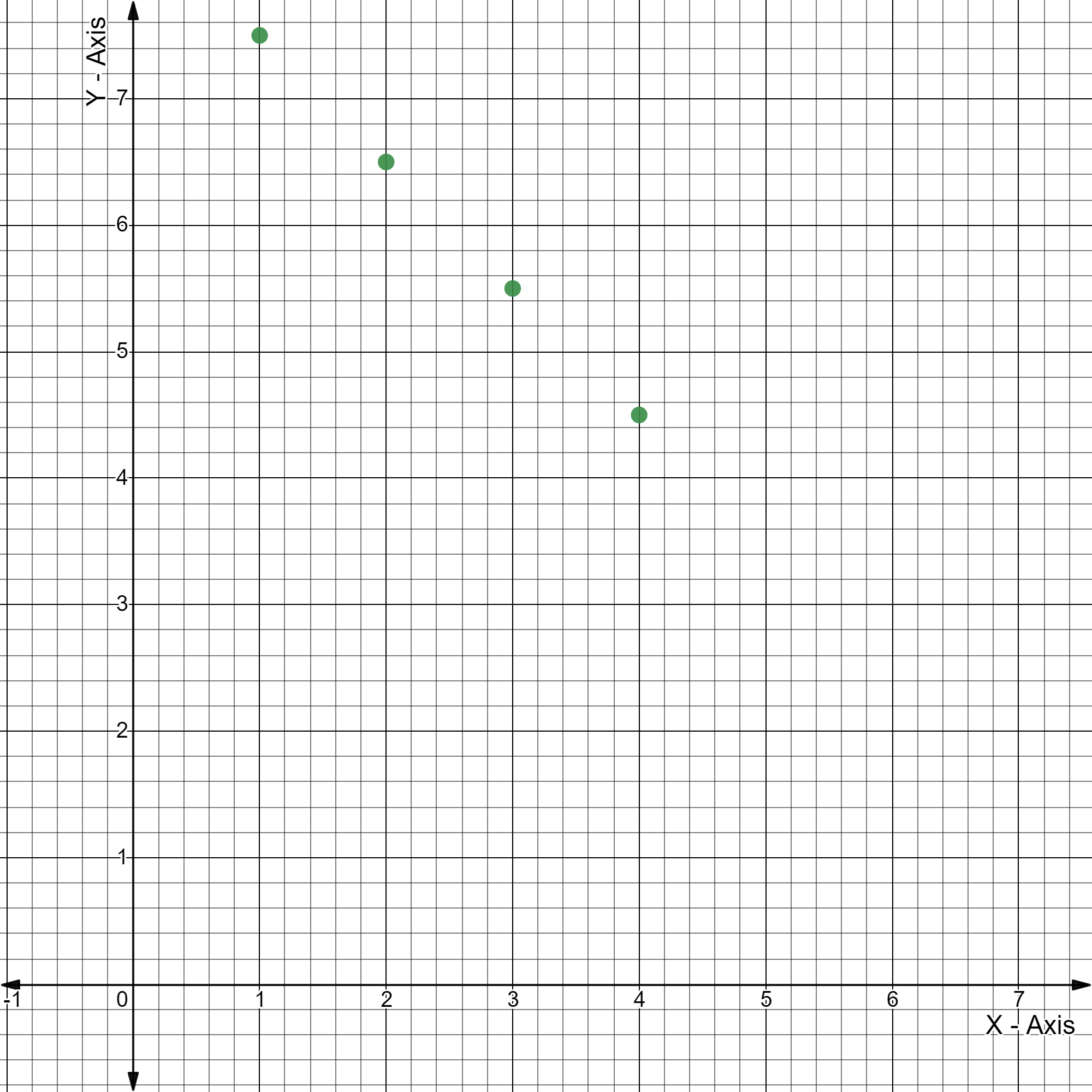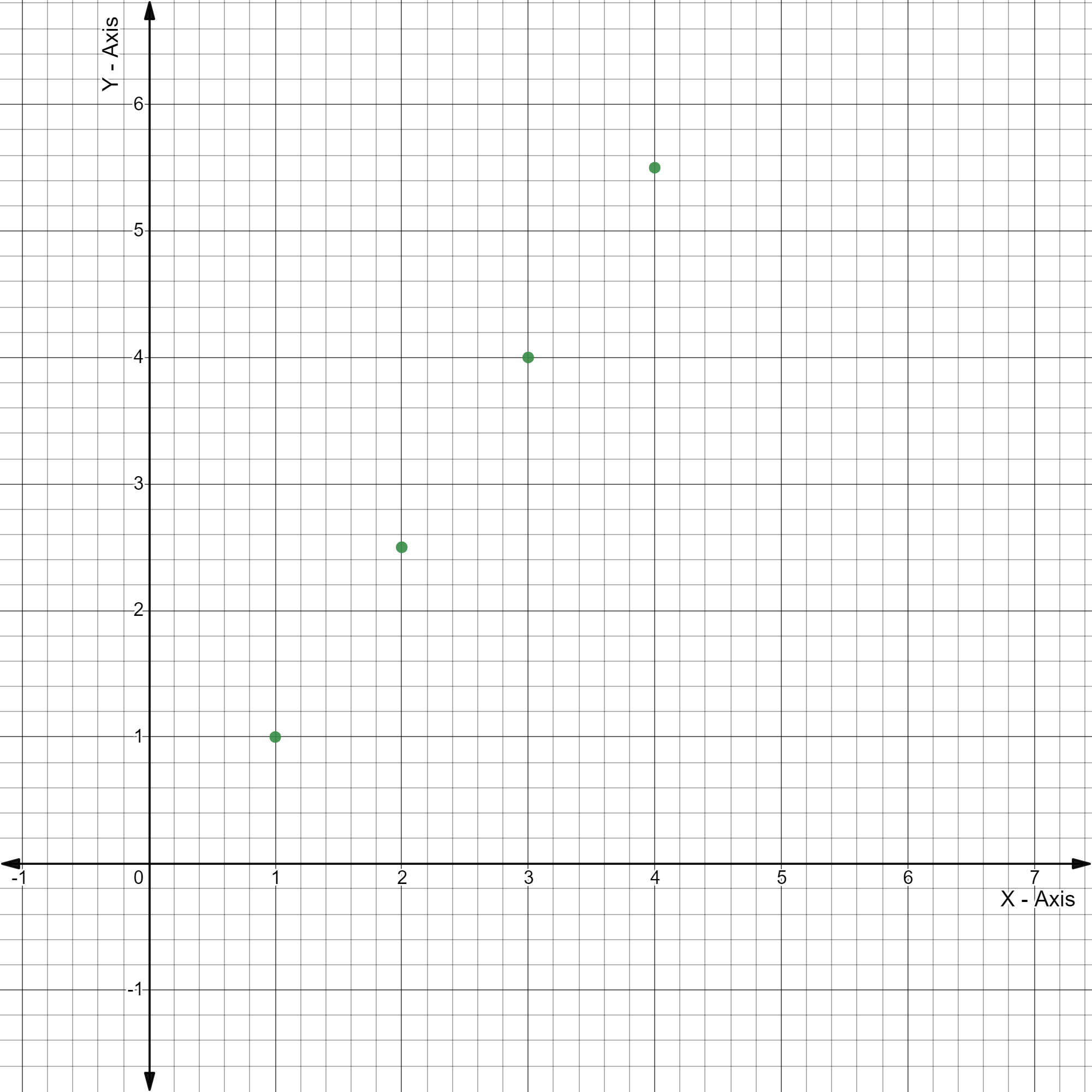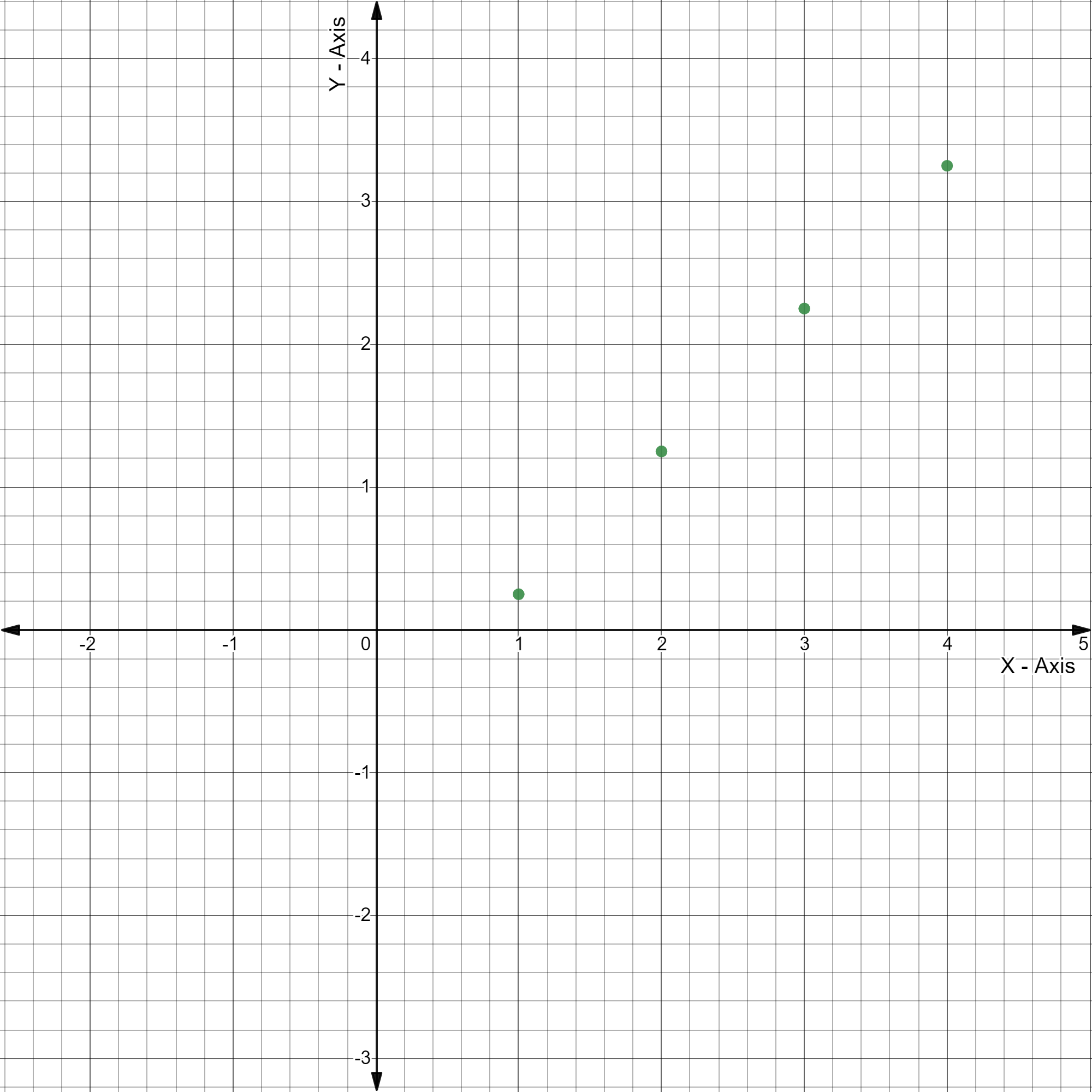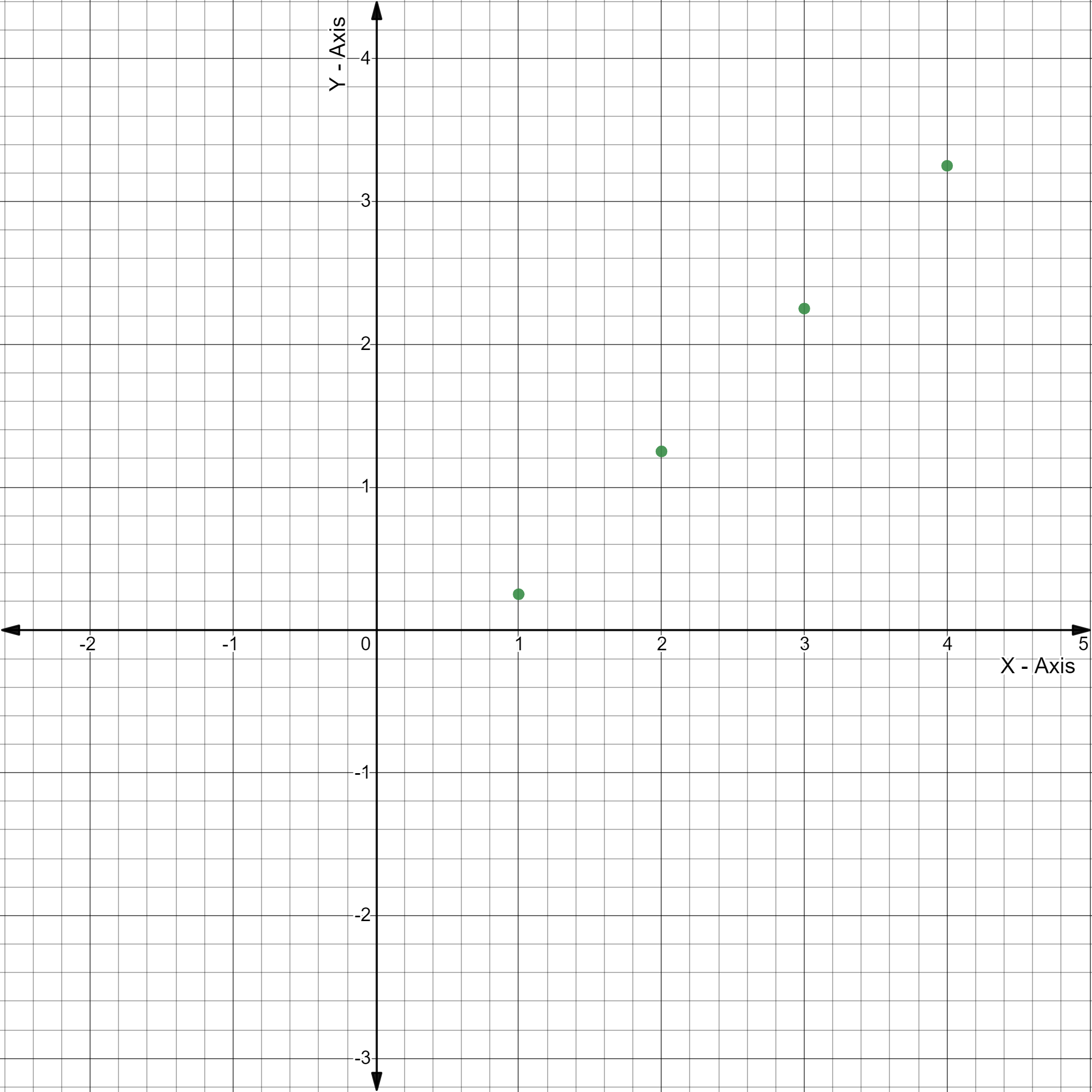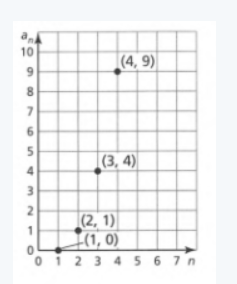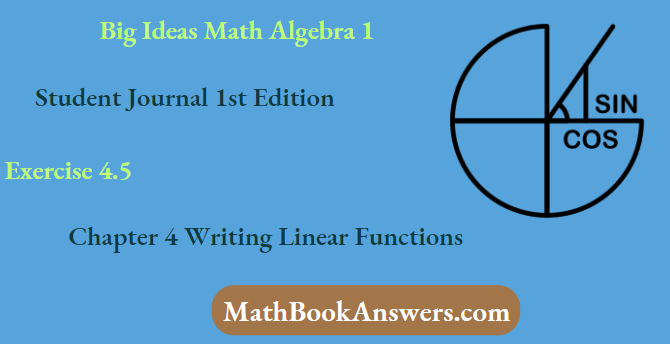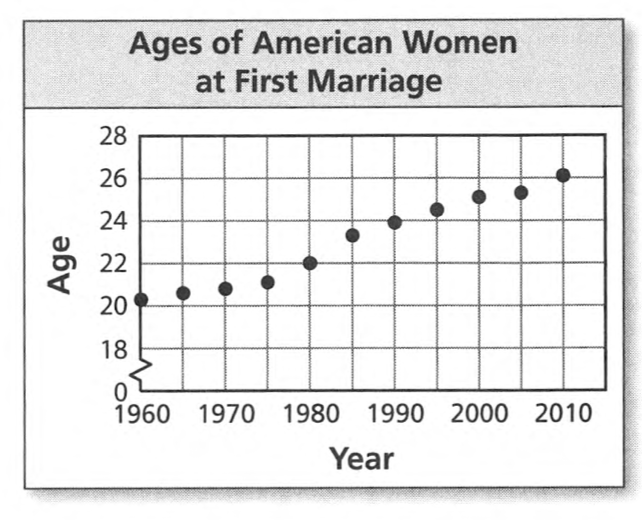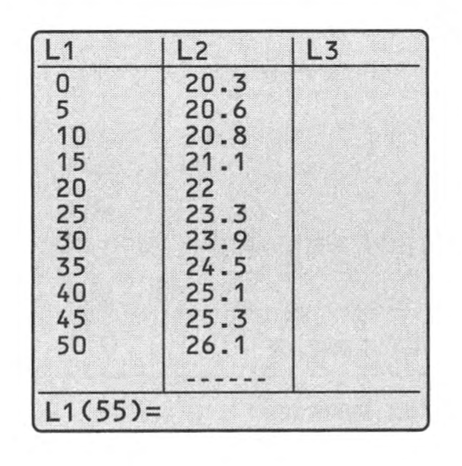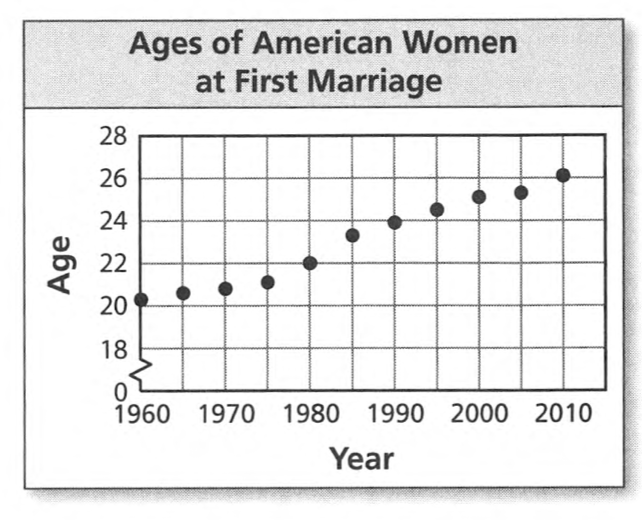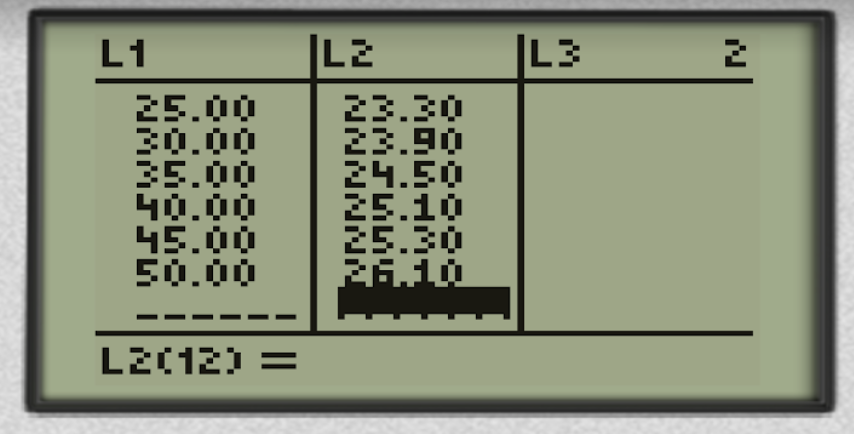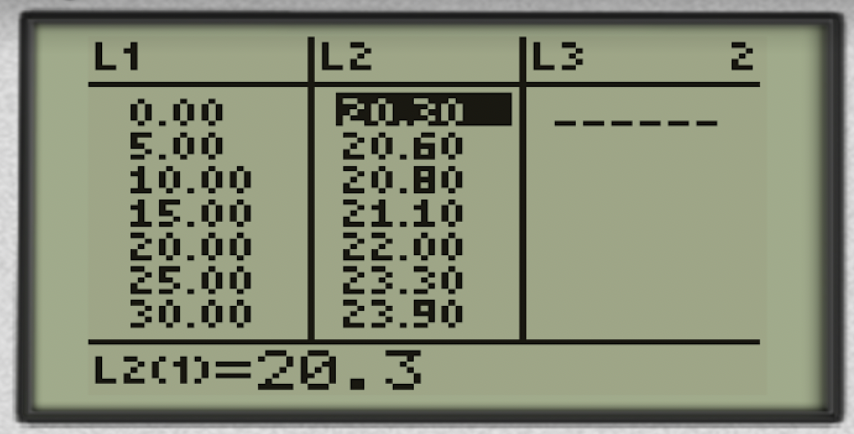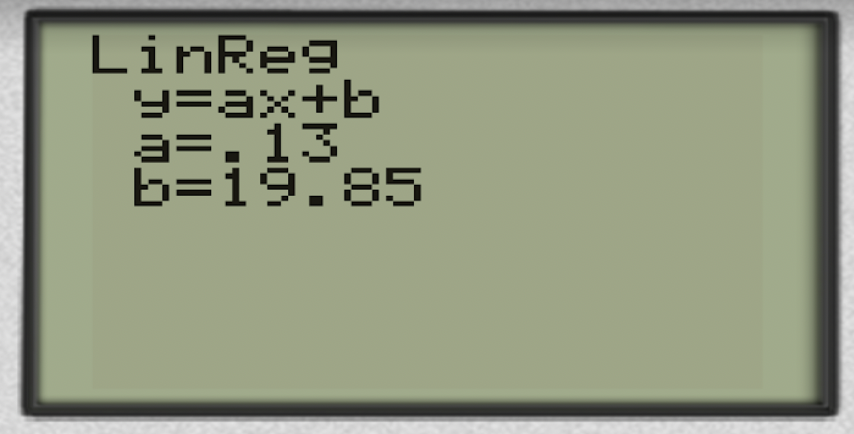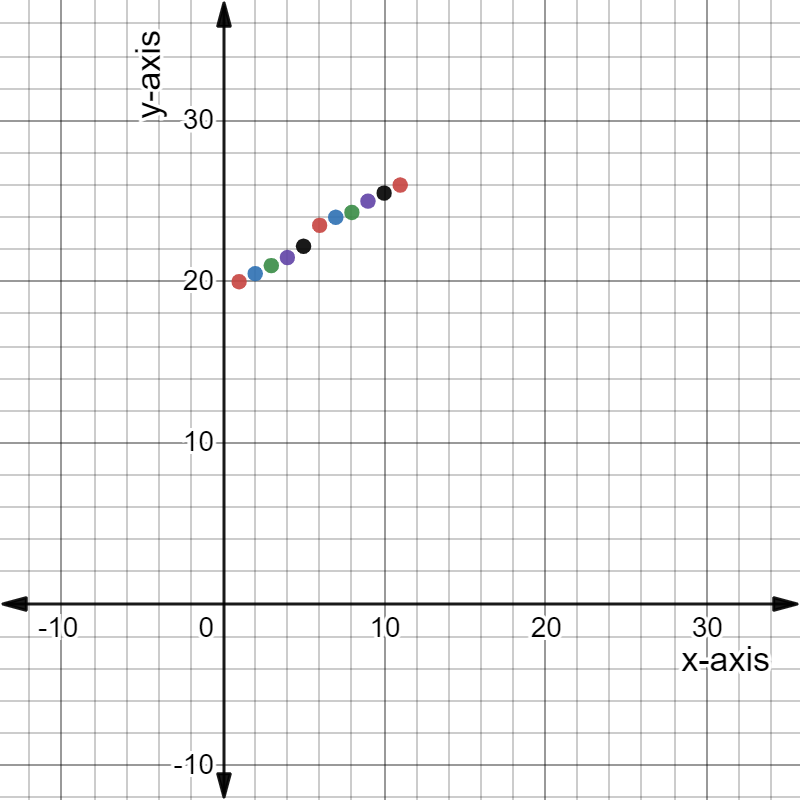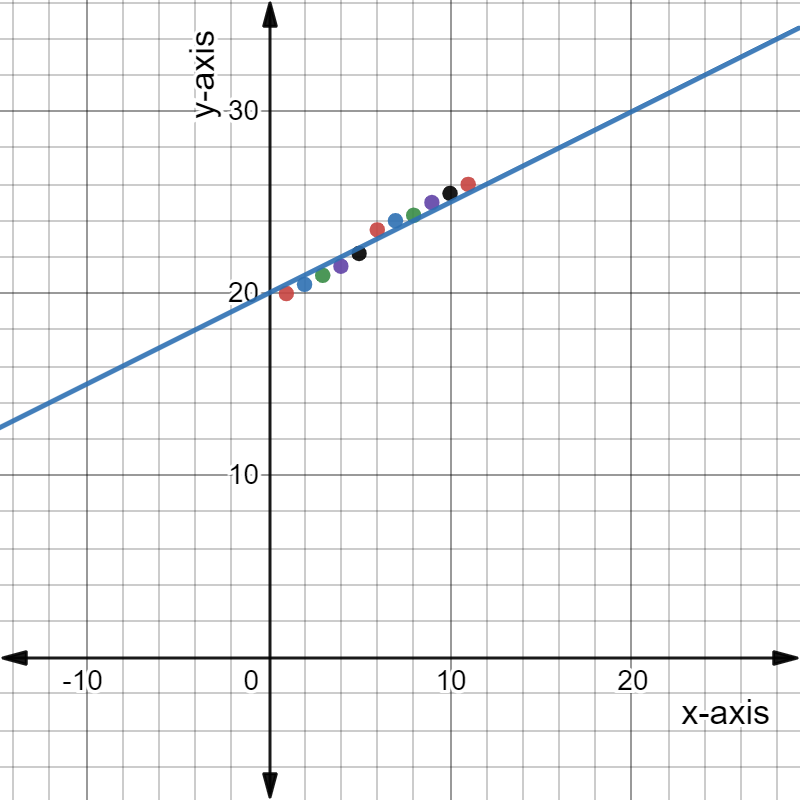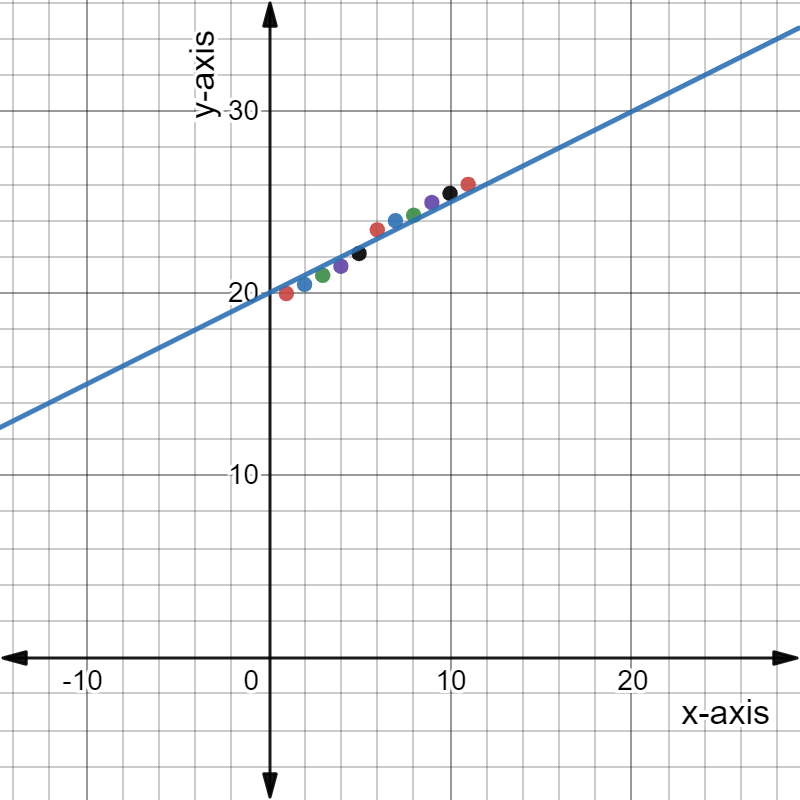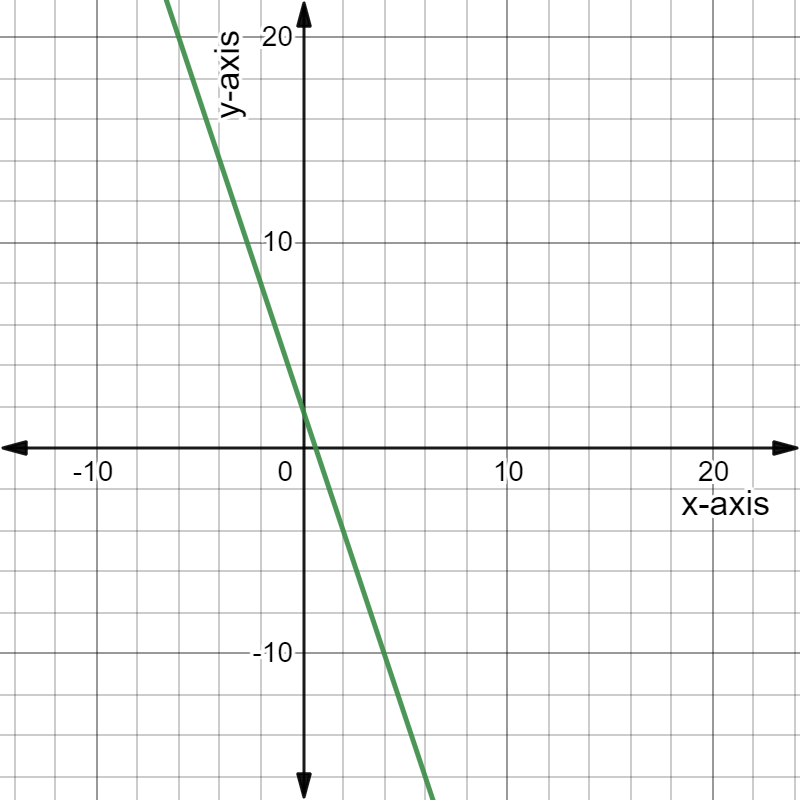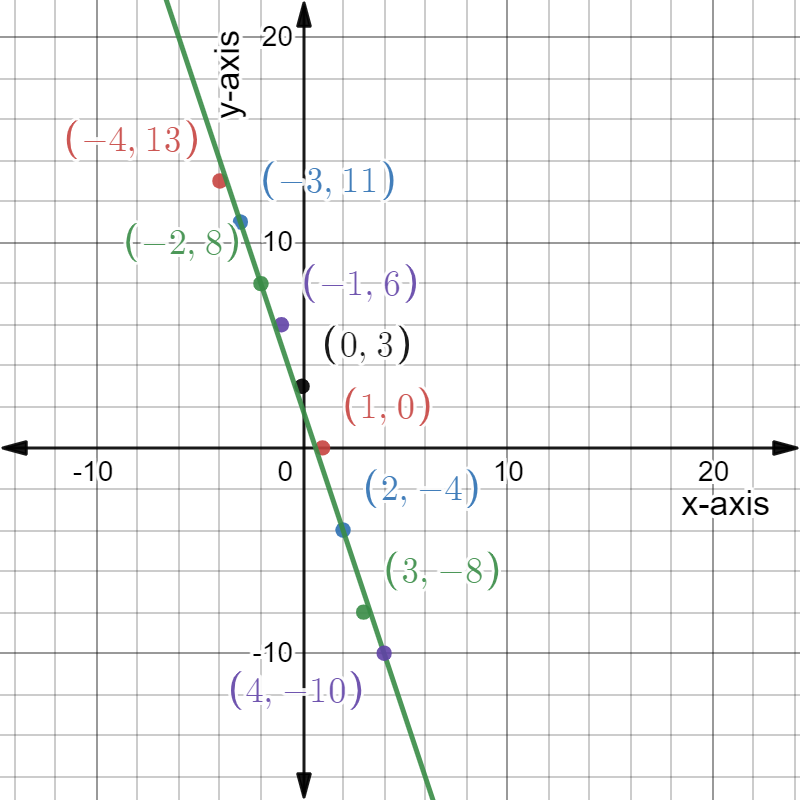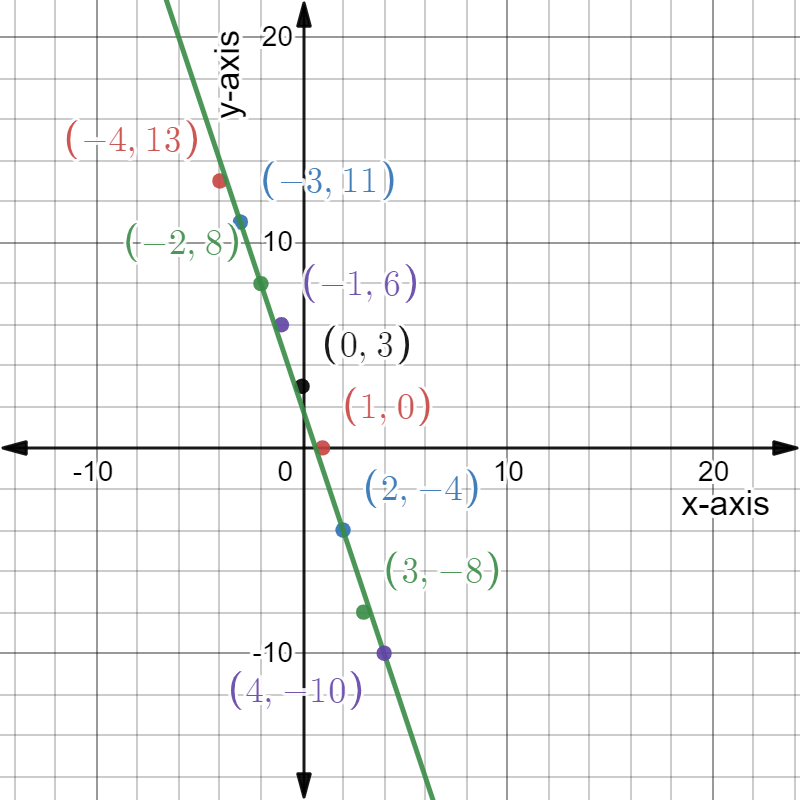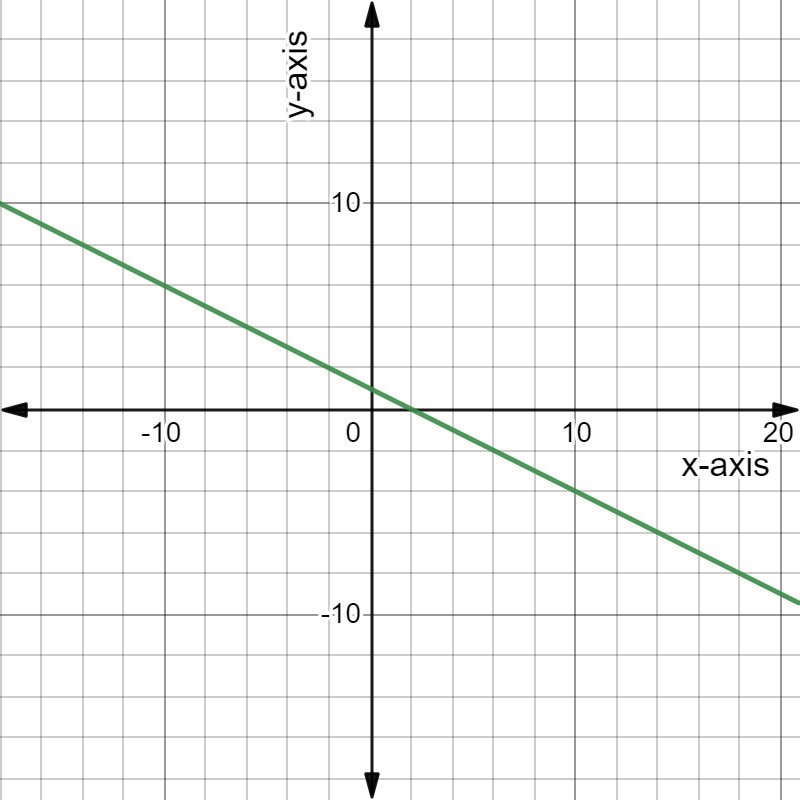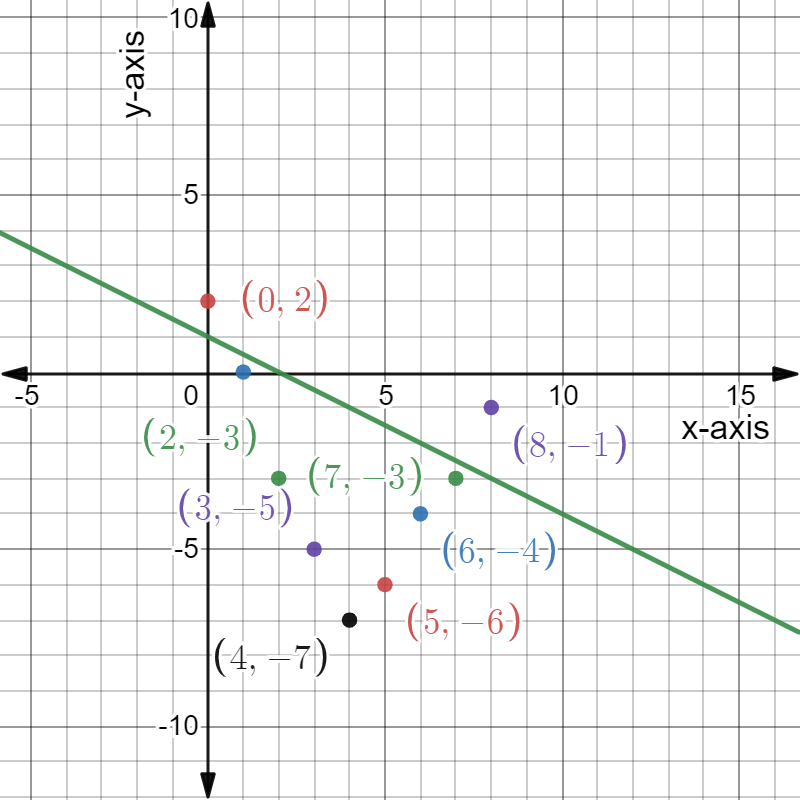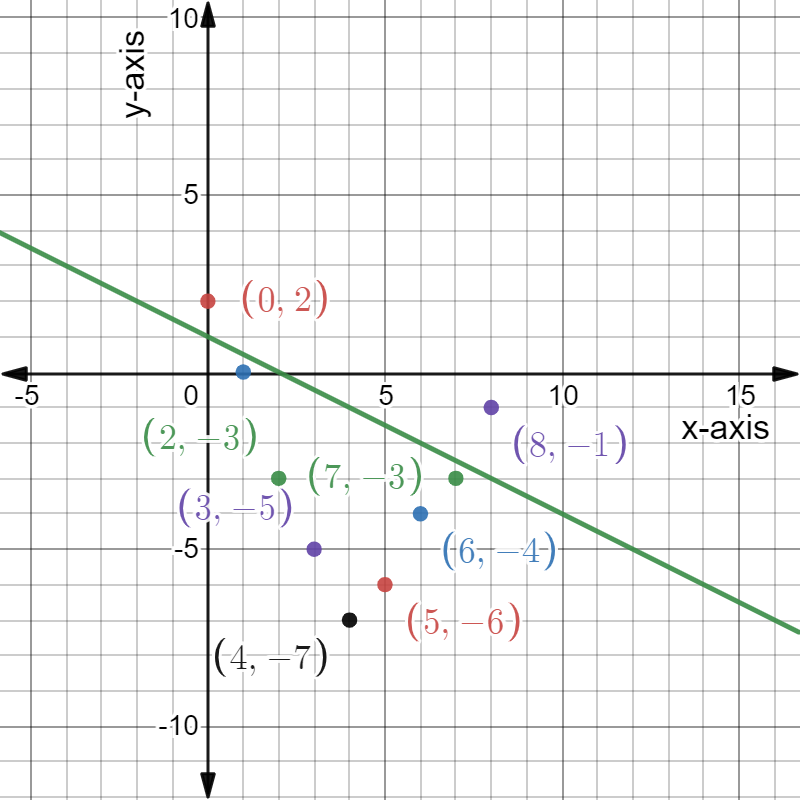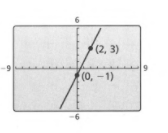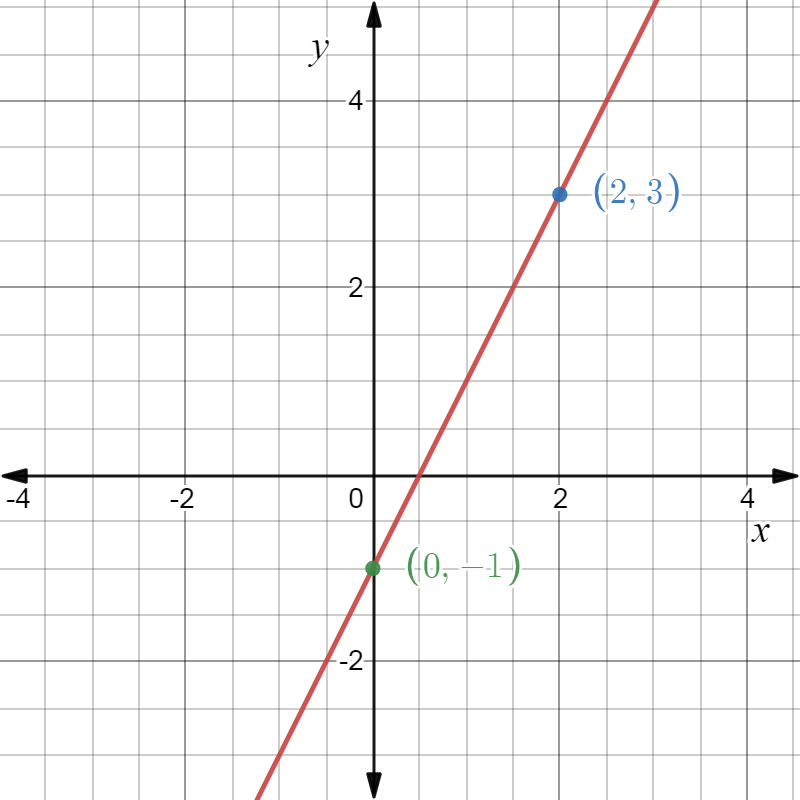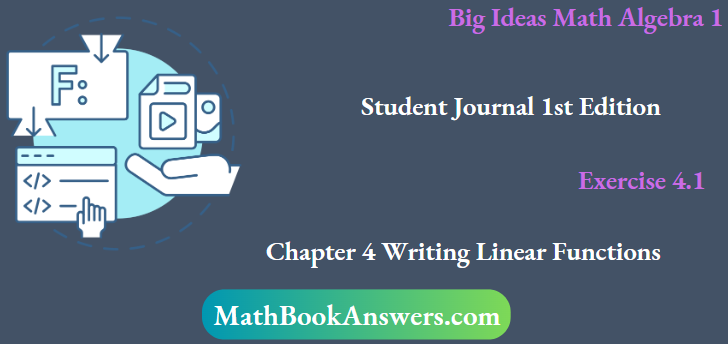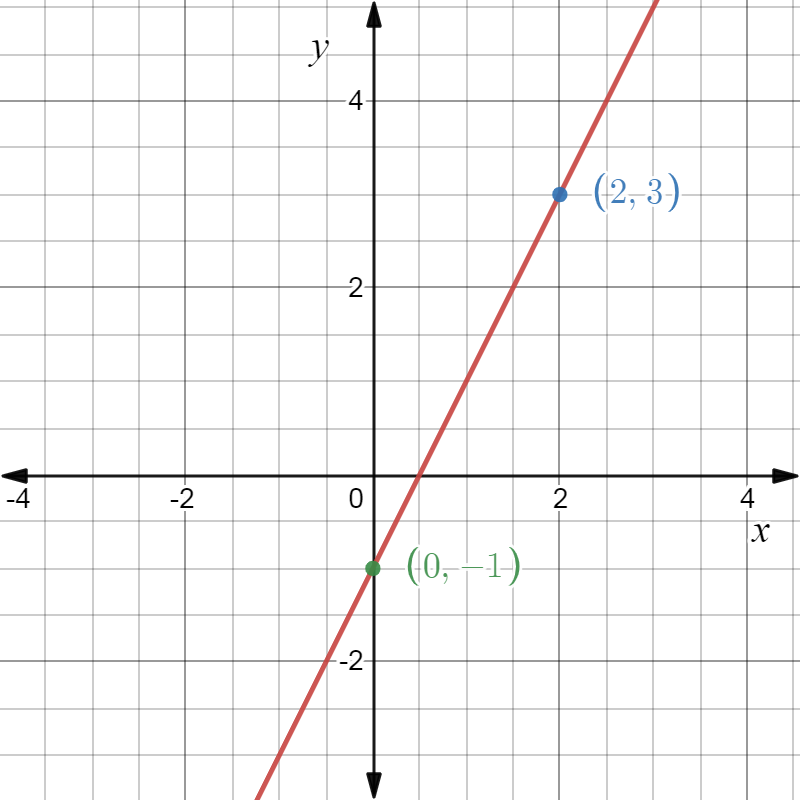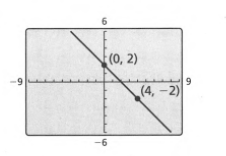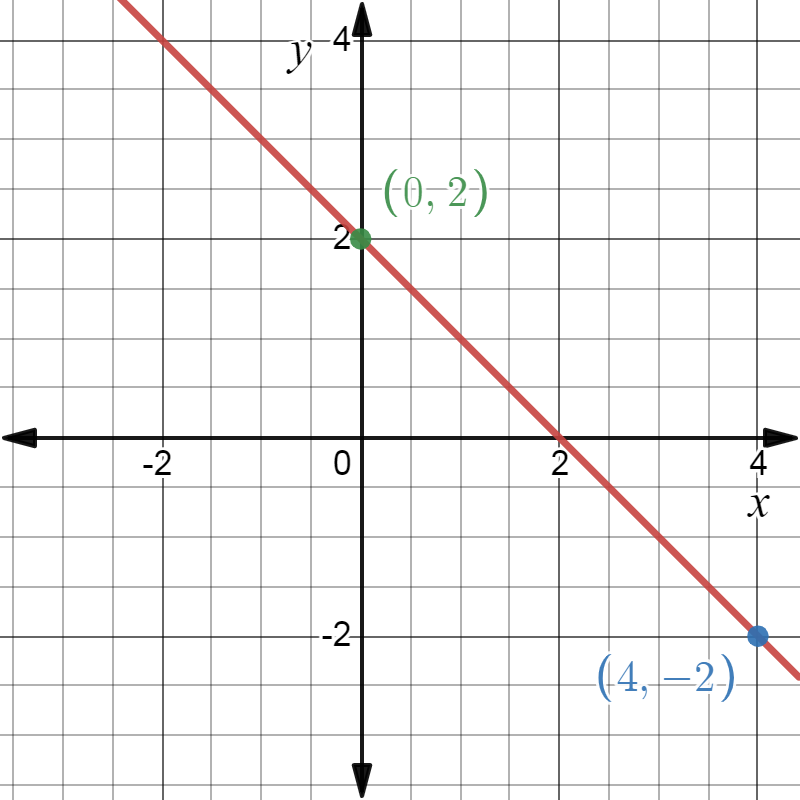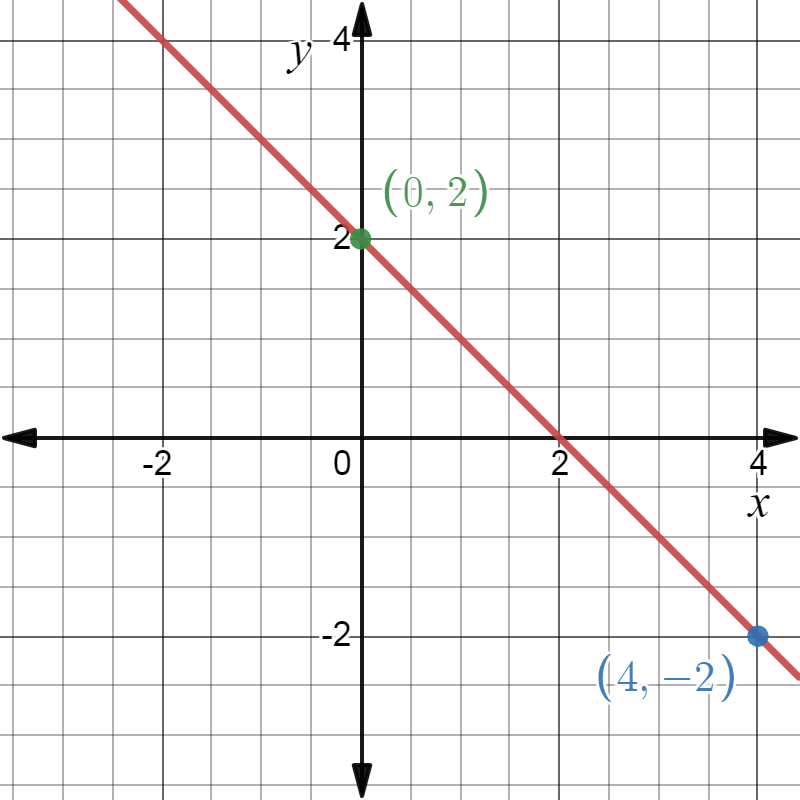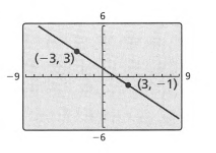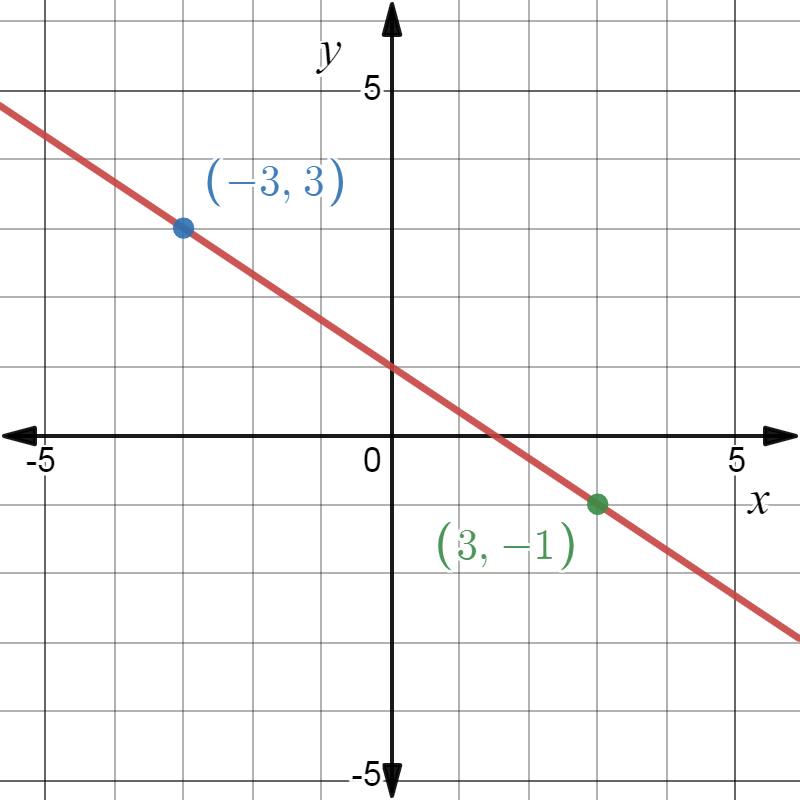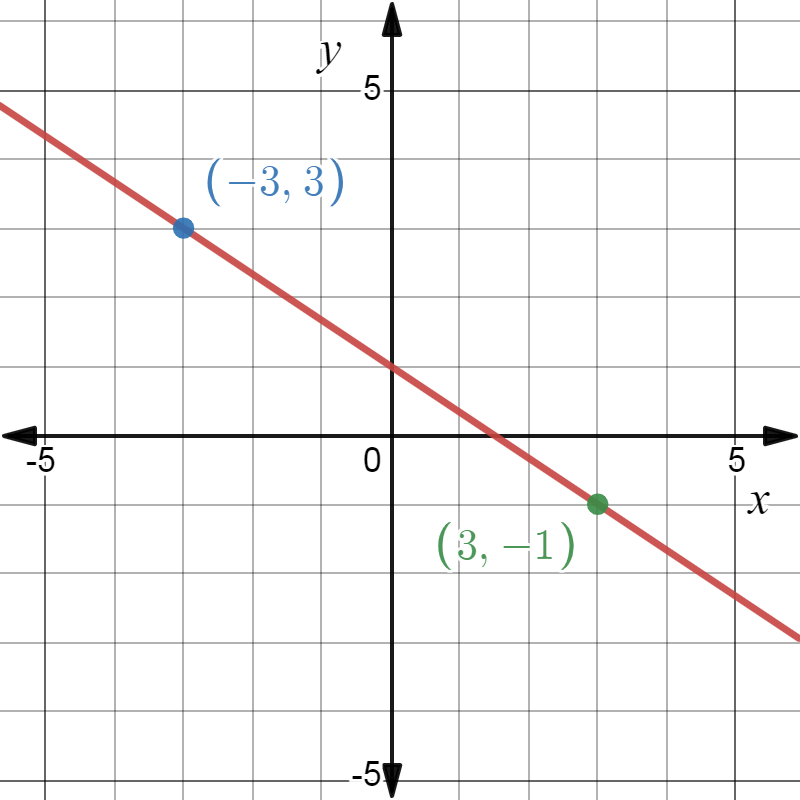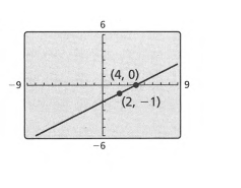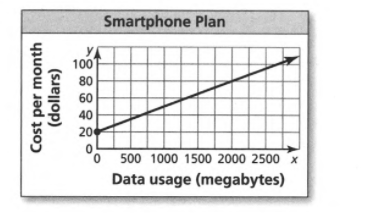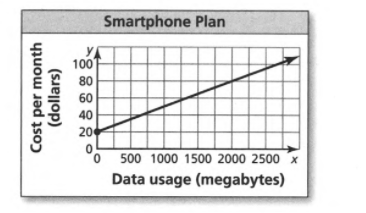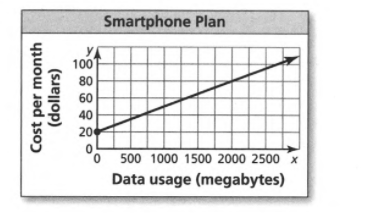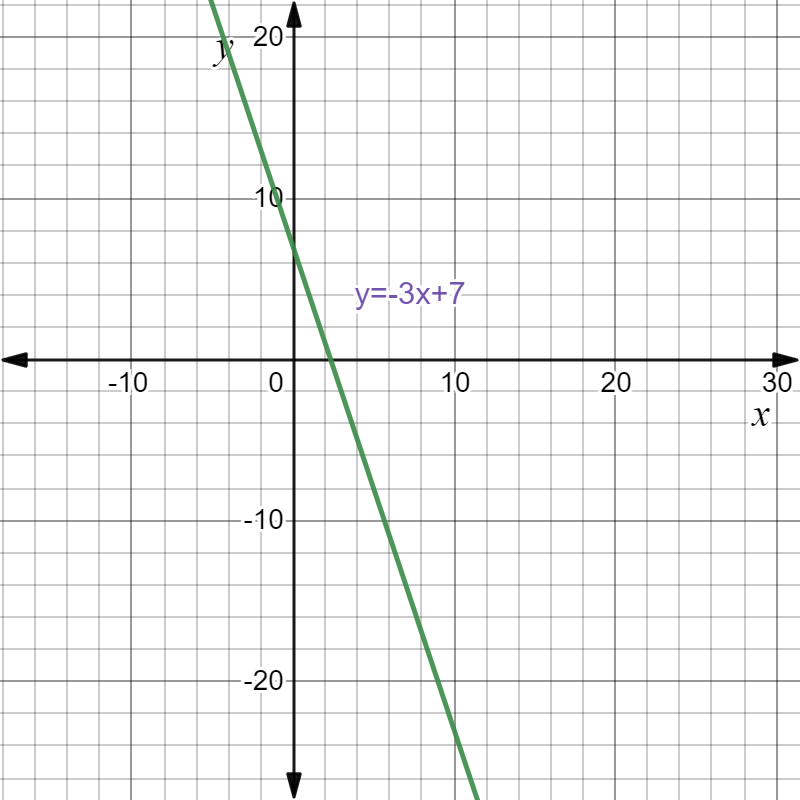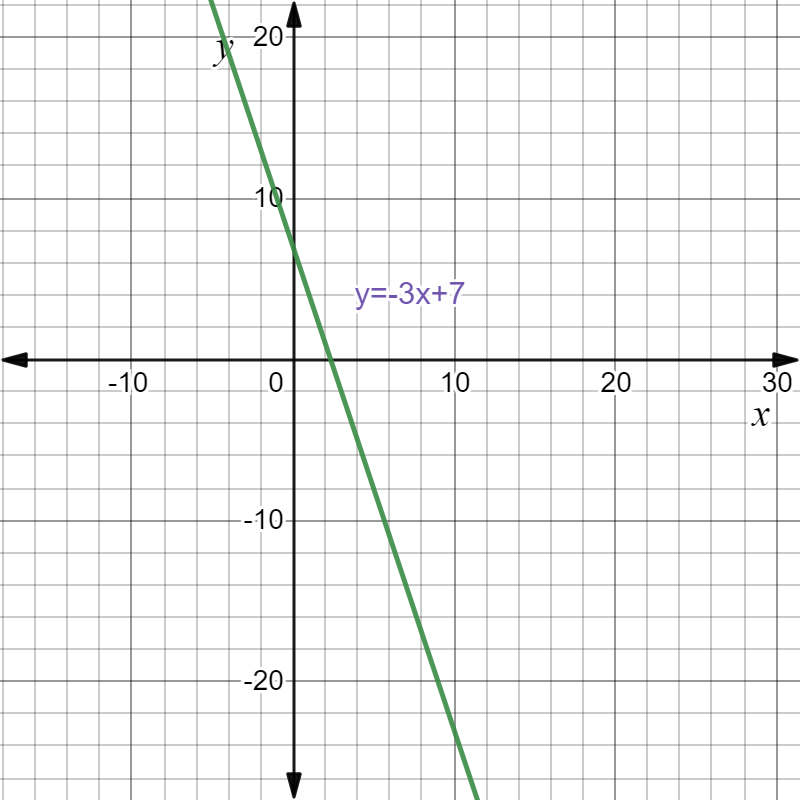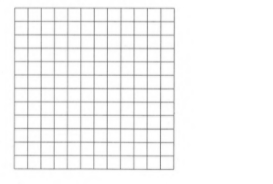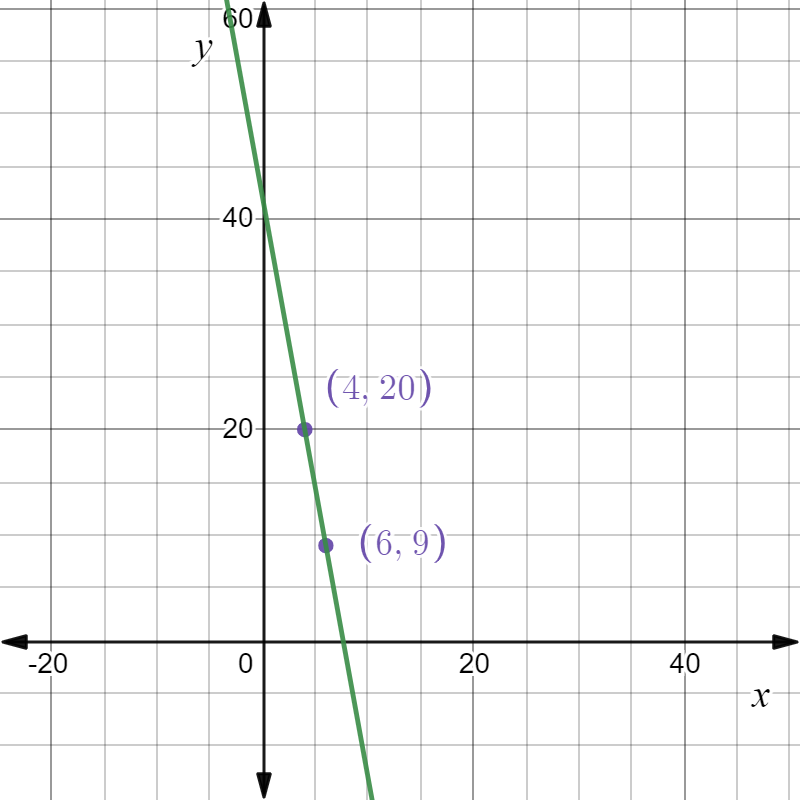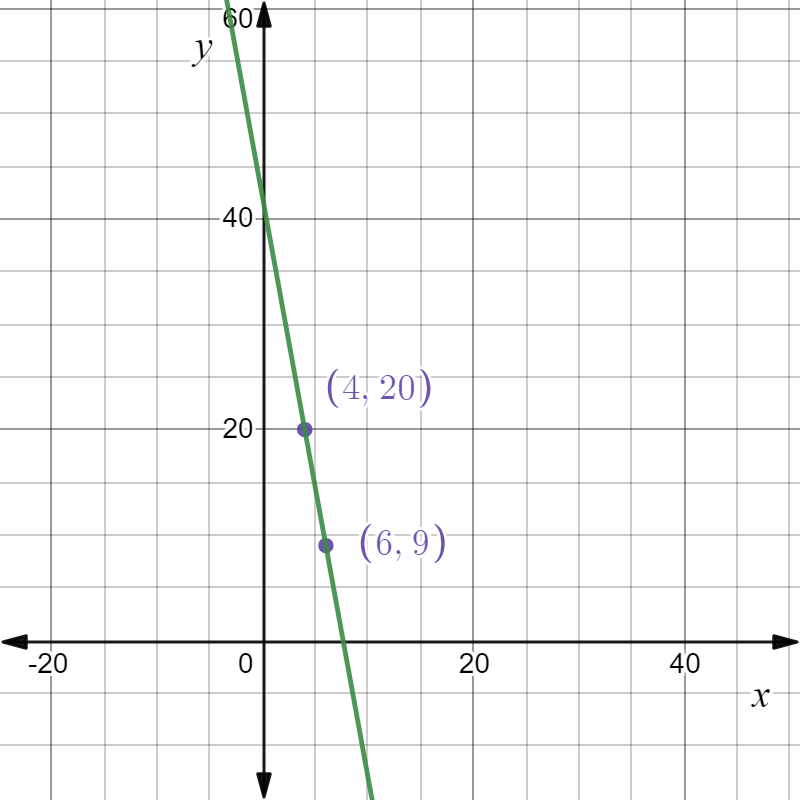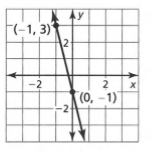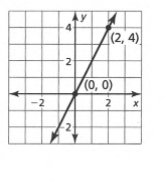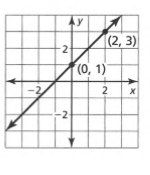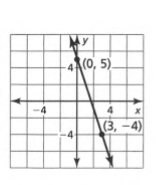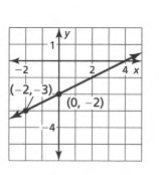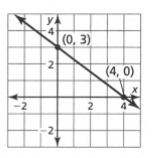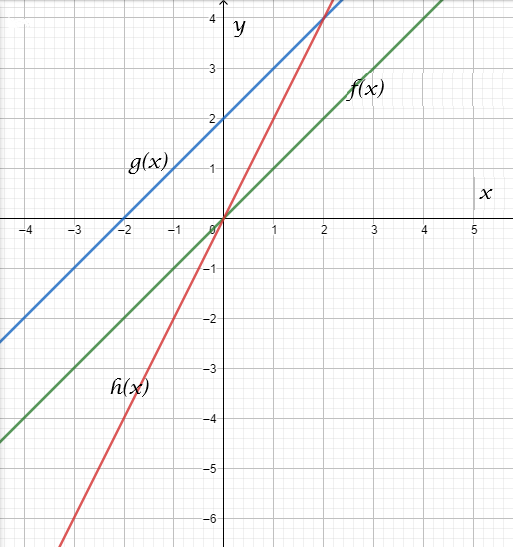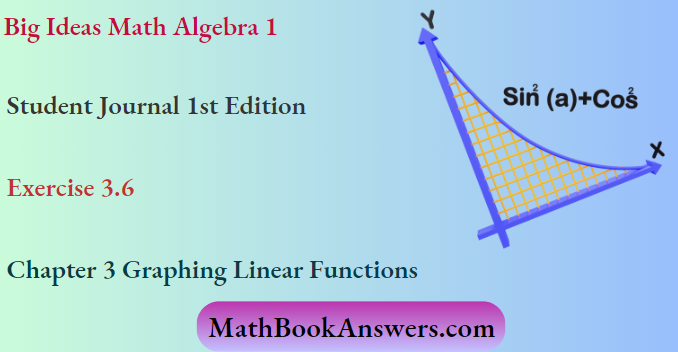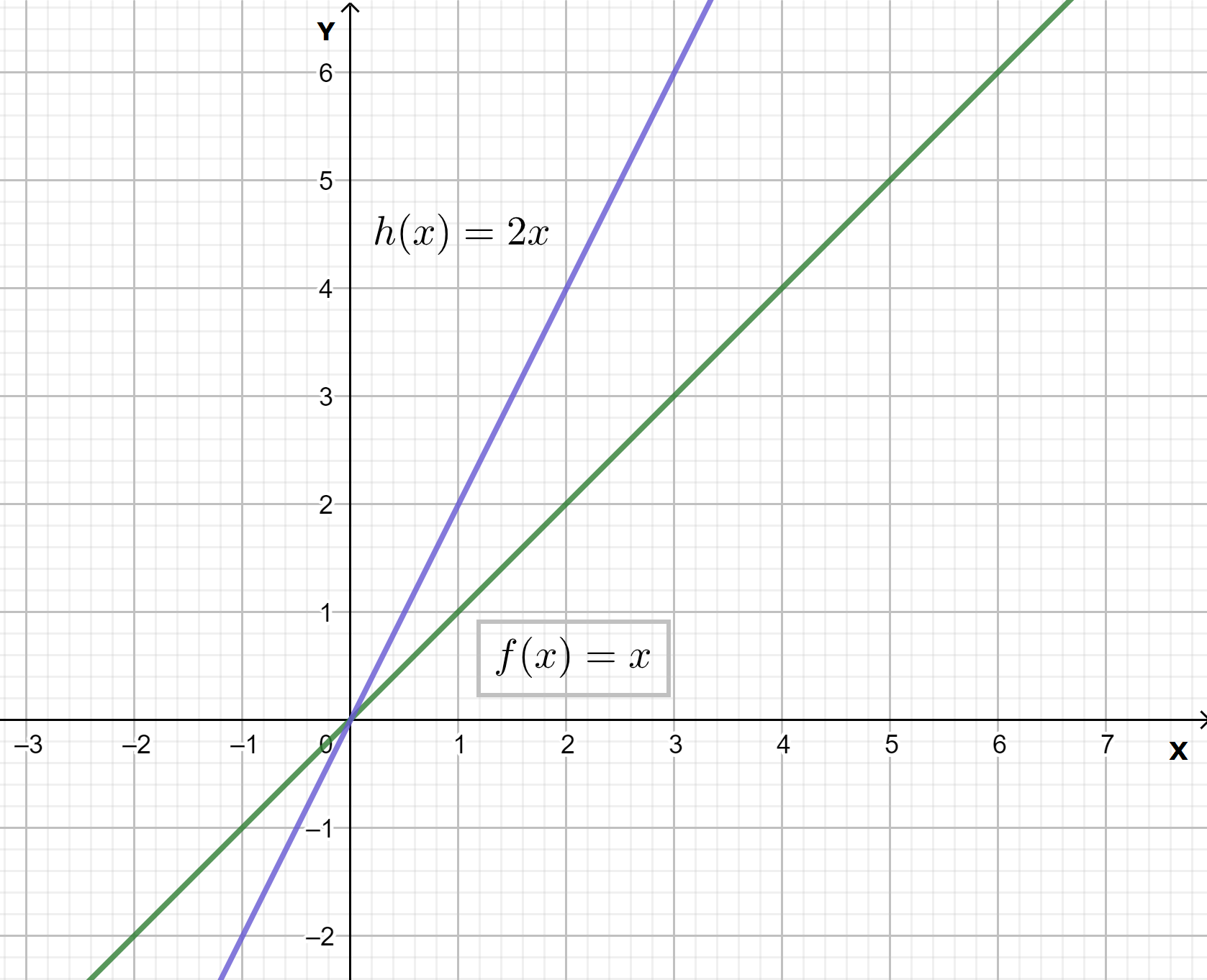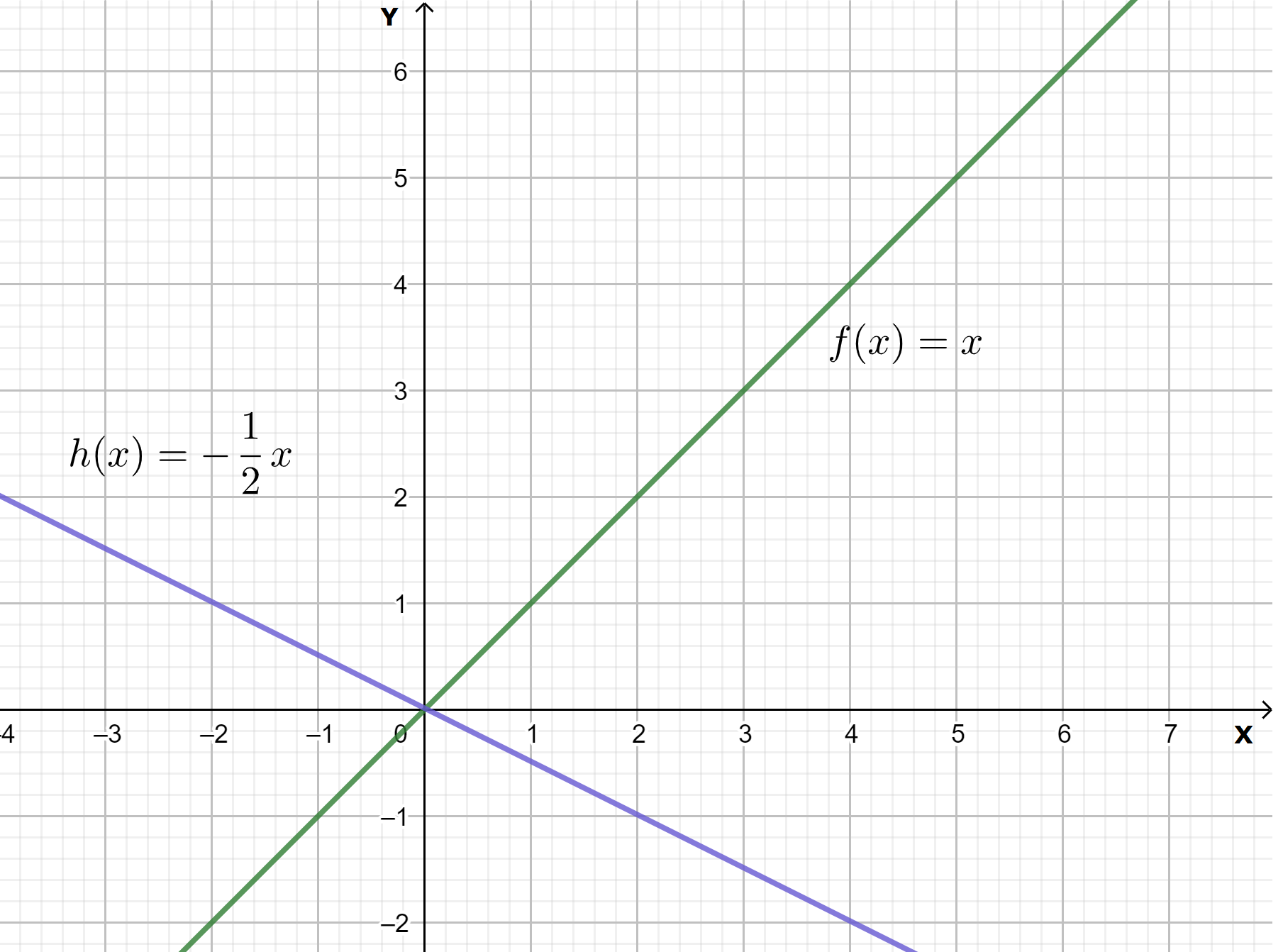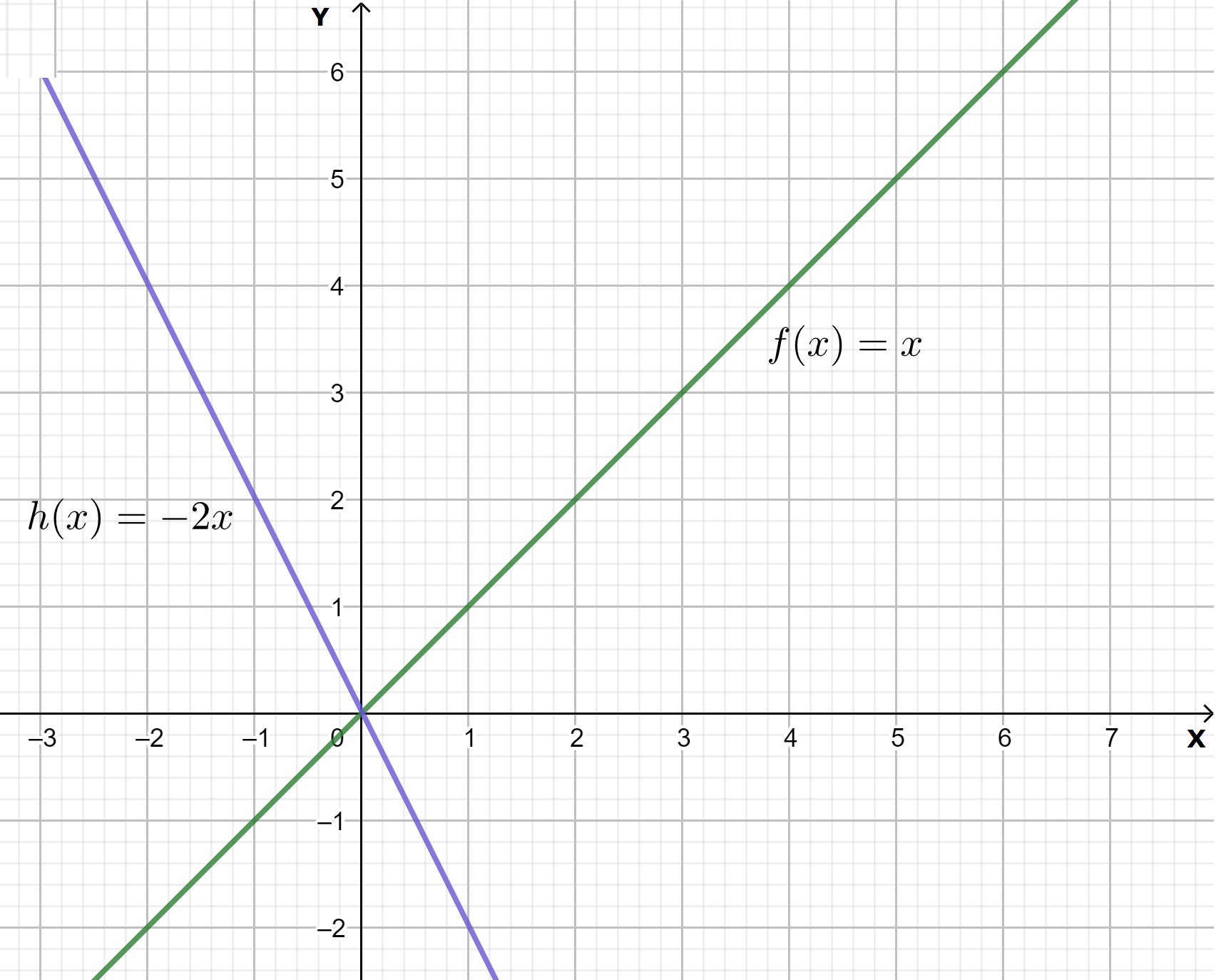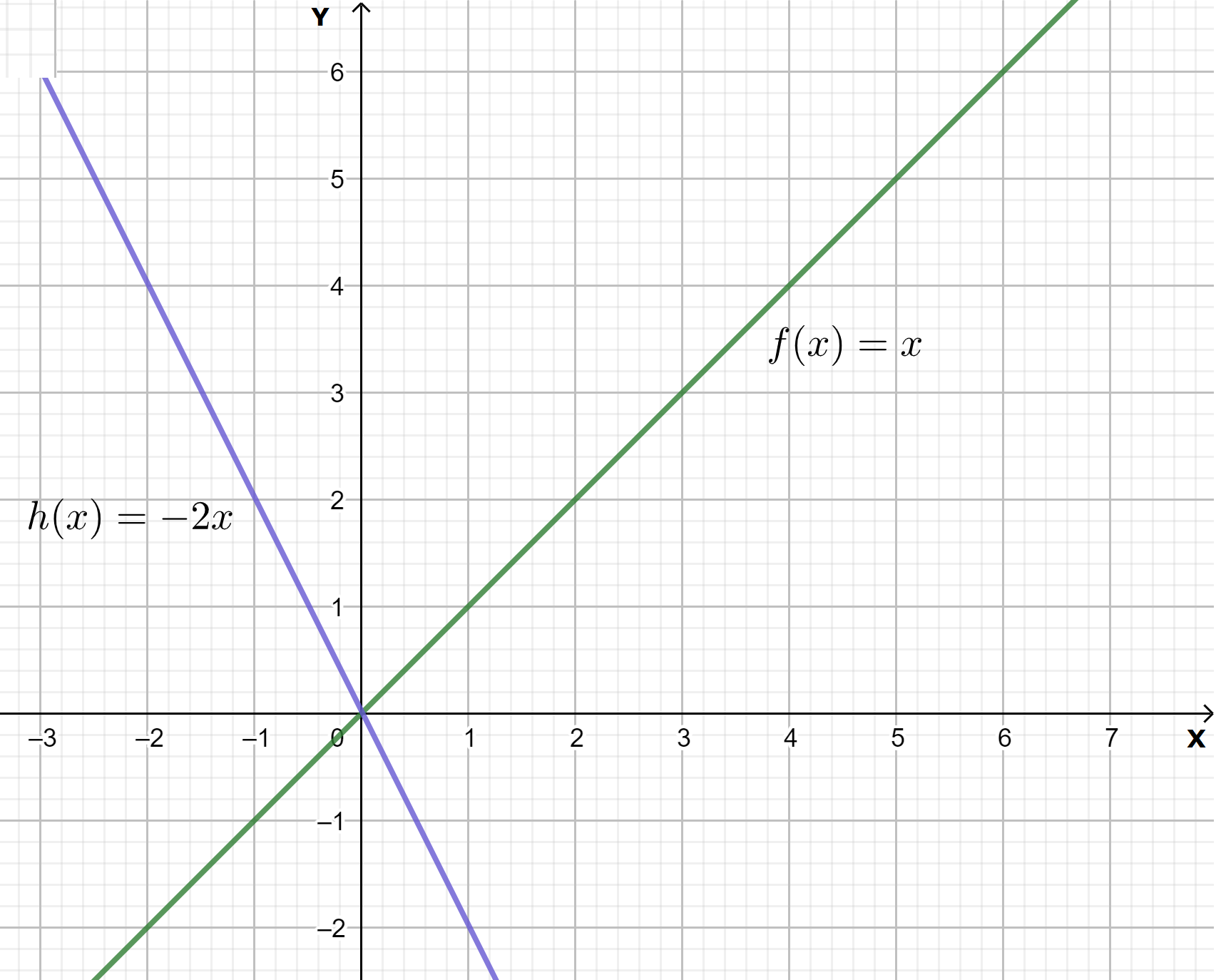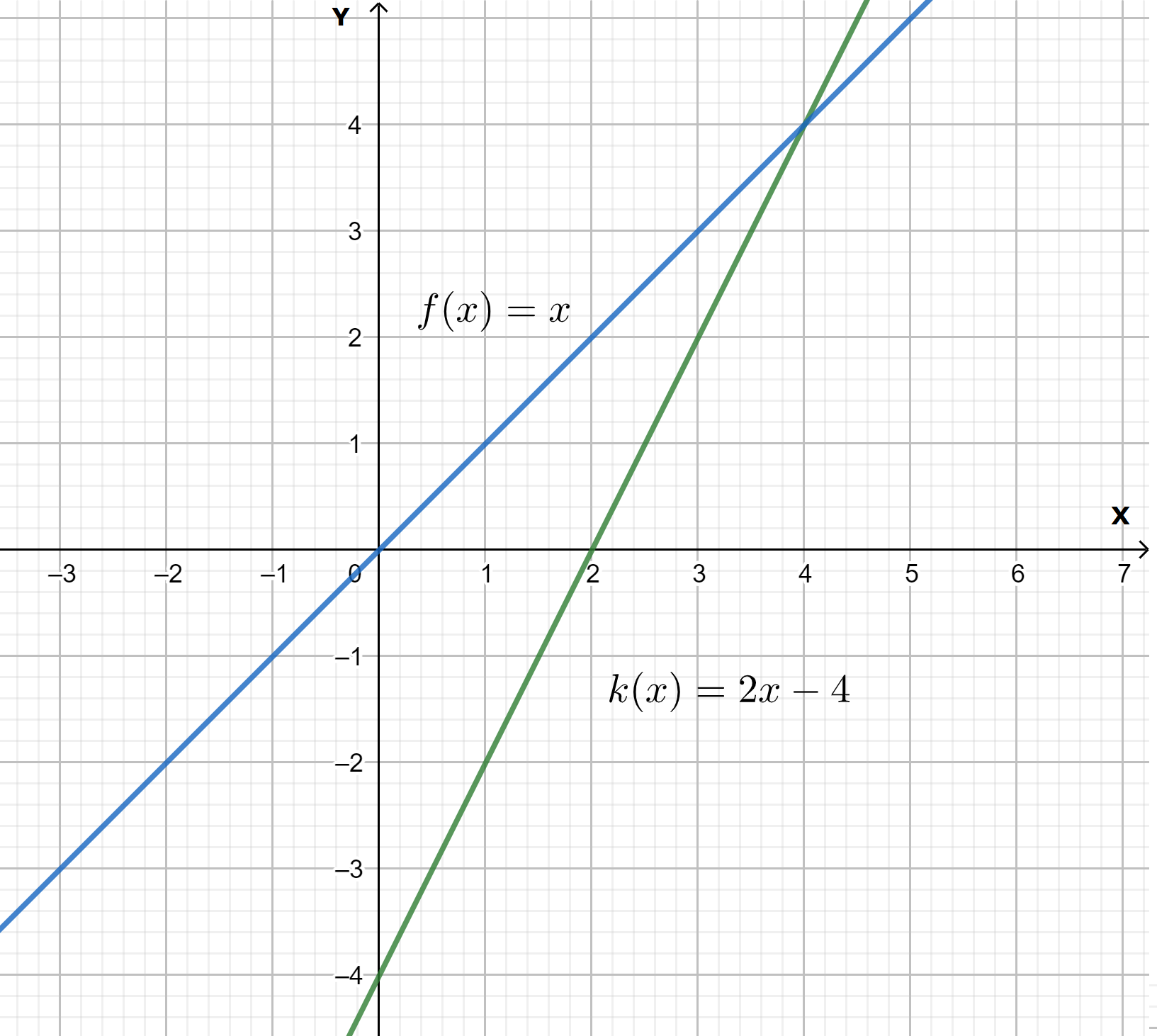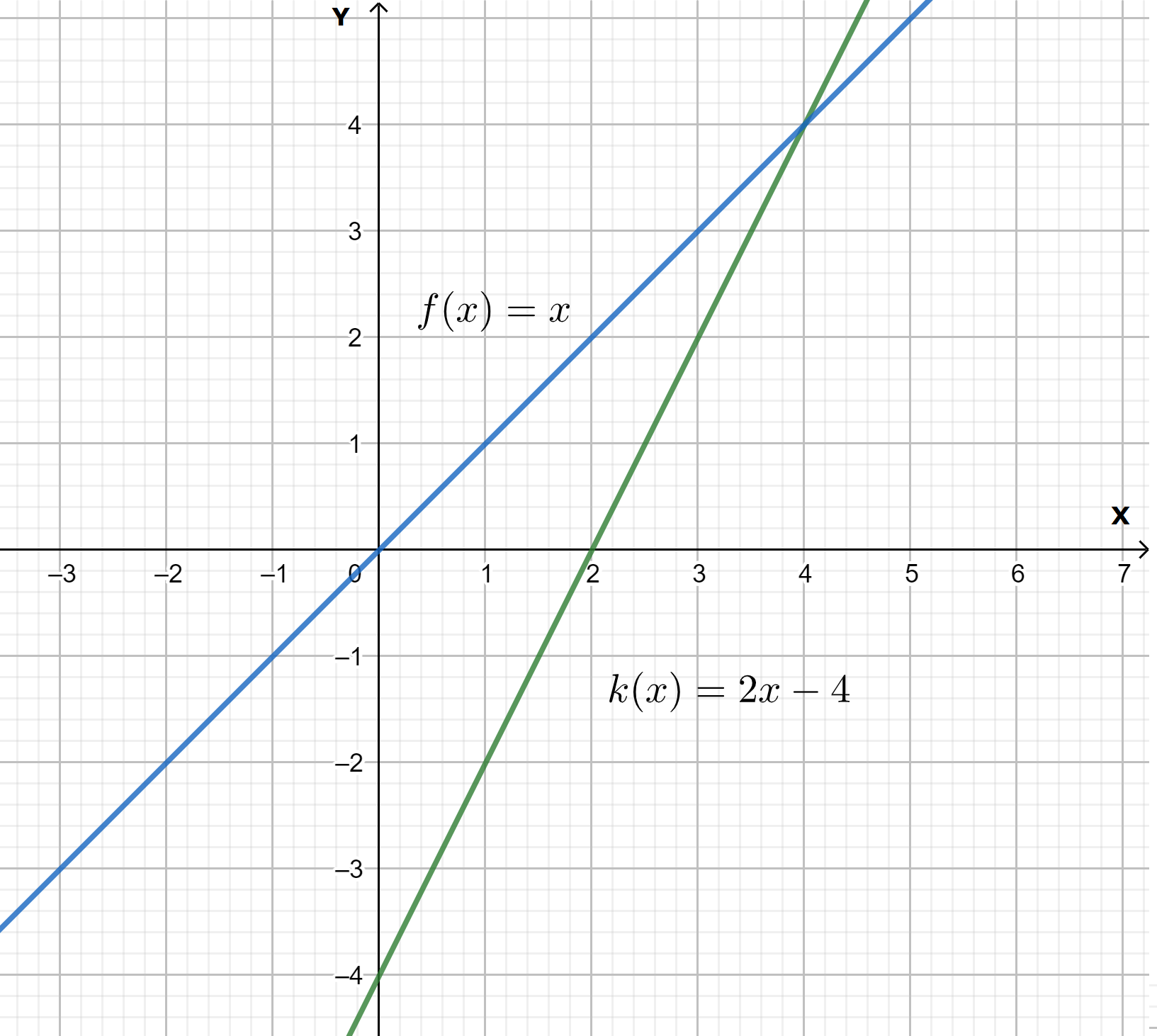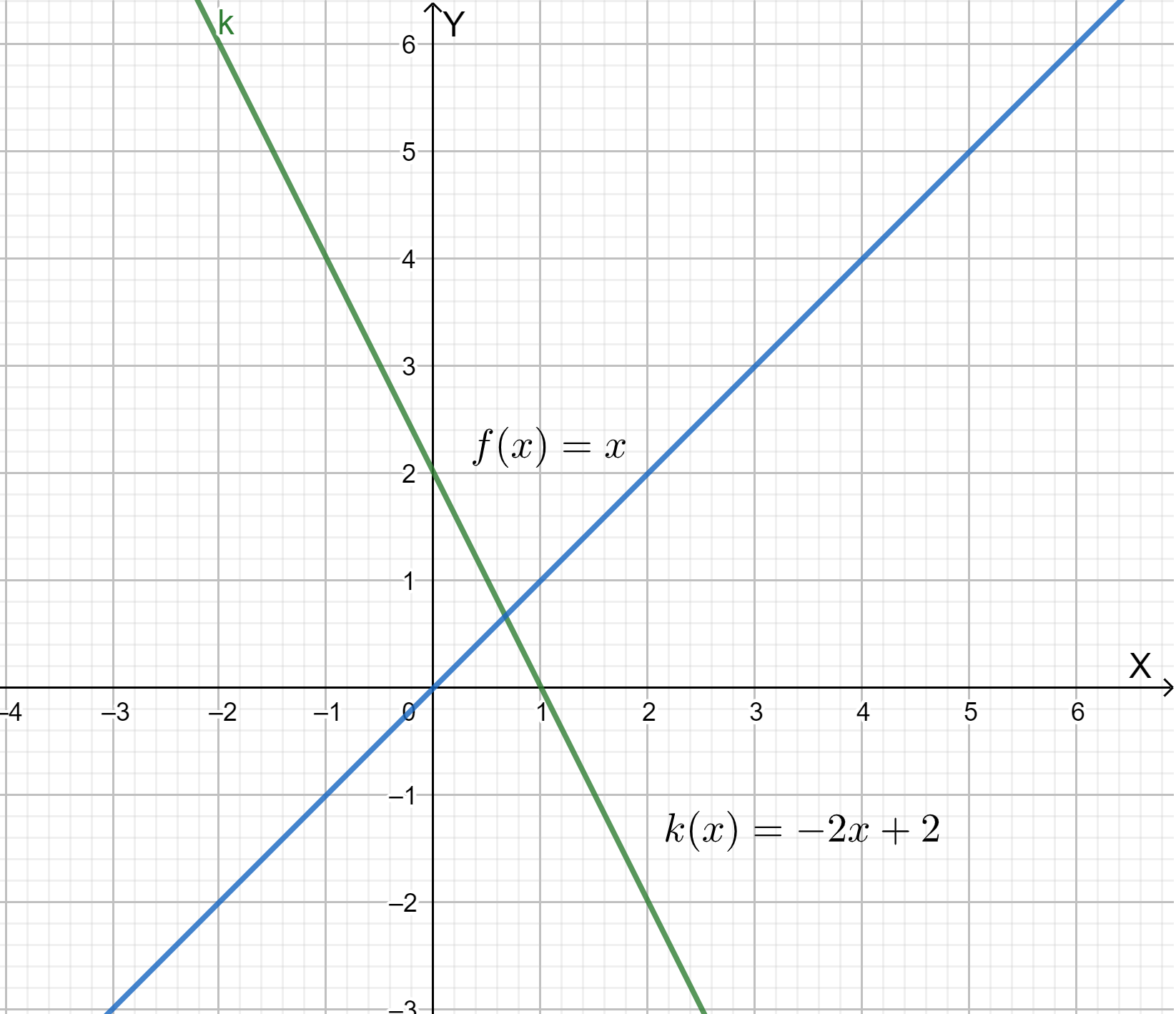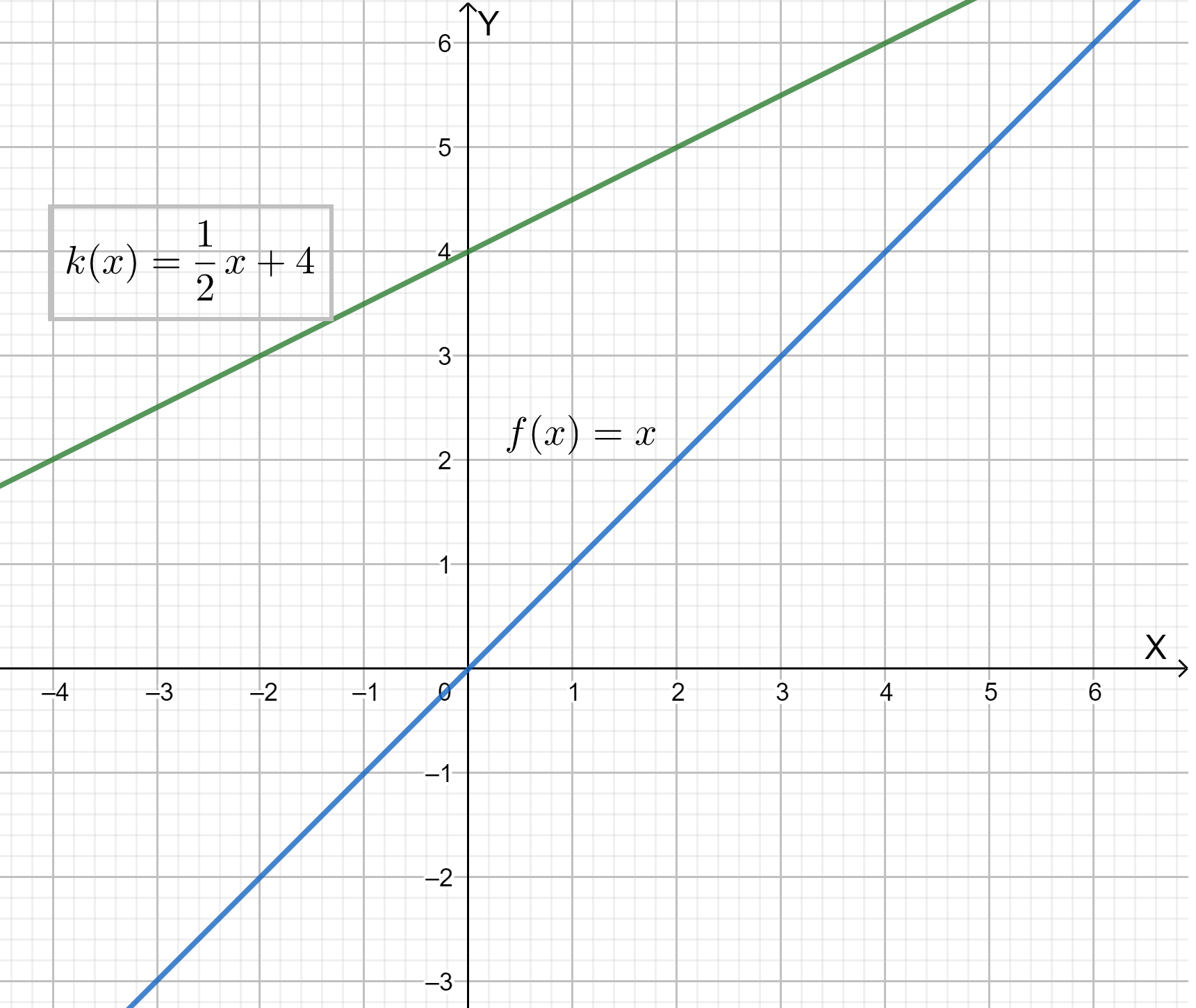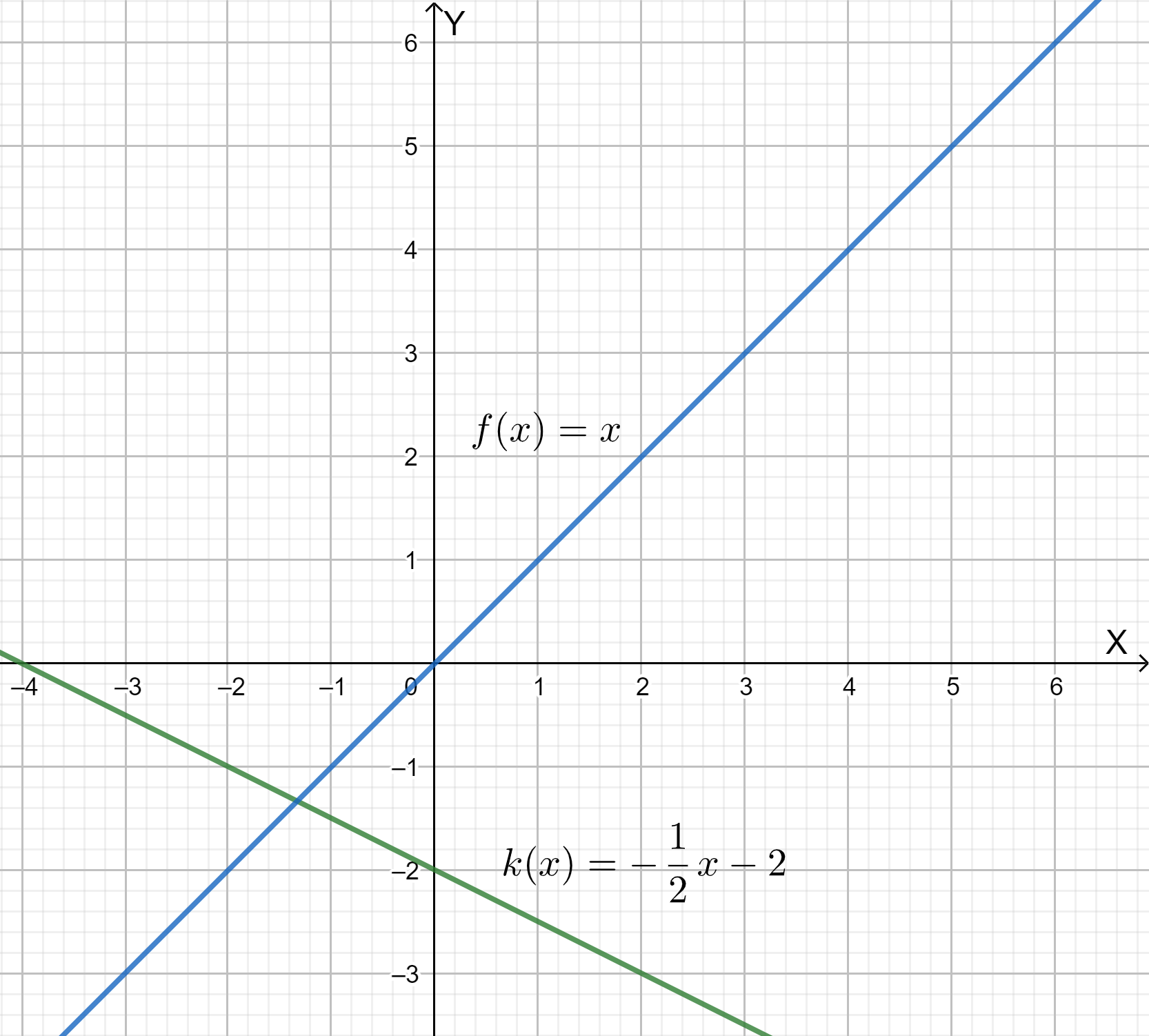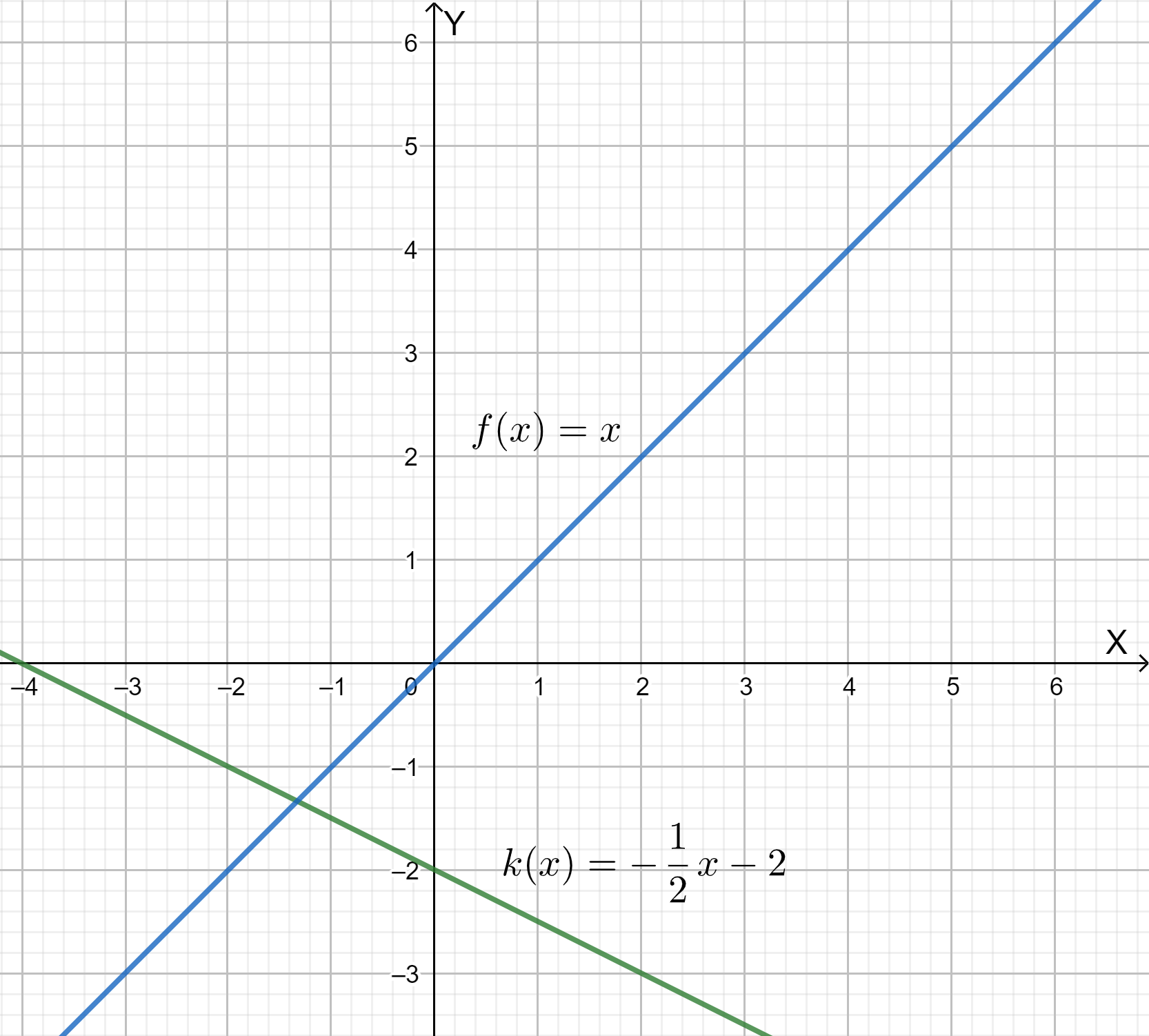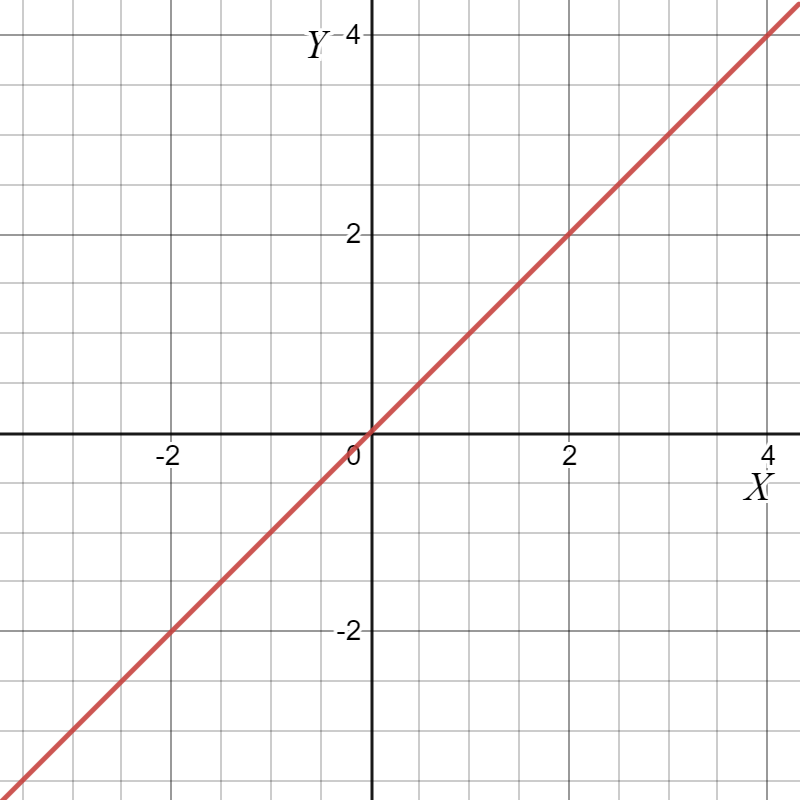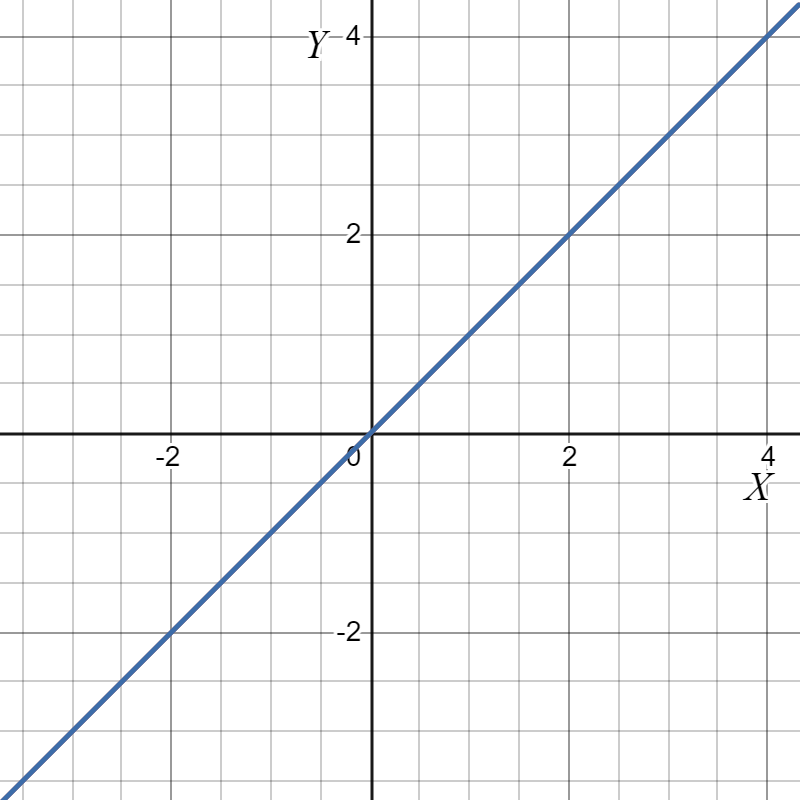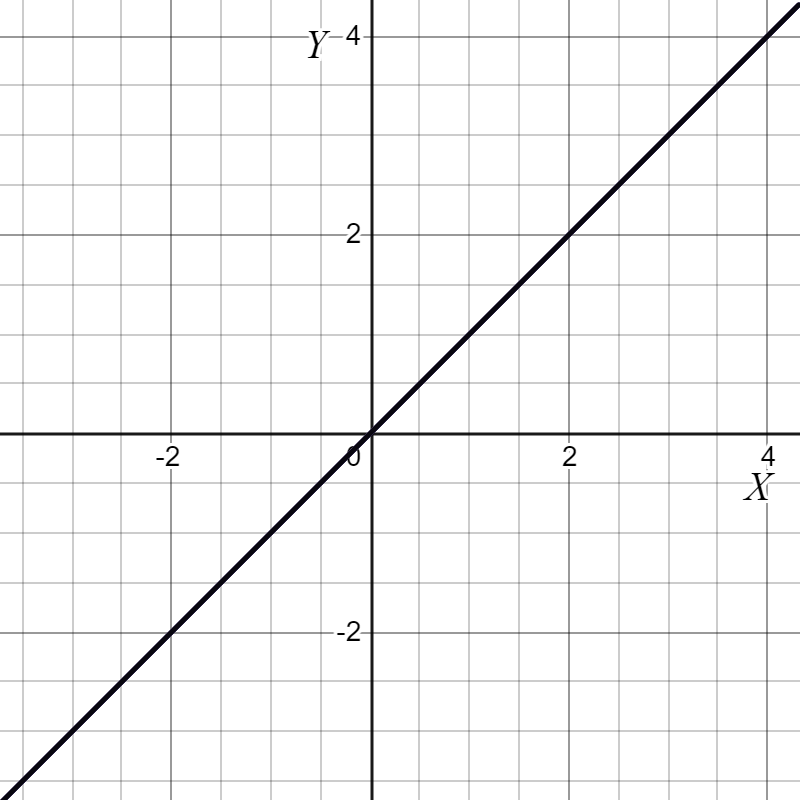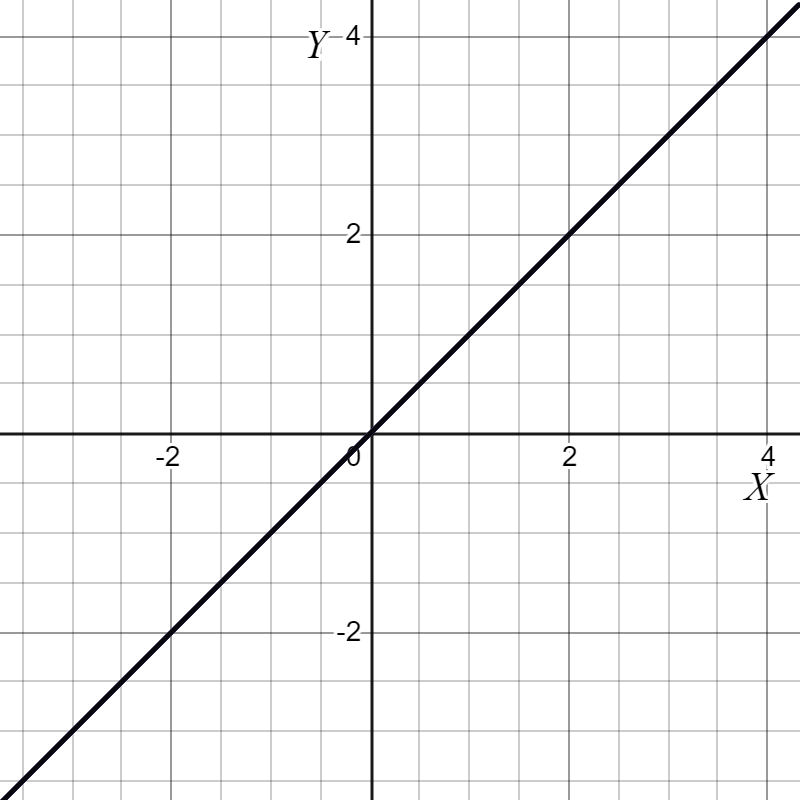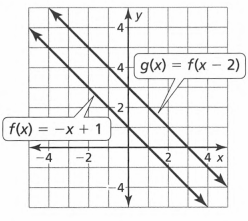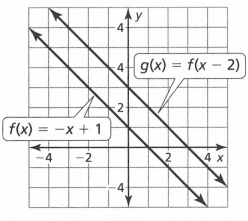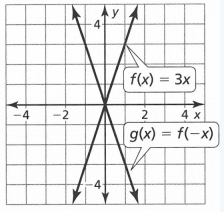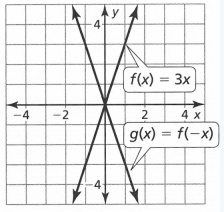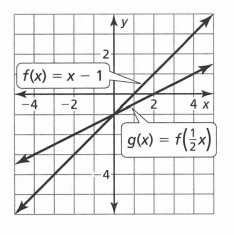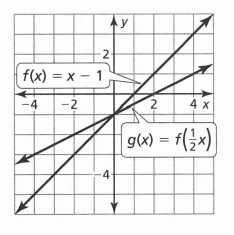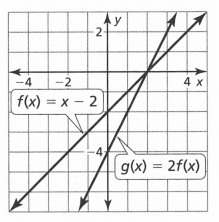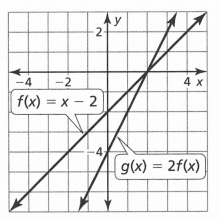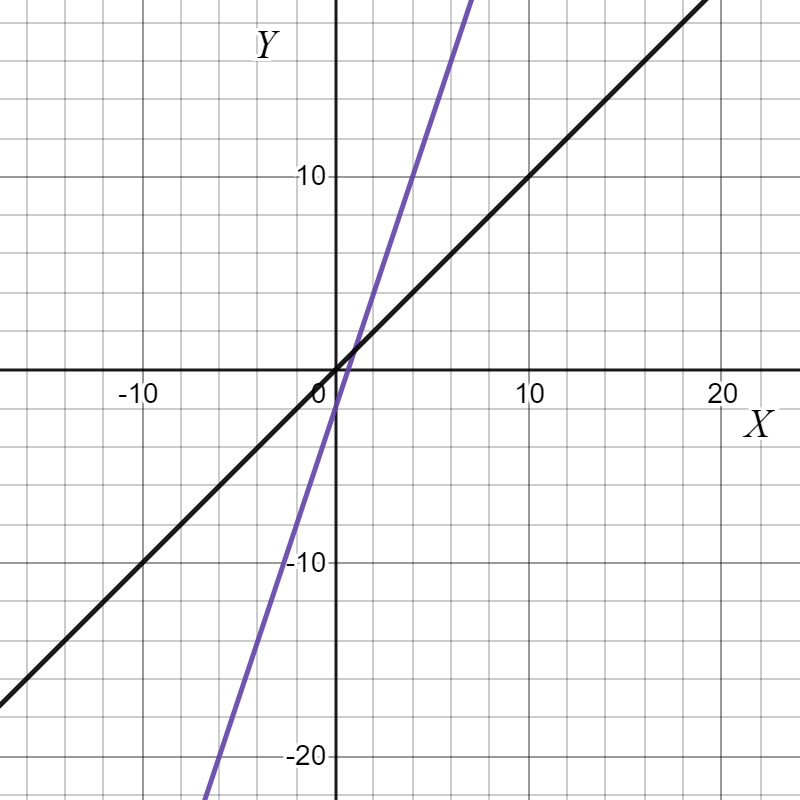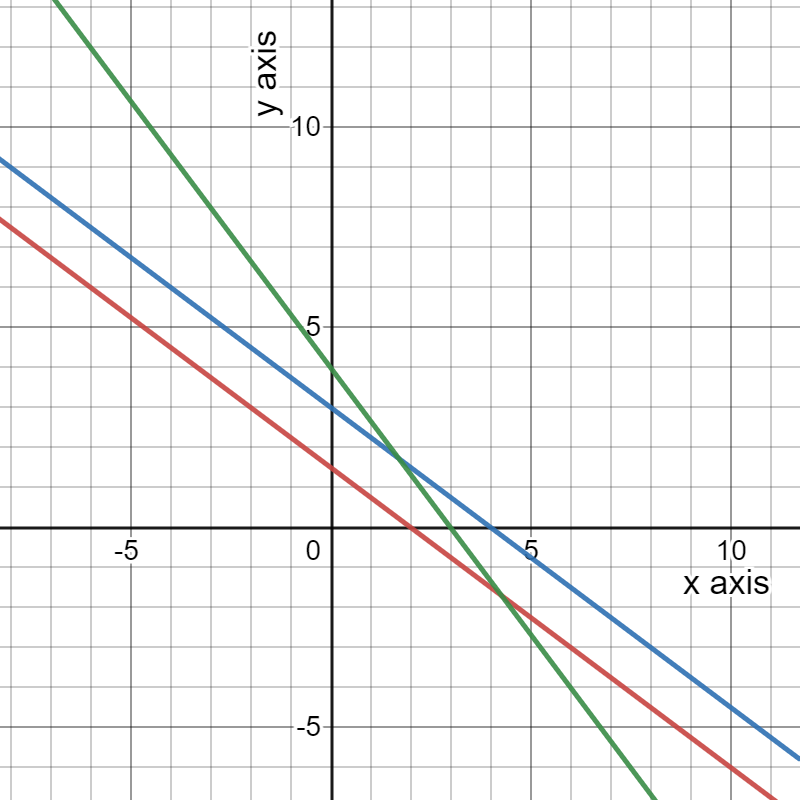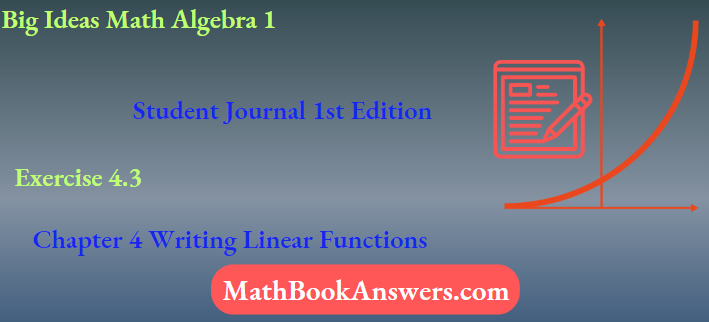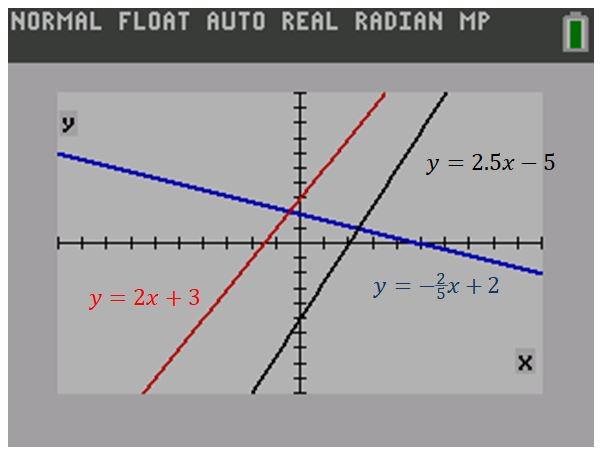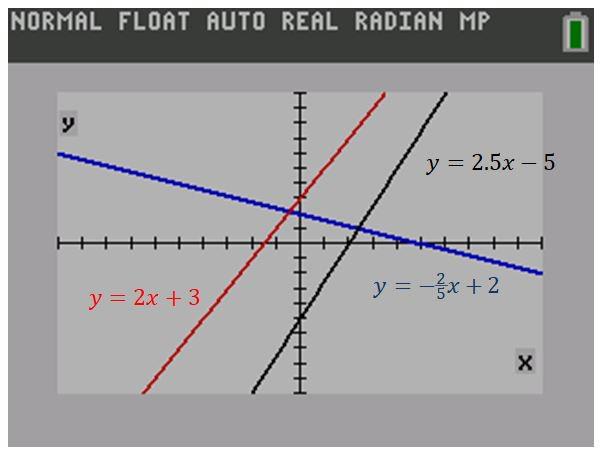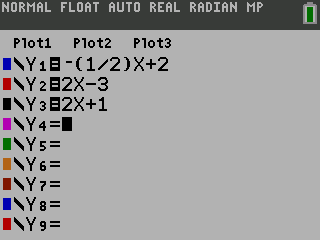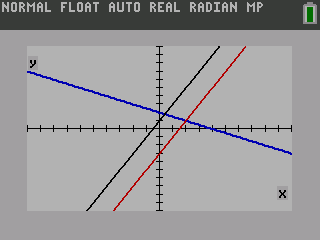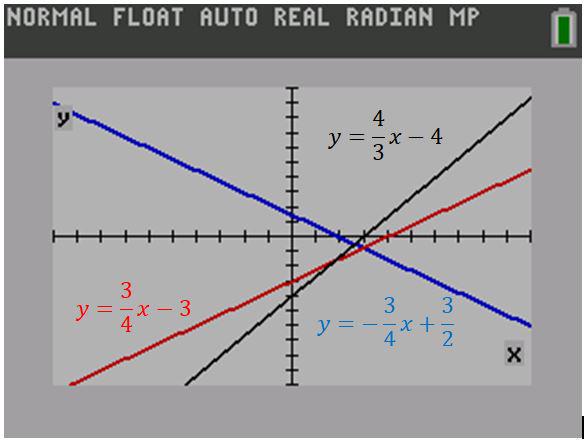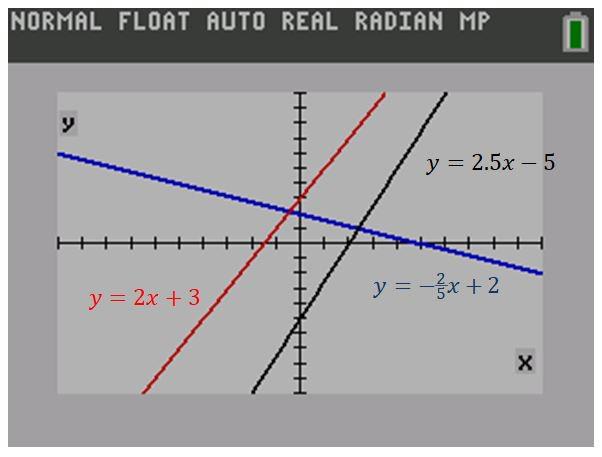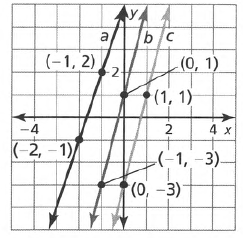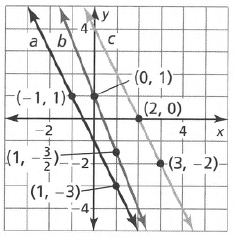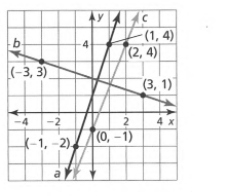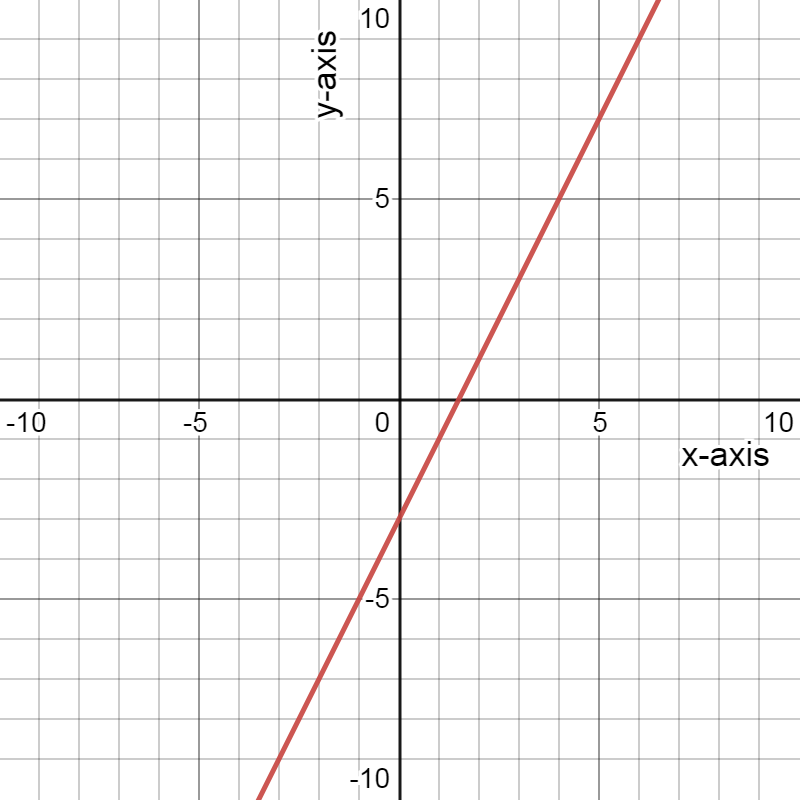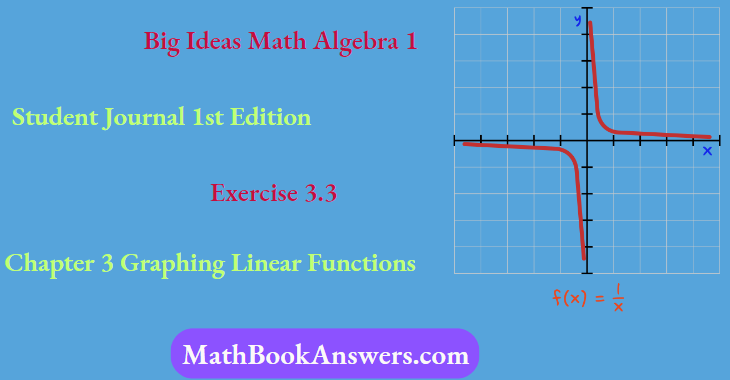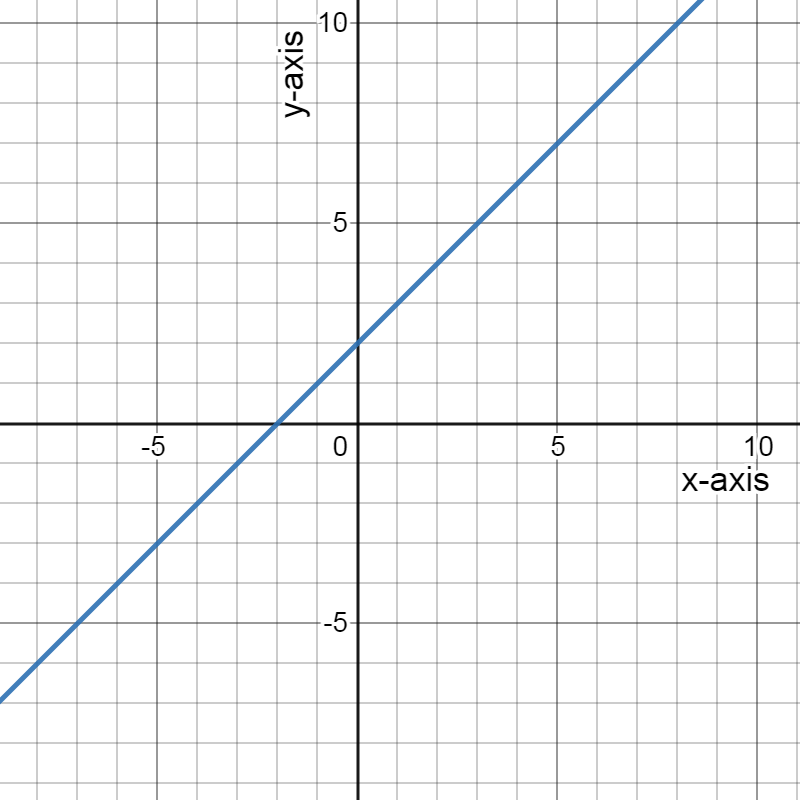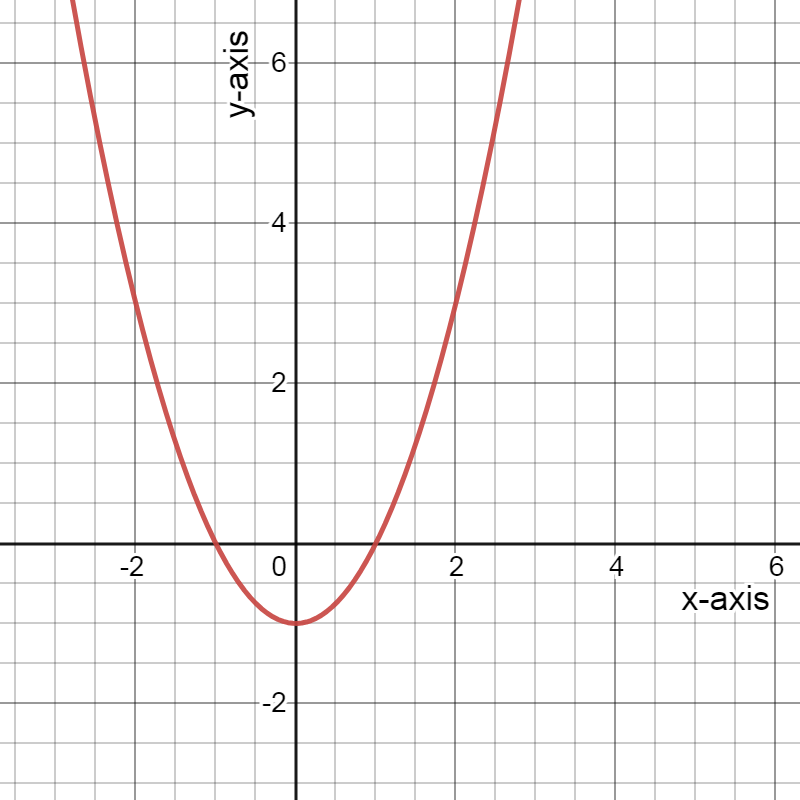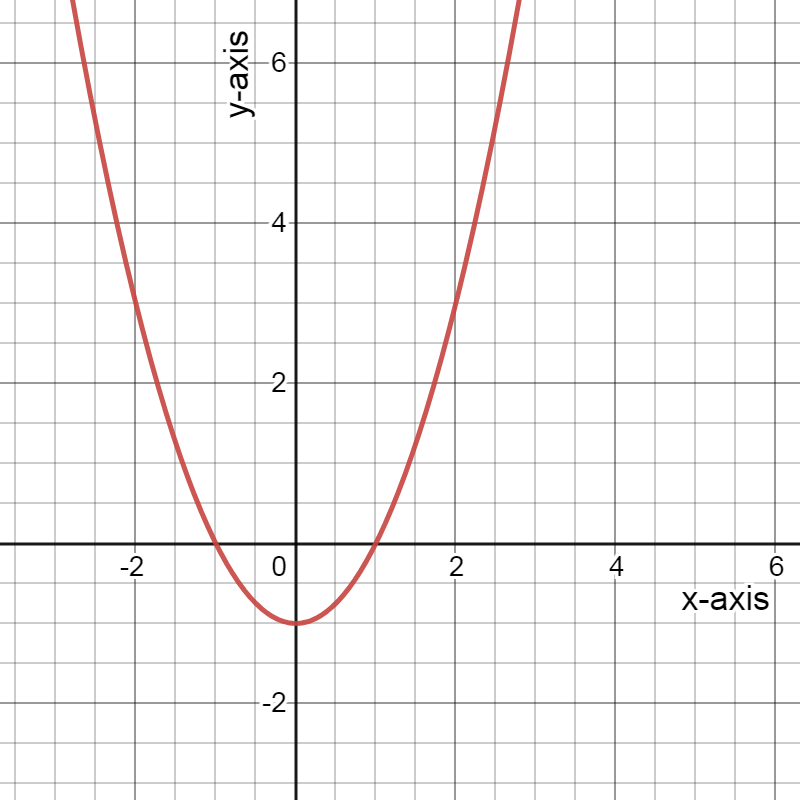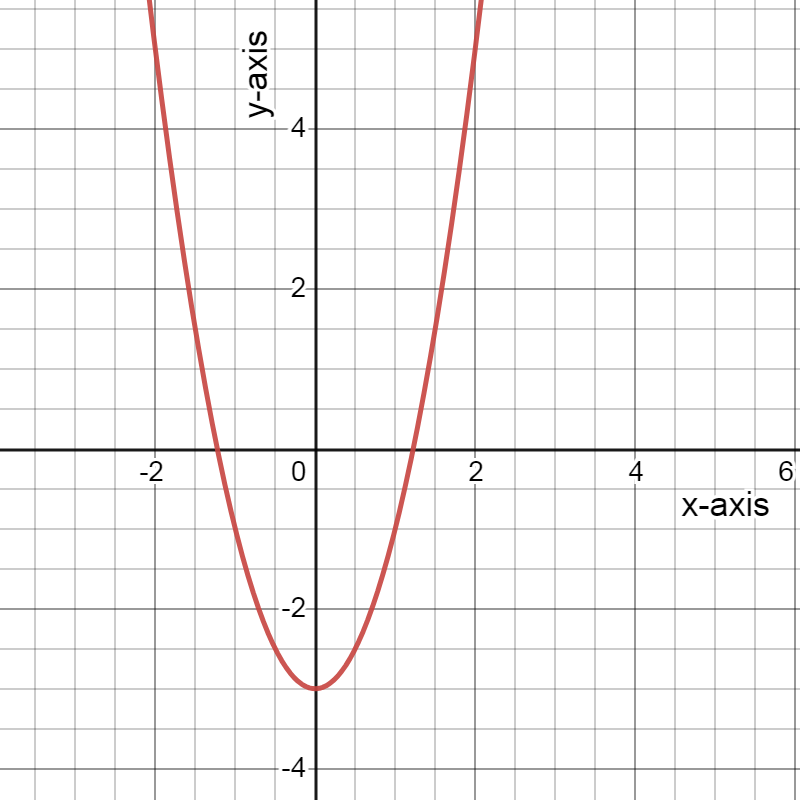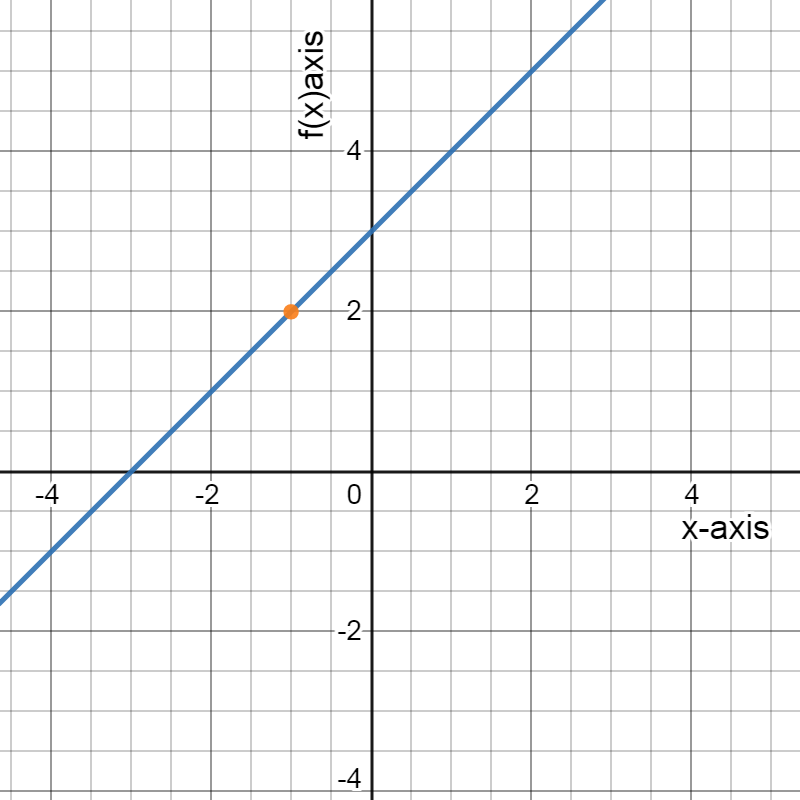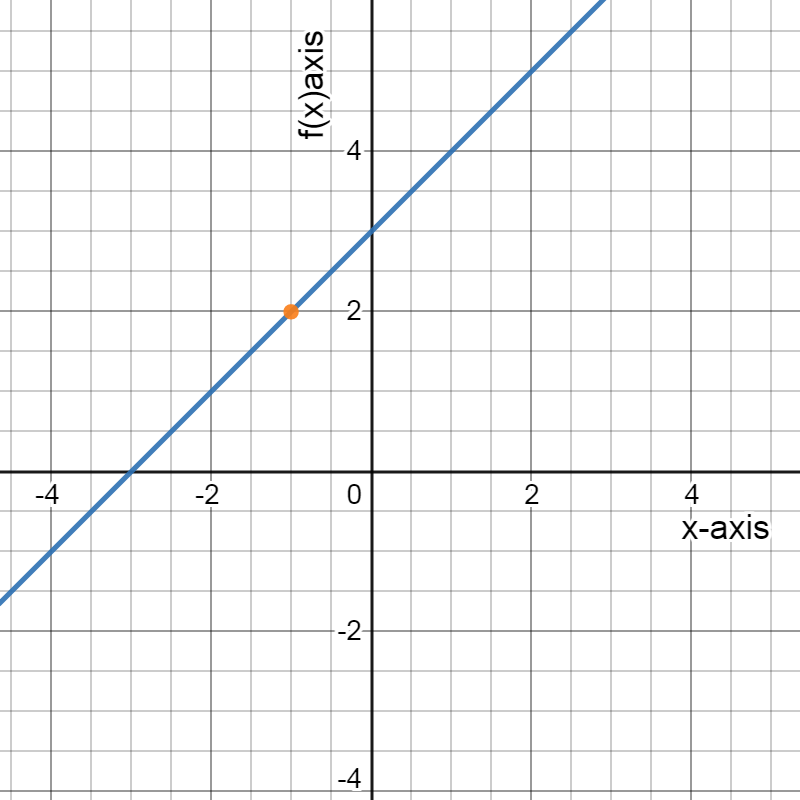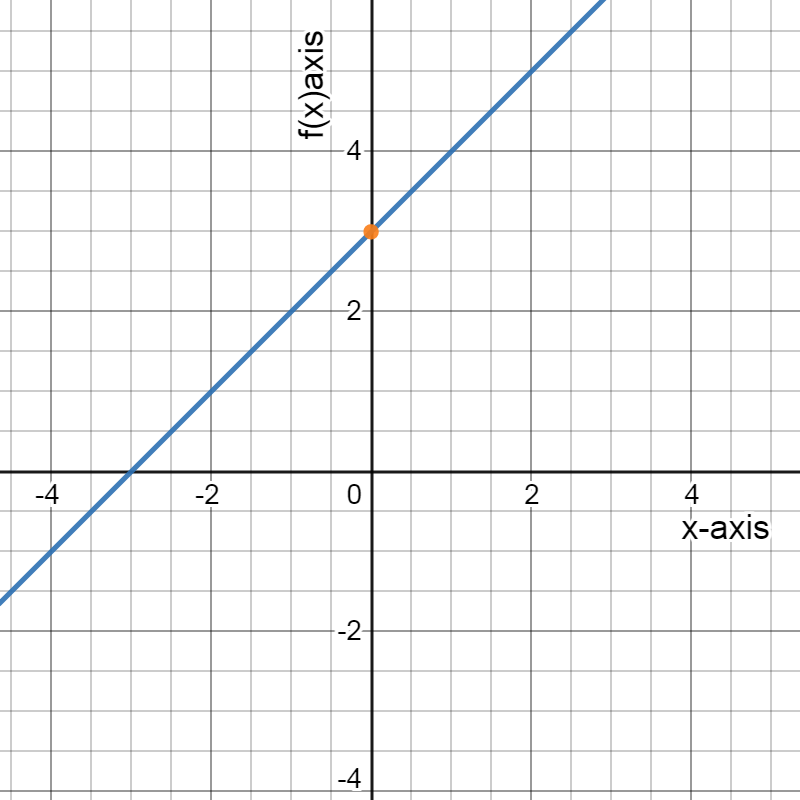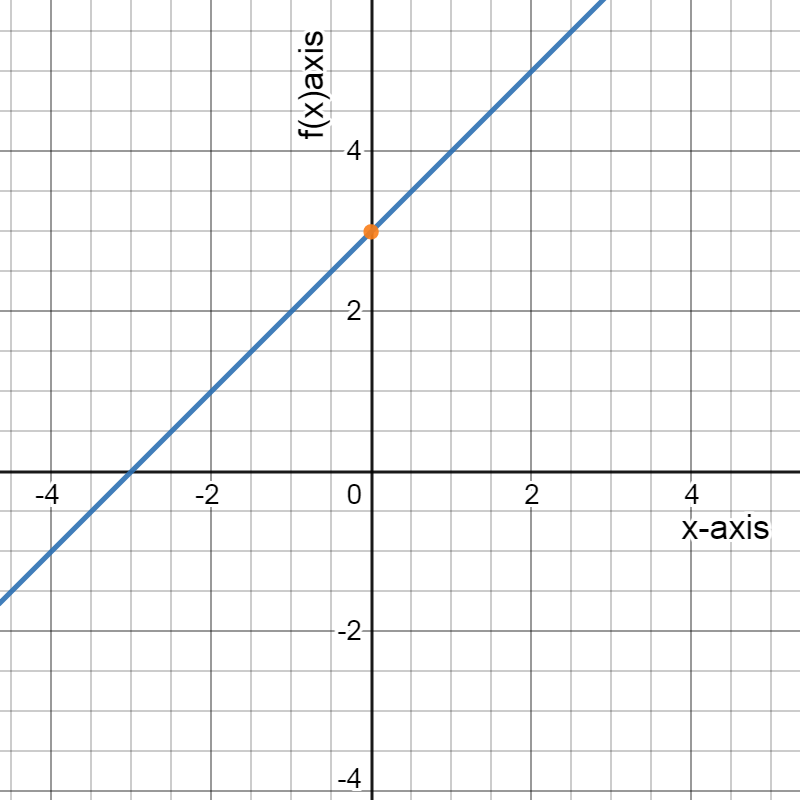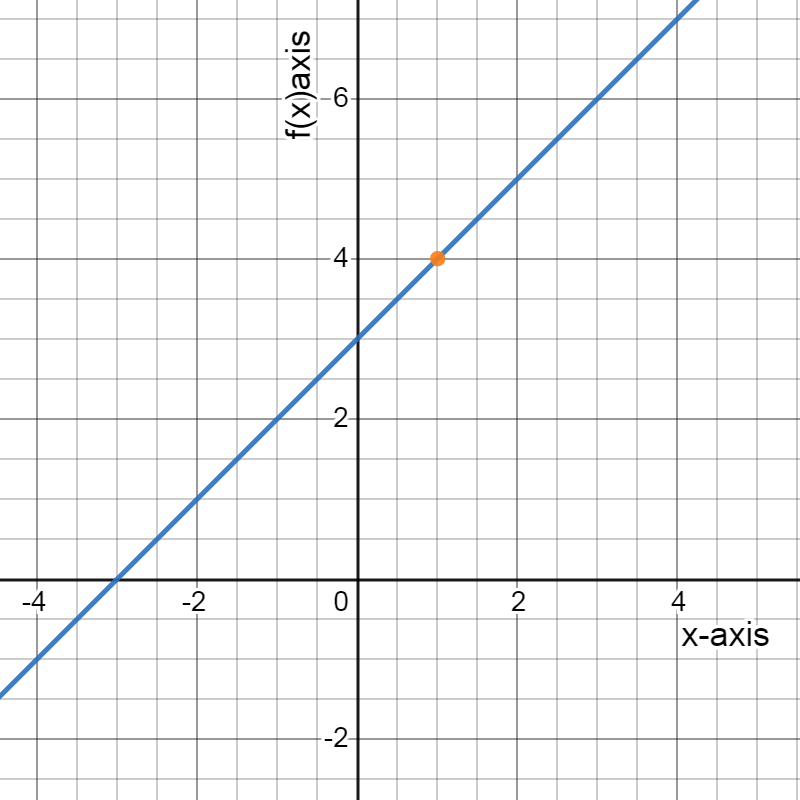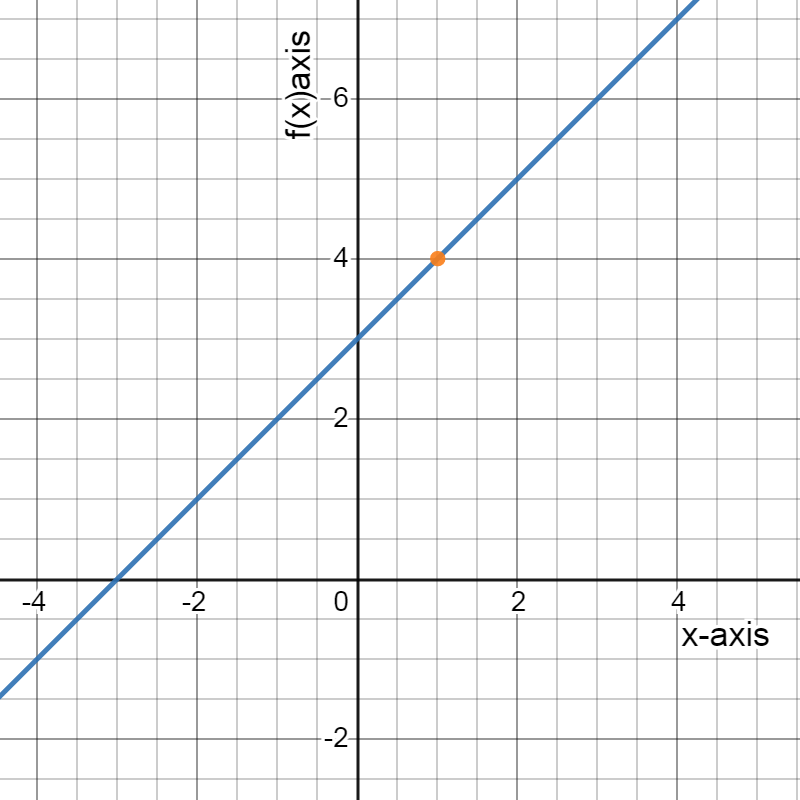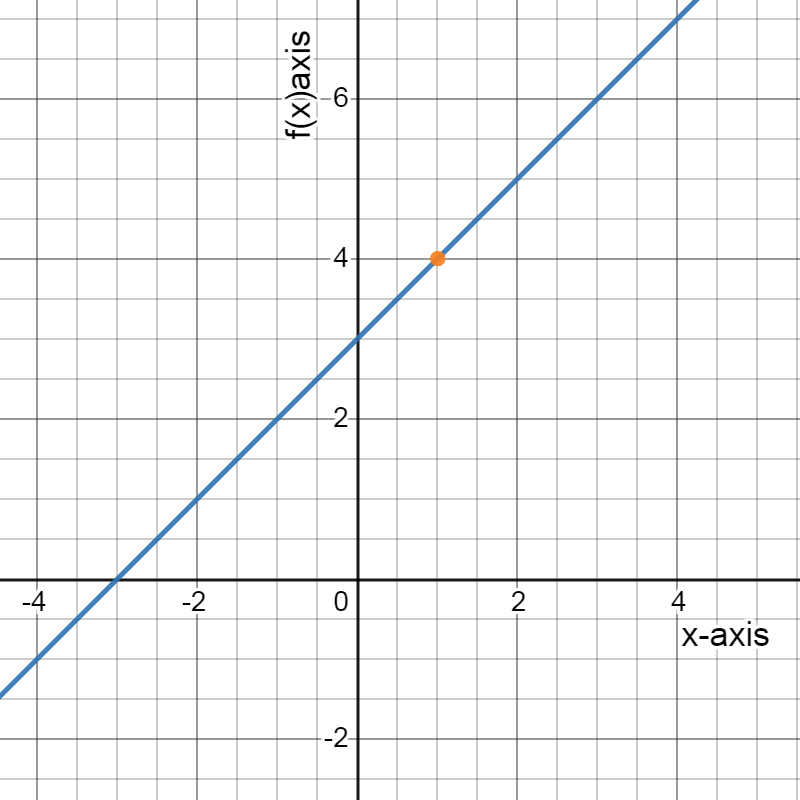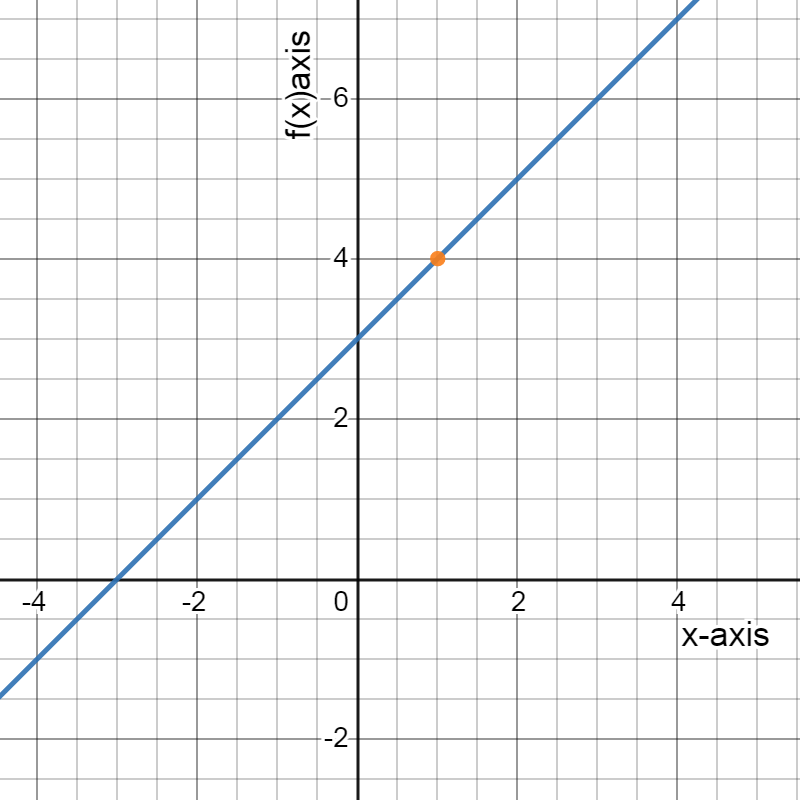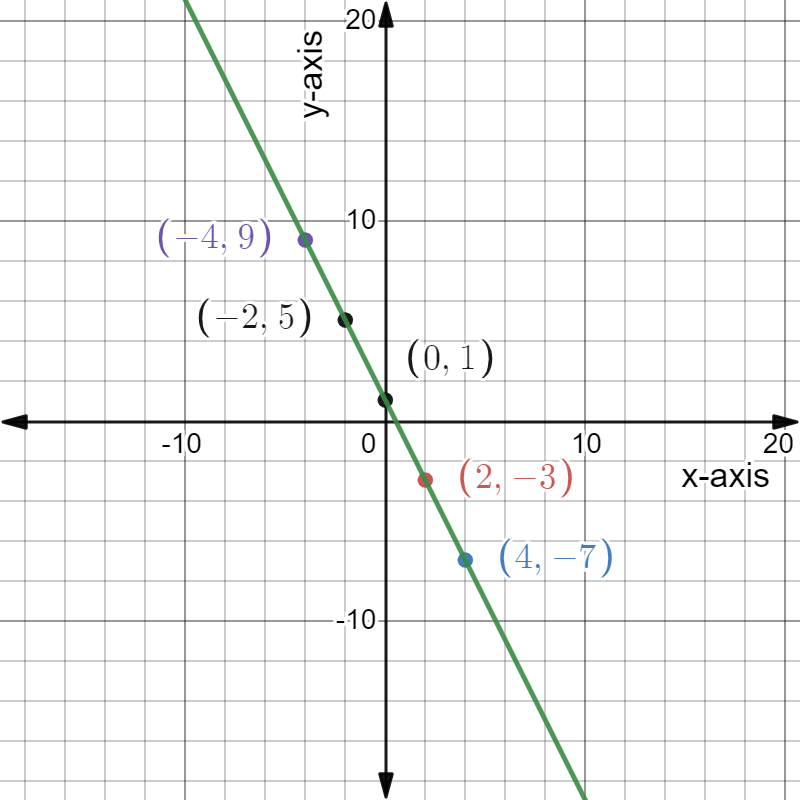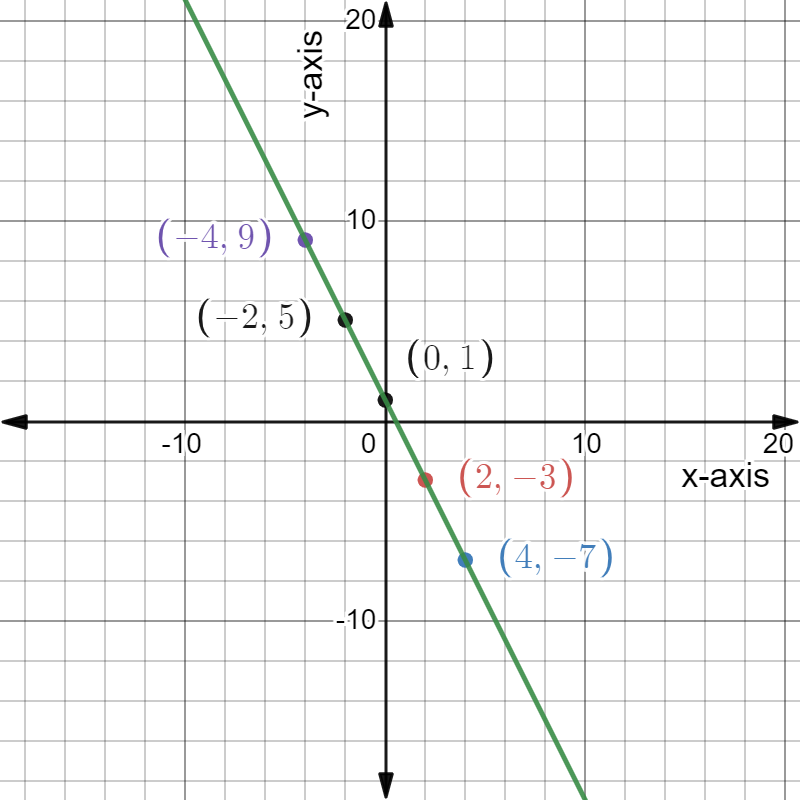Big Ideas Math Algebra 1 Student Journal 1st Edition Chapter 5 Solving Systems Of Linear Equations
Page 137 Essential Question Answer
To solve a system of linear equations using substitution:
Isolate one of the two variables in one of the equations.
Substitute the expression that is equal to the isolated variable from ,into the other equation. This should result in a linear equation with only one variable.
Solve the linear equation for the remaining variable.
Use the solution of, to calculate the value of the other variable in the system by using one of the original equations.
The substitution method is the algebraic method to solve simultaneous linear equations. The value of one variable from one equation is substituted in the other equation. In this way, a pair of the linear equation gets transformed into one linear equation with only one variable, which can then easily be solved.
Big Ideas Math Algebra 1 Chapter 5 Exercise 5.2 Solutions
Page 137 Exercise 1 Answer
Given: x + y =−7 & −5x + y=5
To Solve: System of linear equations
To solve a system of equations using substitution:
Isolate one of the two variables in one of the equations.
Substitute the expression that is equal to the isolated variable from, into the other equation. This should result in a linear equation with only one variable.
Solve the linear equation for the remaining variable.
Use the solution of, to calculate the value of the other variable in the system by using one of the original equations.
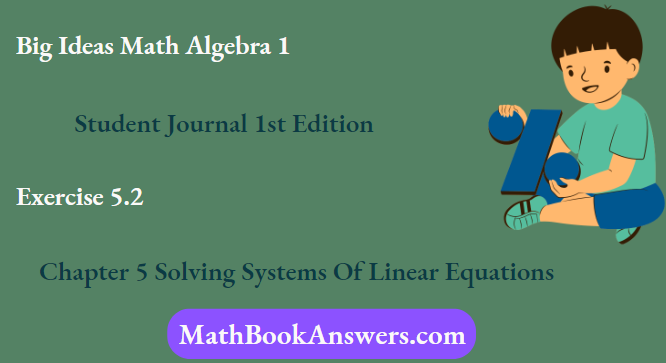
We have the following system of linear equations:
x + y =−7 & −5x + y = 5
x + y =−7 ⇔ x =−y −7
Read and Learn More Big Ideas Math Algebra 1 Student Journal 1st Edition Solutions
Putting value of x in the second equation:
−5x + y = 5 ⇔ −5(−y−7) + y=5
⇒ 6y + 35 = 5
⇒ 6y =−30
⇒ y =−5
∴x =−y−7 =−(−5)−7 =−2
We have the following system of linear equations:
x + y =−7 & −5x + y=5
x + y =−7 ⇔ y =−x−7
Putting value of y in the second equation:
−5x + y = 5 ⇔ −5x + (−x−7) = 5
⇒ −5x−x−7 = 5
⇒ −6x = 12
⇒ x =−2
∴y =−x−7 =−(−2)−7 =−5
The solution of the system of linear equations x + y =−7 & −5x + y=5 is (x,y)=(−2,−5).
The solution is same using both methods. I will prefer both methods to use for each system.
Given: x−6y = −11 & 3x + 2y =7
To Solve: System of linear equations
To solve a system of equations using substitution:
Isolate one of the two variables in one of the equations.
Substitute the expression that is equal to the isolated variable from, into the other equation. This should result in a linear equation with only one variable.
Solve the linear equation for the remaining variable.
Use the solution of, to calculate the value of the other variable in the system by using one of the original equations.
We have the following system of linear equations:
x−6y = −11 & 3x + 2y
=7 x−6y =−11 ⇔ x = 6y−11
Putting value of x in the second equation:
3x + 2y= 7 ⇔ 3 (6y−11) + 2y = 7
⇒ 20y−33 = 7
⇒ 20y = 0
⇒ y = 2
∴x = 6y−11 = 6×2−11 = 1
We have the following system of linear equations:
x−6y = −11 & 3x + 2y = 7 x−6y
=−11 ⇔ y= \(\frac{x+11}{6}\)
Putting value of y in the second equation:
3x + 2y = 7 ⇔ 3x + 2 \(\frac{x+11}{6}\)=7
⇒ \(\frac{10 x}{3}+\frac{11}{3}\)=7
⇒ 10x +11=21
⇒ 10x=10
⇒ x=1
∴ \(\frac{x+11}{6}=\frac{1+11}{6}\)=2
The solution of the system of linear equations x−6y =−11 & 3x + 2y = 7 is (x,y)=(1,2).
The solution is same using both methods.I will prefer both methods to use for each system.
Given: 4x + y =−1 & 3x−5y =−18
To Solve: System of linear equations
To solve a system of equations using substitution:
Isolate one of the two variables in one of the equations.
Substitute the expression that is equal to the isolated variable from, into the other equation. This should result in a linear equation with only one variable.
Solve the linear equation for the remaining variable.
Use the solution of, to calculate the value of the other variable in the system by using one of the original equations.
We have the following system of linear equations:
4x+y=−1 & 3x−5y=−18
4x + y=−1⇔ x=\(\frac{-1-y}{4}\)
Putting value of x in the second equation:
3x−5y =−18 ⇔ 3(\(\frac{-1-y}{4}\))−5y=−18
⇒ \(-\frac{3}{4}-\frac{23 y}{4}\)=-18
⇒ −3−23y =−72
⇒ −23y =−69
⇒ y =3
∴x \(\frac{-1-y}{4}=\frac{-1-3}{4}\)=-1
=−1
We have the following system of linear equations:
4x + y =−1 & 3x−5y =−18
4x+y=−1 ⇔ y=−4x−1
Putting value of y in the second equation:
3x−5y=−18 ⇔ 3x−5(−4x−1)=−18
⇒ 3x + 20x + 5=−18
⇒ 23x =−23
⇒ x =−1
∴y =−4x−1 =−4(−1)−1 = 3
The solution of the system of linear equations 4x + y =−1 & 3x−5y =−18 is (x,y)=(−1,3).
The solution is same using both methods.I will prefer both methods to use for each system.
Page 138 Exercise 2 Answer
Given: The ordered pair generated at the right is (−2,−3).
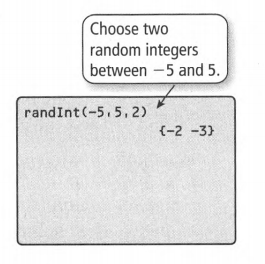
To Write: A random ordered pair with integer coordinates.
A random ordered pair with integer coordinates is (−2,2).
The ordered pair generated at the right is (−2,−3).
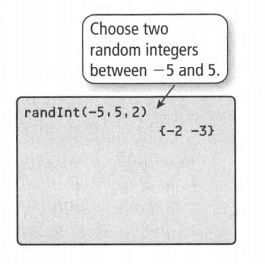
A random ordered pair with integer coordinates is (−2,2).
Given: A random ordered pair with integer coordinates (−2,2)
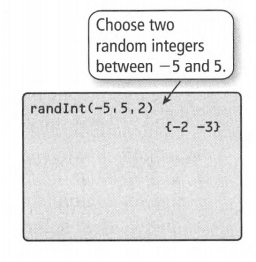
To Write: A system of linear equations that has your ordered pair as its solution. The equation will be of the form \(\frac{y-2}{x-(-2)}\)=n where n is any value.
The equation will be of the form \(\frac{y-2}{x+2}\)=n.
\(\frac{y-2}{x+2}\)=4 & \(\frac{y-2}{x+2}\)=3
⇒ y−2 = 4x + 8 & y−2 = 3x + 6
⇒ y−4x = 10 & y−3x = 8
A system of linear equations that has ordered pair (−2,2) as its solution are y−4x=10 and y−3x=8.
Given: A system of linear equations y−4x = 10 and y−3x = 8

To Solve: System of linear equations
To solve a system of equations using substitution:
Isolate one of the two variables in one of the equations.
Substitute the expression that is equal to the isolated variable from Step 1 into the other equation. This should result in a linear equation with only one variable.
Solve the linear equation for the remaining variable.
Use the solution of Step 3 to calculate the value of the other variable in the system by using one of the original equations.
We have the following system of linear equations:
y−4x = 10 & y−3x = 8
y−4x = 10 ⇔ y = 10 + 4x
Putting value of y in the second equation:
y−3x = 8 ⇔ 10 + 4x−3x = 8
⇒ x = 8−10
⇒ x =−2
∴ y =10 + 4x=10 + 4(−2) = 10−8 = 2
The solution of the system of linear equations y−4x = 10 & y−3x = 8 is (x,y)=(−2,2).
Big Ideas Math Algebra 1 Student Journal 1st Edition Chapter 5 Solving Systems Of Linear Equations Exercise 5.4 Page 138 Exercise 3 Answer
To solve a system of linear equations using substitution:
Isolate one of the two variables in one of the equations.
Substitute the expression that is equal to the isolated variable from point 1 into the other equation. This should result in a linear equation with only one variable.
Solve the linear equation for the remaining variable.
Use the solution of point 3 to calculate the value of the other variable in the system by using one of the original equations.
The Substitution method is the algebraic method to solve simultaneous linear equations. The value of one variable from one equation is substituted in the other equation. In this way, a pair of the linear equation gets transformed into one linear equation with only one variable, which can then easily be solved.
Solving Systems Of Equations Exercise 5.2 Answers
Page 140 Exercise 2 Answer
Given: The System of linear equations is 2x−y = 3, x = −2y −1
We need to solve the given equation to find the value of x and y.
We will solve the given system of linear equations using the substitution method.
In equation second, we already have the value of x, in terms of y.
We will put the second equation in first equation to find the value of y.
2x−y = 3
⇒ 2×(−2y−1)−y = 3
⇒ −4y−2−y = 3
⇒ −5y=3 + 2
⇒ −5y = 5
⇒ y =−1
Now, put the value of y, in equation second to find out the value of x.
⇒ x =−2y−1
⇒ x =−2×−1−1
⇒ x =2−1
⇒ x =1
The solution of the system of linear equations 2x−y = 3,x =−2y−1 is x =1,y =−1.
Page 140 Exercise 3 Answer
Given: The System of linear equations is x−3y =−1, x = y
We need to solve the given equation to find the value of x and y.
We will solve the given system of linear equations using the substitution method.
In equation second, we already have the value of x in terms of y. We will put the second equation in the first equation to find the value of y.
⇒ x−3y =−1
⇒ y−3y =−1
⇒ −2y =−1
⇒ y\(=\frac{1}{2}\)
Now, put the value of y, in equation second to find out the value of x.
⇒ x = y
⇒ x\(=\frac{1}{2}\)
The solution of the system of linear equations x−3y =−1, x =y is x\(=\frac{1}{2}\) ,y\(=\frac{1}{2}\).
Big Ideas Math Algebra 1 Student Journal 1st Edition Chapter 5 Solving Systems Of Linear Equations Exercise 5.4 Page 140 Exercise 4 Answer
Given: The System of linear equations is x−2y =−3, y = x+1
We need to solve the given equation to find the value of x and y.
We will solve the given system of linear equations using the substitution method.
In equation second, we already have the value of y, in terms of x. We will put the second equation in first equation to find the value of x.
x−2y =−3
⇒ x−2×(x+1) =−3
⇒ x−2x−2 =−3
⇒ −x =−3+2
⇒ x = 1
Now, put the value of x, in equation second to find the value of y.
⇒ y = x + 1
⇒ y = 1 + 1
⇒ y = 2
The solution of the system of linear equations x−2y =−3,y = x+1 is x = 1,y = 2.
Page 140 Exercise 5 Answer
Given: The System of linear equations is 2x + y =3, x = 3y + 5
We need to solve the given equation to find the value of x and y.
We will solve the given system of linear equations using the substitution method.
In equation second, we already have the value of x, in terms of y. We will put the second equation in the first equation to find the value of y.
2x + y =3
⇒ 2×(3y + 5) +y = 3
⇒ 6y+ 10 + y = 3
⇒ 7y = 3−10
⇒ 7y =−7
⇒ y =−1
Now, put the value of y, in equation second to find out the value of x.
x = 3y + 5
⇒ x = 3×−1 + 5
⇒ x =−3 + 5
⇒ x = 2
The solution of the system of linear equations 2x + y = 3,x = 3y + 5 is x = 2,y =−1.
Big Ideas Math Student Journal Exercise 5.2 Explained
Page 140 Exercise 6 Answer
Given: The System of linear equations is
3x + y=−5
y = 2x + 5
We need to solve the given equation to find the value of x and y.
We will solve the given system of linear equations using the substitution method.
In equation second, we already have the value of y, in terms of x. We will put the second equation in first equation to find the value of x.
3x + y =−5
⇒ 3x + 2x + 5 =−5
⇒ 5x =−5−5
⇒ 5x =−10
⇒x =−2
Now, put the value of x, in equation second to find the value of y.
⇒ y =2x + 5
⇒ y = 2×−2 + 5
⇒ y =−4 + 5
⇒ y = 1
The solution of the system of linear equations is x =−2,y = 1.
Page 140 Exercise 7 Answer
Given: The System of linear equations is y = 2x + 8 y =−2x
We need to solve the given equation to find the value of x and y.
We will solve the given system of linear equations using the substitution method.
In equation second, we already have the value of y, in terms of x. We will put the second equation in first equation to find the value of x.
y = 2x + 8
⇒ −2x = 2x + 8
⇒ −2x−2x = 8
⇒ −4x = 8
⇒ x =−2
Now, put the value of x, in equation second to find the value of y.
⇒ y =−2x
⇒ y =−2×−2
⇒ y =4
The solution of the system of linear equations y = 2x+8,y =−2x is x =−2,y =4.
Big Ideas Math Algebra 1 Student Journal 1st Edition Chapter 5 Solving Systems Of Linear Equations Exercise 5.4 Page 140 Exercise 8 Answer
Given: The System of linear equations is y\(=\frac{3}{4} x+1\) , y\(=\frac{1}{4} x+3\)
We need to solve the given equation to find the value of x and y.
We will solve the given system of linear equations using the substitution method.
In equation second, we already have the value of y, in terms of x. We will put the second equation in first equation to find the value of x.
y=\(\frac{3}{4} x+1\)
⇒ \(\frac{1}{4} x+3\)=\(\frac{3}{4} x+1\)
⇒ \(\frac{1}{4} x-\frac{3}{4} x\) =1-3
⇒ \(\frac{1-3}{4} x\) =-2
⇒ \(\frac{-2}{4} x=\) =-2
⇒ \(\frac{-x}{2}\) =-2
⇒ x = 4
Now, we put the value of x, in equation second to find the value of y.
⇒ y =\(\frac{1}{4} x+3\)
⇒ y = \(\frac{1}{4} \times 4\)+3
⇒ y = 1+3
⇒ y = 4
The solution of the system of linear equation y \(=\frac{3}{4} x+1\),\(=\frac{1}{4} x+3\) is x=4,y=4.
Page 140 Exercise 9 Answer
Given: The System of linear equations is 2x−3y = 0, y = 4
We need to solve the given equation to find the value of x and y.
We will solve the given system of linear equations using the substitution method.
In equation second, we already have the value of y. We will put the second equation in first equation to find the value of x.
2x−3y = 0
⇒ 2x−3×4 = 0
⇒ 2x = 12
⇒ x = 6
The solution of the system of linear equations is x = 6,y = 4.
Page 141 Exercise 11 Answer
Given: The System of linear equations is \(=\frac{1}{2} x+1\), \(=\frac{-1}{2} x+9\)
We need to solve the given equation to find the value of x and y.
We will solve the given system of linear equations using the substitution method.
In equation second, we already have the value of y, in terms of x. We will put the second equation in first equation to find the m value of x.
y\(=\frac{1}{2} x+1\)
⇒ \(\frac{-1}{2} x+9\)\(=\frac{-1}{2} x+1\)
⇒ \(\frac{-1}{2} x-\frac{1}{2} x=\)1-9
⇒ -x = -8
⇒ x = 8
Now, put the value of x, in equation second to find the value of y.
⇒ y = \(\frac{-1}{2} x+9\)
⇒ y = \(\frac{-1}{2} \times 8+9\)
⇒ y = -4+9
⇒ y = 5
The solution of the system of linear equation y\(y=\frac{1}{2} x+1\), y\(=\frac{-1}{2} x+9\) is x = 8,y = 5.
Chapter 5 Exercise 5.2 Solving Systems Practice
Big Ideas Math Algebra 1 Student Journal 1st Edition Chapter 5 Solving Systems Of Linear Equations Exercise 5.4 Page 141 Exercise 13 Answer
Given: System of linear equations is 7x−4y = 8, 5x−y = 2
We need to solve the given equation to find the value of x and y.
We will solve the given system of linear equations using the substitution method.
From the second equation, we will find the value of y in terms of x.
⇒ 5x−y = 2
⇒ y = 5x−2
We will put the above value of y, in first equation to find the value of x.
7x−4y = 8
⇒ 7x−4×(5x−2) = 8
⇒ 7x−20x + 8=8
⇒ −13x=8−8
⇒ x=0
Now, we will put the value of x, in second equation to find the value of y.
⇒ y=5x−2
⇒ y=5×0−2
⇒ y=−2
The solution of the given system of linear equations 7x−4y = 8,5x−y = 2 is x = 0,y =−2.
Page 141 Exercise 14 Answer
Given: The System of linear equations is y\(=\frac{3}{5} x-12\) ,\(=\frac{1}{3} x-8\)
We need to solve the given equation to find the value of x and y.
We will solve the given system of linear equations using the substitution method.
From equation second, we already have the value of y, in terms of x. Now, we will put the second equation in the equation first to find the value of x.
y\(=\frac{3}{5} x-12\)
⇒ \(\frac{1}{3} x-8\)\(8=\frac{3}{5} x-12\)
⇒ \(\frac{1}{3} x-\frac{3}{5} x\) = 8-12
⇒ \(\frac{5 x-9 x}{15}\) = -4
⇒ -4x = -4 × 15
⇒ x = 15
From above step we will put the value of x, in equation second to find the value of y.
⇒ y=\(\frac{1}{3} x-8\)
⇒ y\(=\frac{1}{3}\) ×15−8
⇒ y = 5−8
⇒ y =−3
The solution of the system of linear equations is x = 15,y = −3.
Big Ideas Math Algebra 1 Student Journal 1st Edition Chapter 5 Solving Systems Of Linear Equations Exercise 5.4 Page 141 Exercise 15 Answer
Given: The System of linear equations is 3x−4y = −1, 5x + 2y = 7
We need to solve the given equation to find the value of x and y.
We will solve the given system of linear equations using the substitution method.
From the second equation, we will find the value of y, in terms of x.
⇒5x + 2y = 7
⇒ 2y = 7−5x
⇒ y\(=\frac{7-5 x}{2}\)
Now, we will put the above equation in first equation to find the value of x.
⇒ 3x−4y = −1
⇒ 3x−4\(\frac{7-5 x}{2}\)
⇒ 3x−2 × (7−5x) =−1
⇒ 3x−14 + 10 x = −1
⇒ 13x = 14−1
⇒ 13x = 13
⇒ x = 1
Now, put the value of x, in second equation to find the value of y.
⇒ y=\(\frac{7-5 x}{2}\)
⇒ y\(=\frac{7-5 \times 1}{2}\)
⇒ y\(=\frac{7-5}{2}\)
⇒ y\(=\frac{2}{2}\)
⇒ y = 1
The solution of the system of linear equations 3x−4y = −1, 5x + 2y =7 is x = 1,y = 1.
Page 141 Exercise 16 Answer
Given: The System of linear equations is y =−x +3,x + 2y = 0
We need to solve the given equation to find the value of x and y.
We will solve the given system of linear equations using the substitution method.
From the equation first, we already have the value of y, in terms of x. Now, we put the first equation in second equation to find the value of x.
⇒ x + 2y = 0
⇒ x +2 × (−x+3) = 0
⇒ x−2x + 6 = 0
⇒ −x =−6
⇒ x = 6
Now, we put the above value of x, in the equation first to find the value of y.
⇒ y =−x + 3
⇒ y =−6 + 3
⇒ y = −3
The solution of the system of linear equations y =−x + 3,x + 2y = 0 is x = 6,y =−3.
Big Ideas Math Algebra 1 Exercise 5.2 Guide
Big Ideas Math Algebra 1 Student Journal 1st Edition Chapter 5 Solving Systems Of Linear Equations Exercise 5.4 Page 141 Exercise 17 Answer
Given: The system of linear equations is y−5x =−2,−4x + y = 2
We need to solve the given equation to find the value of x and y.
We will solve the given system of linear equations using the substitution method.
We will find the value of y, from first equation in terms of x.
⇒ y−5x =−2
⇒ y = 5x−2
Now, we will put the above equation in second equation to find the value of x.
⇒ −4x + y = 2
⇒ −4x + 5x−2 = 2
⇒ x = 2+2
⇒ x = 4
We will put the value of x, in first equation to find the value of y.
⇒ y = 5x−2
⇒ y = 5×4−2
⇒ y = 20−2
⇒ y = 18
The solution of the system of linear equations y−5x = −2,−4x+y = 2, is x = 4,y = 18.
Page 141 Exercise 18 Answer
Given : 4x−8y = 3, 8x + 4y = 1
To find the Solution of a system of linear equations using the substitution method.
Solve for x by adding 8y to both sides and divide it by 4.
Substitute the value of x in the second equation and solve for another variable.
Substitute value in one of the original equations and solve.
We have 4x−8y = 3 —- (1)
8x + 4y=1 ———-(2)
Solve equation (1) for x:
Add 8 y to both sides ⇒ 4x = 3 + 8y
Divided both sides by 4
⇒ x = \(\frac{3+8 y}{4}\)
⇒ x = \(\frac{3}{4}+\frac{8 y}{4}\)
⇒ x \(=\frac{3}{4}+2 y\)
Substitute value of x in equation (2):
⇒ \(\rightarrow 8\left(\frac{3}{4}+2 y\right)+4 y\) = 1
⇒ \(\frac{3}{4} \cdot 8+2 y \cdot 8+4 y\)
⇒ 3⋅2 + 16y + 4y = 1
⇒ 6 + 20y = 1
Subtract both sides by 6
⇒ 20y = 1−5
⇒ 20y =−5
Divide both sides by 20
⇒ y = \(-\frac{5}{20}\)
⇒ y =\(-\frac{1}{4}\)
Substitute value of y in x\(=\frac{3}{4}+2 y\)
⇒ x\( = \frac{3}{4}+2\left(-\frac{1}{4}\right)\)
⇒ x\(\frac{3}{4}-\frac{2}{4}\)
⇒ x\( = \frac{1}{4}\)
Solution for given system of linear equation is x\(=\frac{1}{4}\) and y\(=\frac{-1}{4}\).
How To Solve Exercise 5.2 Big Ideas Math Chapter 5

